Silvestre, Blanchard, Boulangeot, Vissenaire, Poirson, etc. Autant de noms évoquant la lutherie lyonnaise des XIXe et XXe siècles, tous réunis à Vichy Enchères le 30 novembre 2023. L’occasion pour nous de dresser un panorama de cette école encore si peu étudiée.
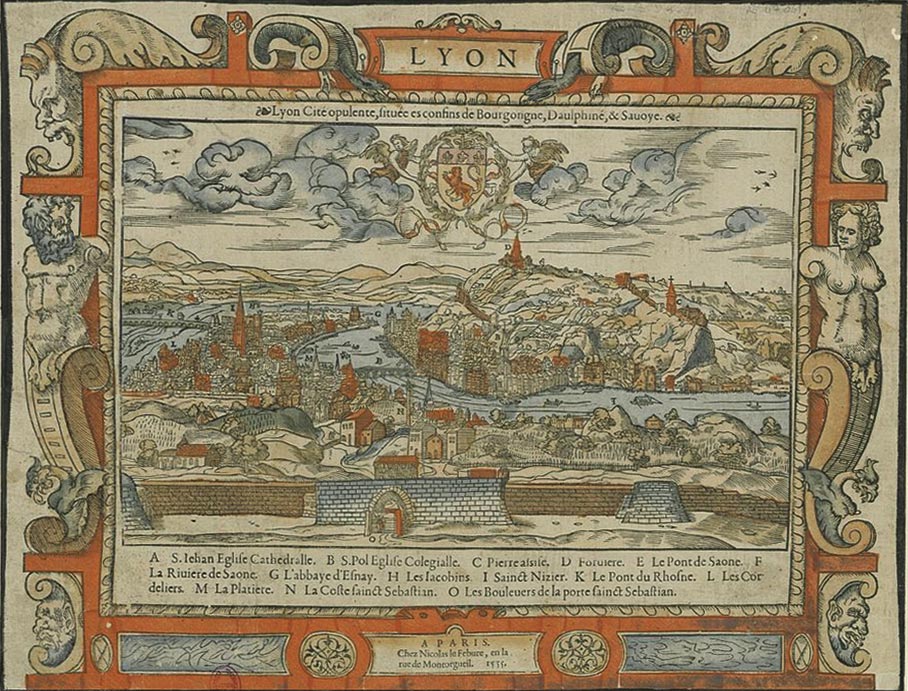
L’histoire de la lutherie à Lyon remonte au XVIème siècle, bien avant la renommée des luthiers lyonnais du XIXème siècle. Lyon, à cette époque, est une ville prospère en étroite relation commerciale avec l’Italie, important des produits de luxe prisés de l’aristocratie. La ville est aussi un important foyer culturel, berceau d’idées nouvelles, fréquenté par les humanistes, dont Erasme ou Rabelais. C’est dans ce contexte que Gaspar Tieffenbrucker, également connu sous le nom de Gaspard Duiffoprugcar, s’installe à Lyon. A l’époque, le rebec est en vogue et Tieffenbrucker décide de lui ajouter une quatrième corde pour en augmenter l’étendue. Depuis, il est ainsi fréquemment considéré comme l’inventeur du violon. Dans le même temps, plusieurs luthiers s’installent à Lyon, principalement issus de familles tyroliennes, faisant de la ville un important foyer de lutherie au XVIème siècle. Cependant, au XVIIème siècle, le pouvoir politique se centralise à Paris, amenant Lyon à perdre ses privilèges. La classe moyenne, autrefois prospère en raison de ses monopoles, entre dès lors dans un déclin économique. Les quelques luthiers ayant subsisté n’ont pas laissé de trace majeure dans l’histoire de la lutherie, étant pénalisés par le manque de musiciens professionnels établis à Lyon à l’époque. En effet, les politiques culturelles de Louis XIV et Louis XV ne favorisaient pas les échanges musicaux et, à la fin du XVIIème siècle, la France ne comptait plus que 46 luthiers, contre environ 400 en Italie et dans d’autres régions de l’Empire germanique.
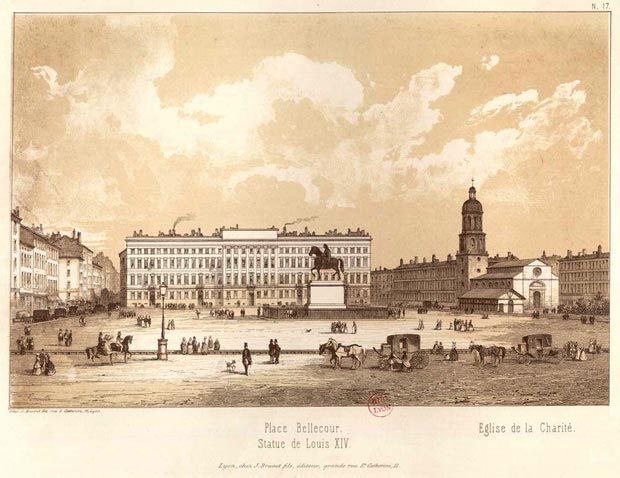
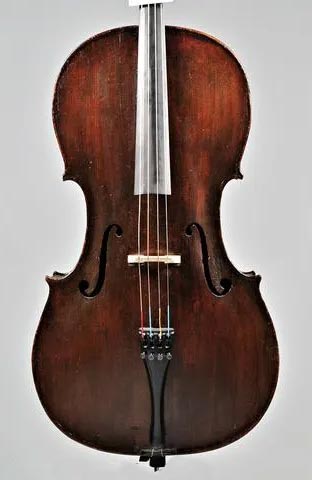
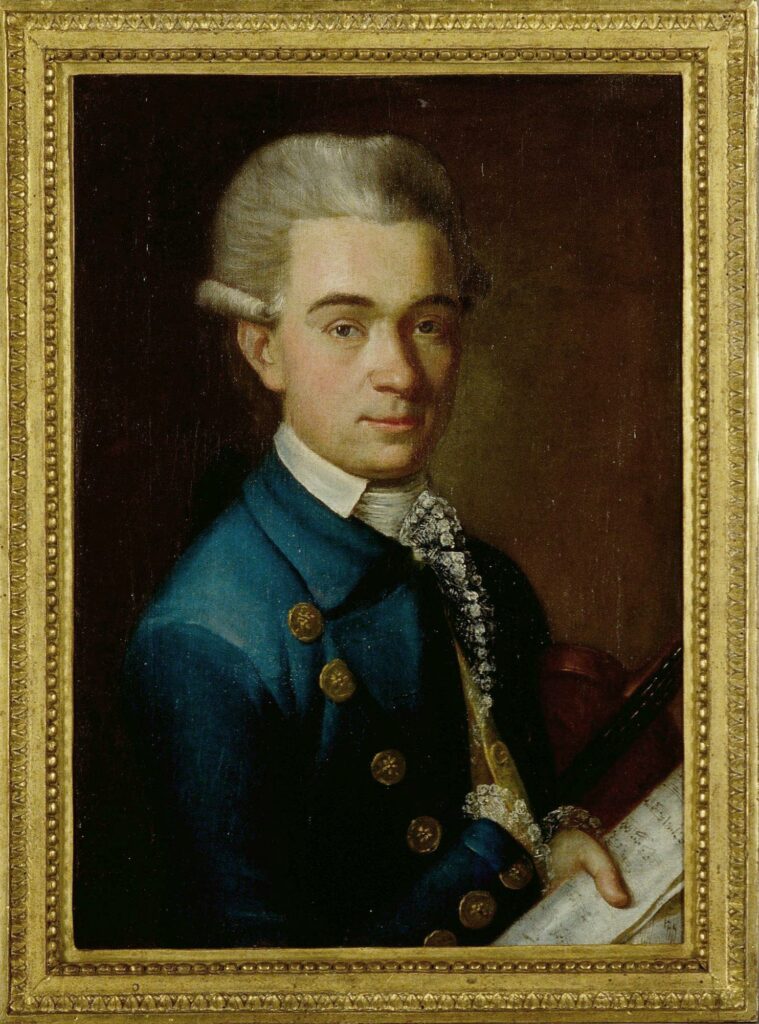
A la fin du règne de Louis XV, la politique culturelle encourage à nouveau les échanges artistiques, principalement avec le Saint-Empire romain germanique et l’Italie. Au XVIIIème siècle, quelques luthiers de renom sont actifs à Lyon, parmi lesquels Meriotte et Pommier. On assiste à un progessif renouveau de la lutherie à la fin du siècle, accéléré par l’arrivée en France, en 1782, du célèbre violoniste italien Giovanni Battista Viotti. Accompagné de son Stradivari, il donne à voir et à entendre un nouveau modèle de perfection, duquel la lutherie parisienne et, par ricochet, la lutherie lyonnaise, voudra se rapprocher. Au début du XIXème siècle, Lyon devient une importante ville de garnisons (voir l’article suivant), conduisant également au développement de la musique militaire et à la facture d’instruments à vent. De même, l’essor économique que connaît Lyon favorise l’activité des luthiers d’instruments à cordes. Beaucoup d’entre eux partent se former à Paris dans de grands ateliers, avant de revenir s’établir à Lyon.
Empreints des savoir-faire parisiens, eux-mêmes influencés par les maîtres italiens, ces luthiers lyonnais du XIXème siècle n’en élaborent pas moins un style personnel. Pour répondre à la demande croissante d’instruments, ils collaborent parfois avec les luthiers de Mirecourt pour fournir les musiciens. Bien que le terme d’ « école lyonnaise » soit couramment utilisé, il ne désigne pas une école au sens strict, mais plutôt un groupe de luthiers qui a prospéré à Lyon au XIXème siècle et qui, malgré des identités stylistiques personnelles et variées, partageaient certaines manières de faire, quelles soient techniques ou esthétiques. Jean-Frédéric Schmitt, à l’origine d’un des rares ouvrages sur la lutherie lyonnaise, met notamment en évidence le fait que les instruments lyonnais de cette époque présentent fréquemment de fausses chevilles, des culs-de-poule (arrière de la tête) anguleux, des coulisses en forme de « U » ou encore des vernis souvent très rouges[1].
[1] J.F. Schmitt, La lutherie lyonnaise, 1991
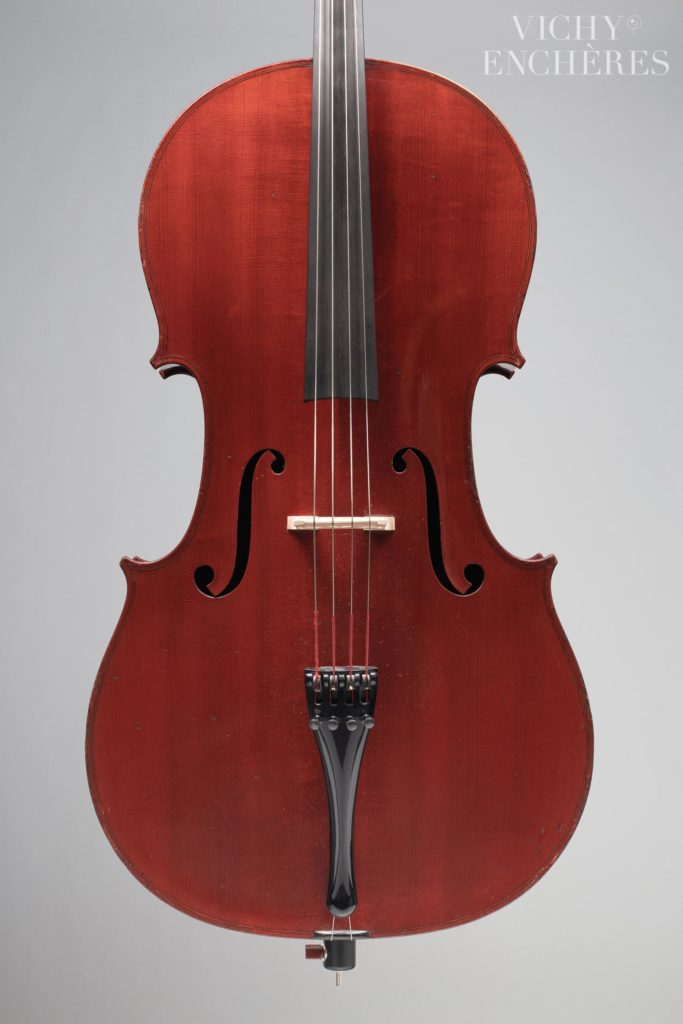
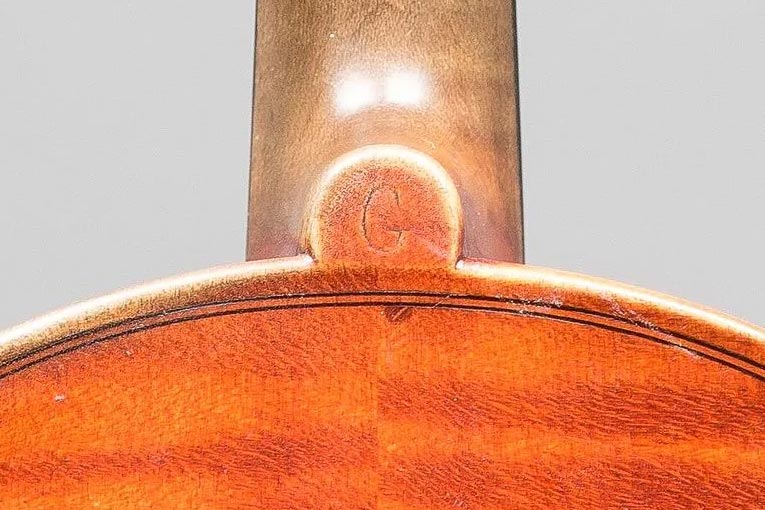
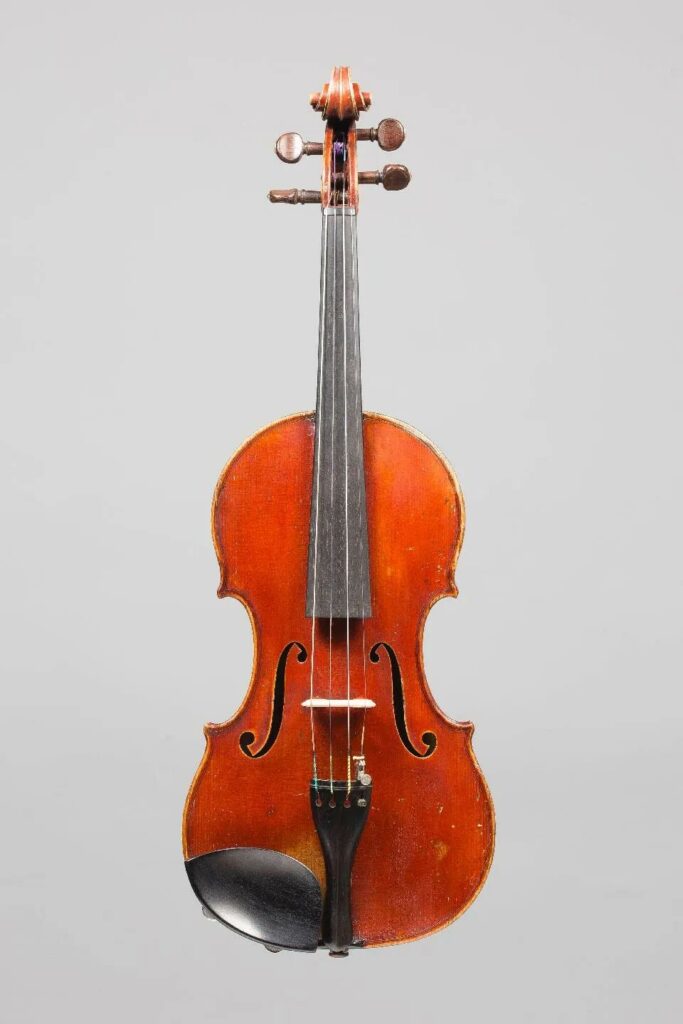
Les Silvestre font partie des premiers luthiers d’instruments du quatuor à s’installer à Lyon au XIXème siècle et ont, à ce titre, grandement participé à la renaissance de cette lutherie lyonnaise. Pierre Silvestre est né le 9 août 1801 à Sommerviller d’un père qui, chose originale, fut moine avant de devenir instituteur après la Révolution française. En 1818, alors âgé de 17 ans, Pierre Silvestre entame son apprentissage chez Laurent Blaise à Mirecourt, où il acquiert les bases de la lutherie. Son désir de perfectionnement le pousse à gagner Paris, où il entre dans l’atelier de Nicolas Lupot. A la mort de ce dernier en 1824, il rejoint l’atelier de Charles-François Gand (Gand Père). Toutefois, il décide de s’installer à Lyon en 1829, où il fonde son propre atelier Place des Terreaux. Certains modèles de cette époque sont éloignés de ce qu’il fera par la suite et il n’est pas impossible qu’il s’agisse de créations de luthiers de Mirecourt, à qui Pierre Silvestre aurait demandé de l’aide pour répondre à la demande.
En 1831, il s’associe à son frère Hippolyte et travaille avec lui jusqu’en 1848. La Maison prend alors le nom de Silvestre Frères. Ils réalisent ensemble de nombreuses copies d’instruments italiens et il est assez aisé de reconnaître la main d’Hippolyte, encore sous l’influence de Vuillaume, son précédent maître.
Hippolyte quitte l’atelier en 1848. Commence alors une nouvelle période dans la production de Pierre Silvestre, souvent reconnue comme sa période d’or, s’étendant de 1848 à 1859.
Durant cette période, il réalise en effet des instruments de grande qualité, se distinguant par leur très beau et délicat vernis.
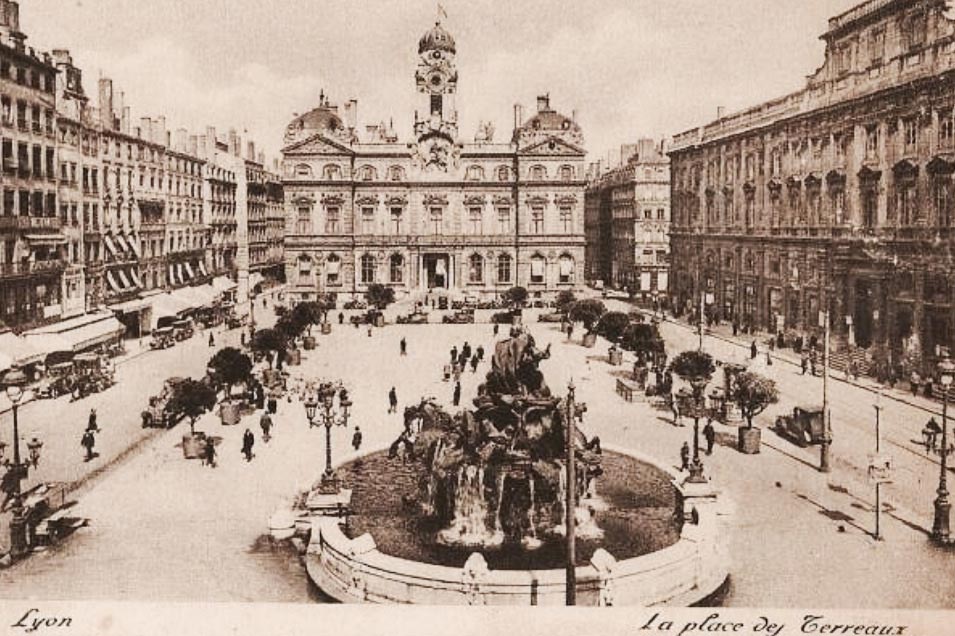
Il ajoute aussi parfois sur ses instruments des petites têtes de femmes ornant les manches ou encore des chevilles à incrustations figuratives.
En 1844, il participe à l’Exposition nationale de Paris où il remporte la médaille de Bronze et en 1855, ses instruments sont récompensés d’une mention honorable à l’Exposition universelle de Paris, consolidant ainsi sa réputation de luthier de premier ordre.
A sa mort en 1859, l’entreprise est reprise durant quelques mois par Pichon avant qu’il ne la cède à Hippolyte. Pierre Silvestre a marqué de son nom le monde de la lutherie lyonnaise et a été parmi les premiers à contribuer à son renouveau au XIXème grâce à ses instruments de grande qualité recherchés pour leur sonorité.
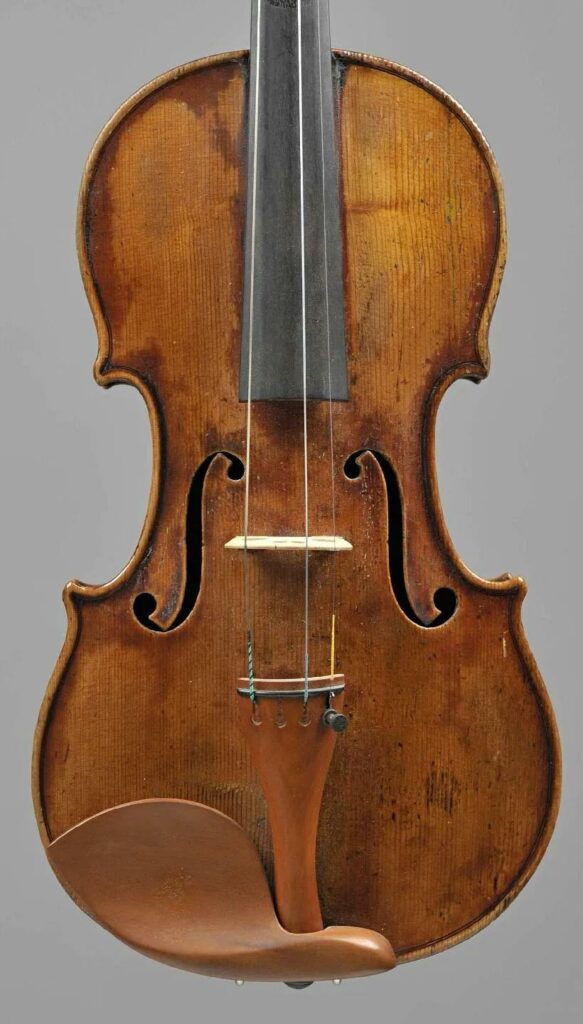
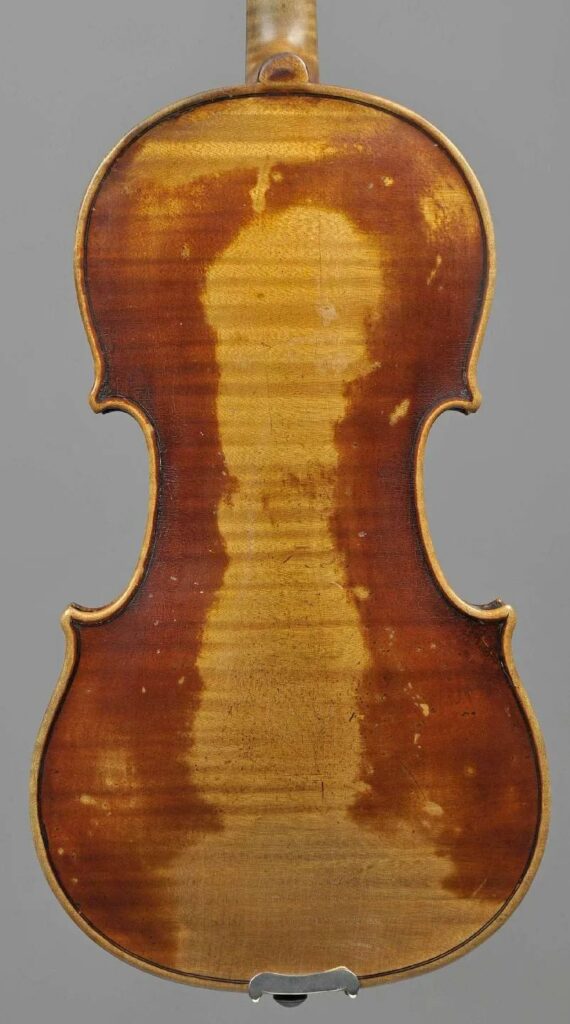
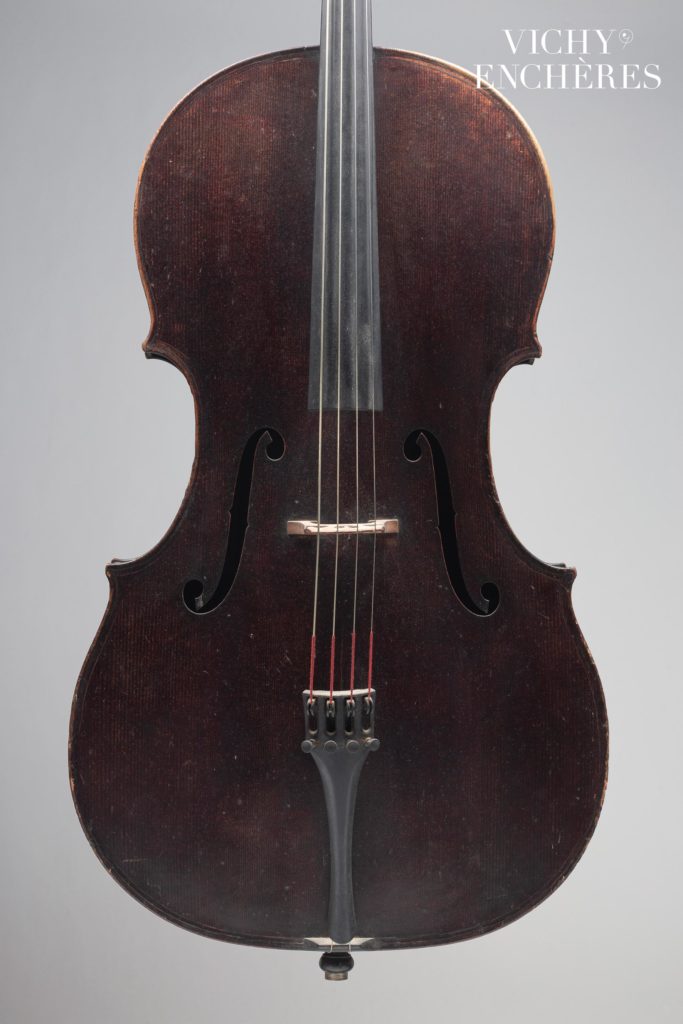
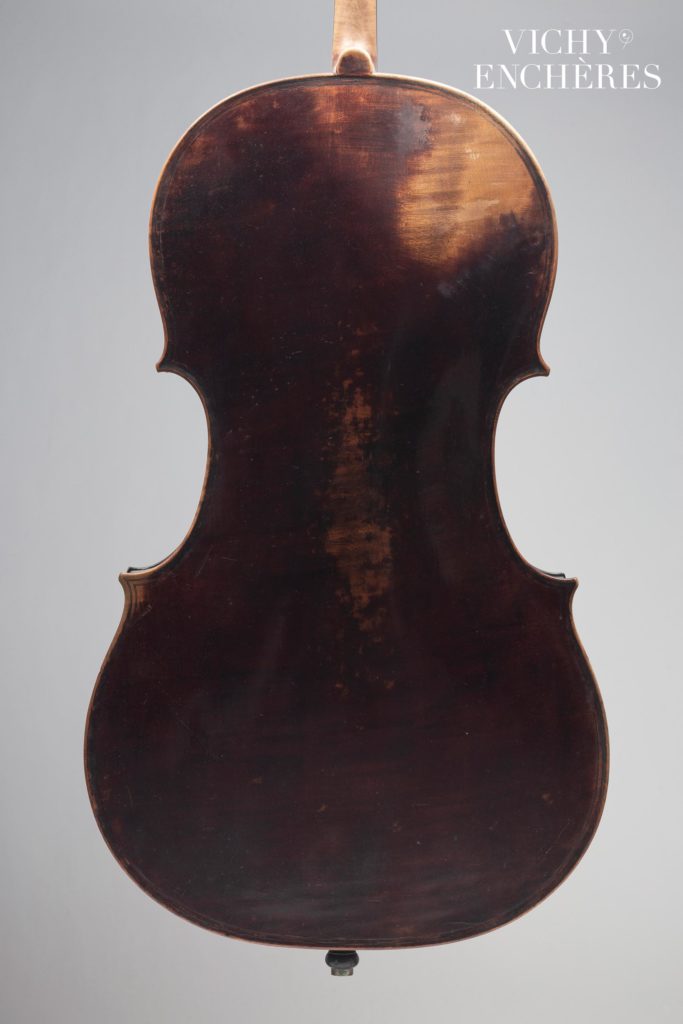
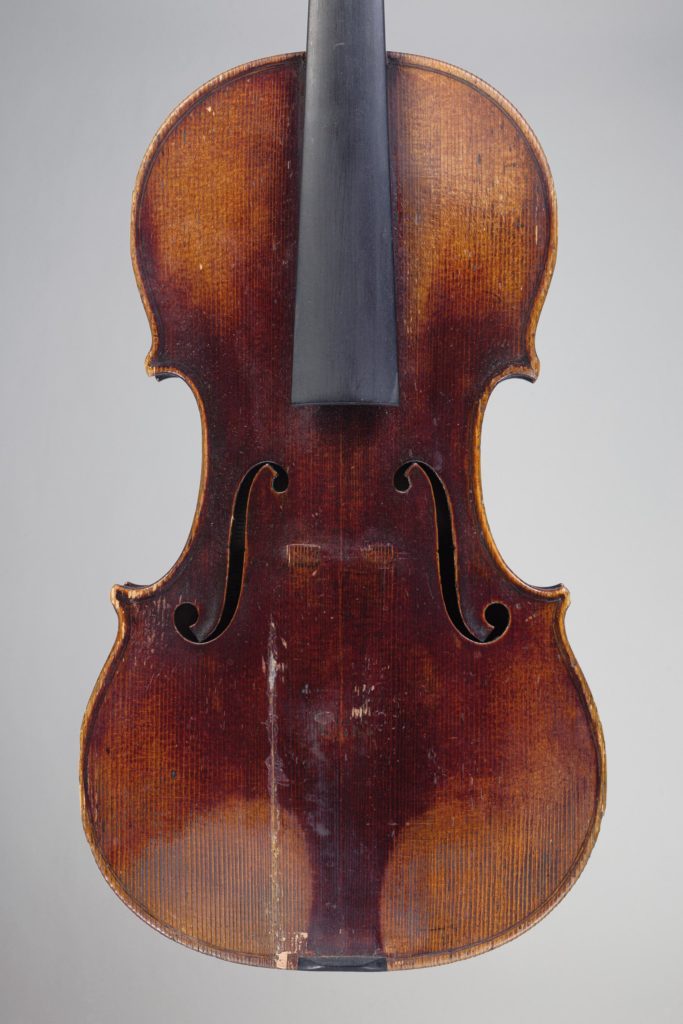
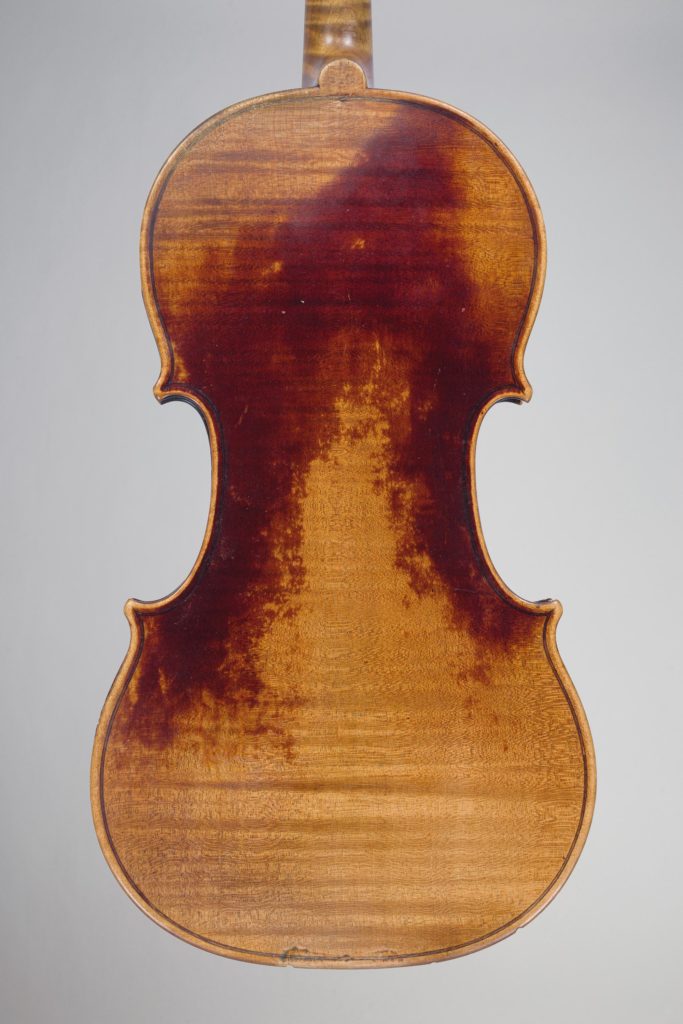
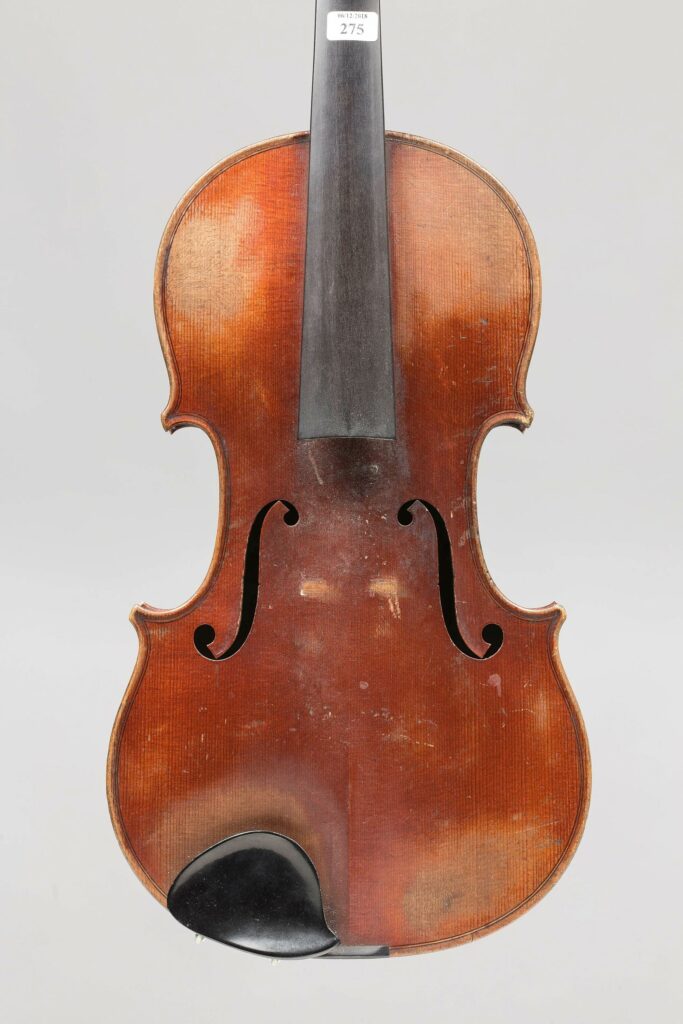
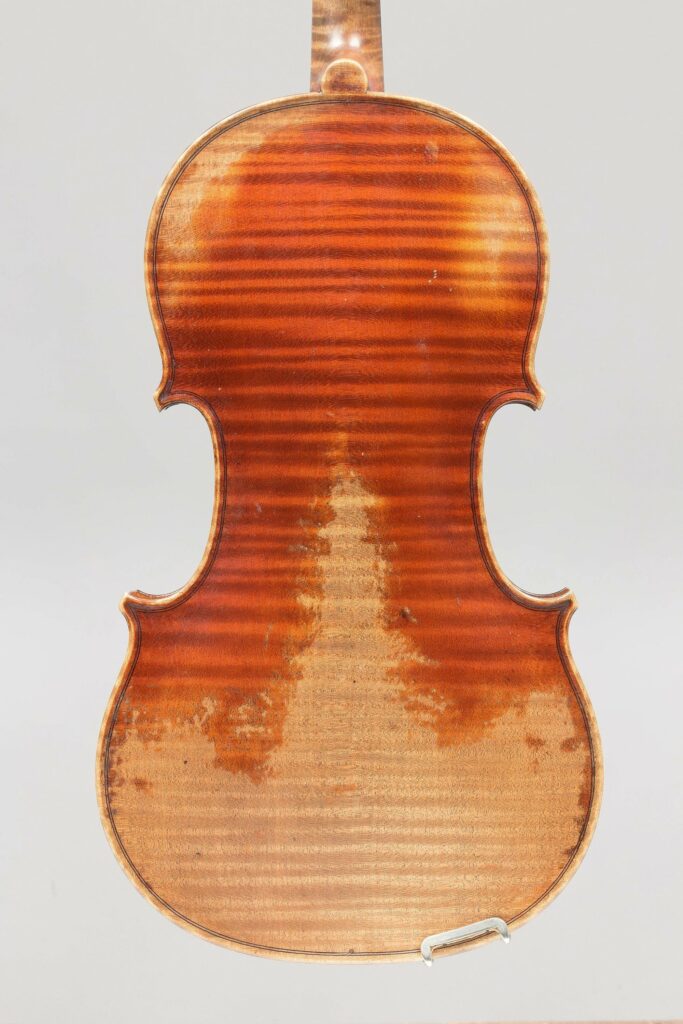
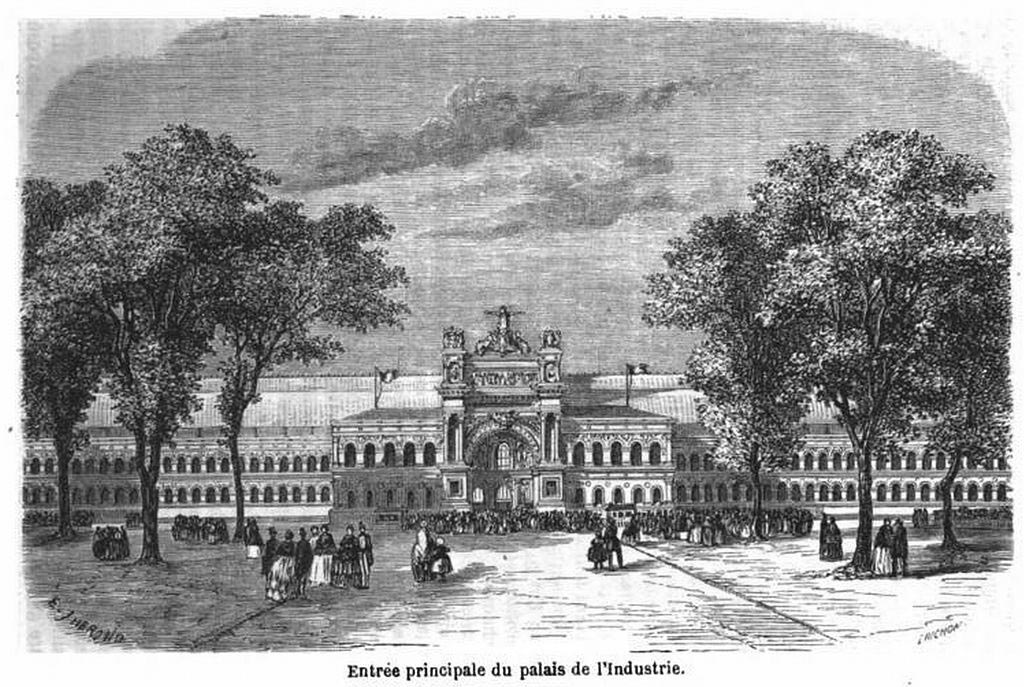
Né le 14 décembre 1808 à Saint-Nicolas-de-Port, Hippolyte Silvestre suit le chemin de son frère Pierre en entrant en apprentissage chez Laurent Blaise à Mirecourt. A la fin des années 1820, tout comme l’avait fait avant lui Pierre Silvestre, il rejoint Paris pour se perfectionner dans l’atelier d’un grand maître : Jean-Baptiste Vuillaume. Finalement, il retrouve son frère à Lyon en 1831 et collabore avec lui jusqu’en 1848. Durant cette première période, l’influence de Vuillaume est perceptible dans sa facture, mais il est également fortement marqué par le style de son frère Pierre. Cependant, le vernis appliqué sur ses créations était souvent plus fin que celui de Pierre.
Entre 1848 et 1859, Hippolyte Silvestre s’installe à son propre compte et réalise des instruments de belle qualité, à l’image du remarquable violon de la vente du 30 novembre 2023, fabriqué vers 1850-1855.
À la mort de Pierre Silvestre en 1859, il reprend l’atelier et continue la production d’instruments s’inscrivant stylistiquement dans la lignée de son frère.
En 1865, il cède finalement l’atelier à son neveu, Hippolyte Chrétien Silvestre, assurant la filiation de la dynastie. Hippolyte Silvestre meurt le 3 décembre 1879 à Sommerviller, laissant derrière lui un héritage durable dans le monde de la lutherie.
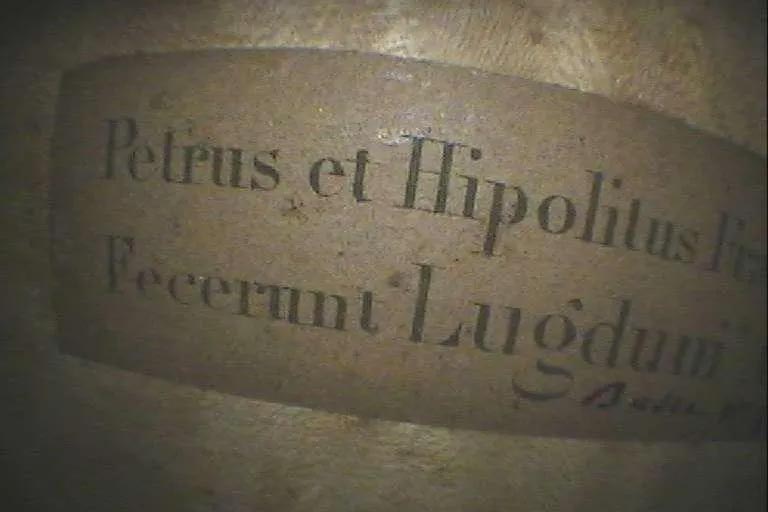
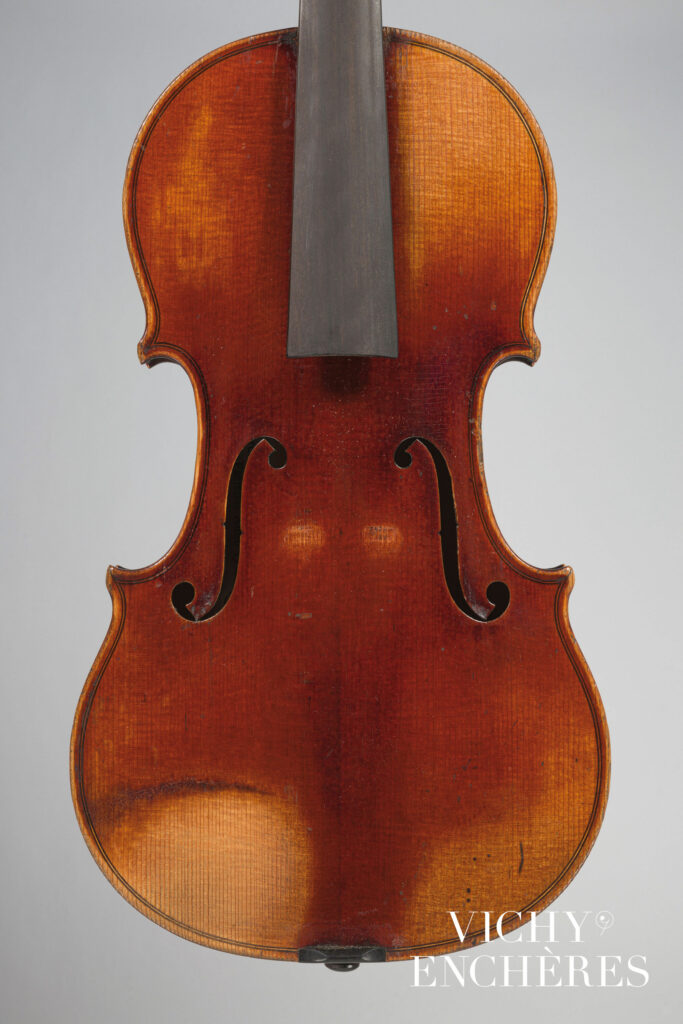
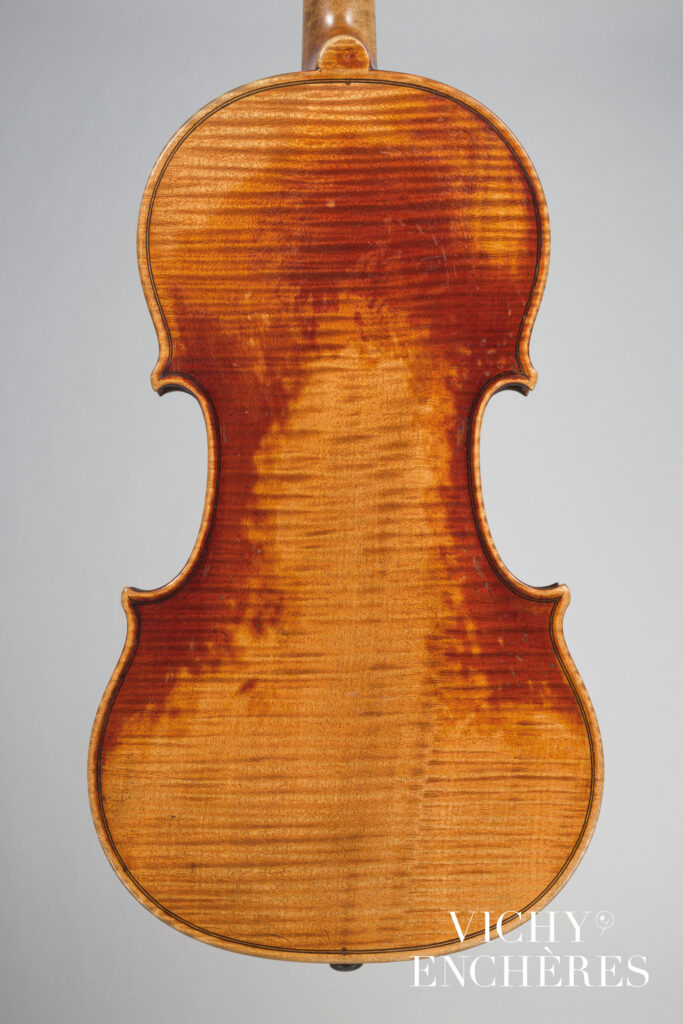
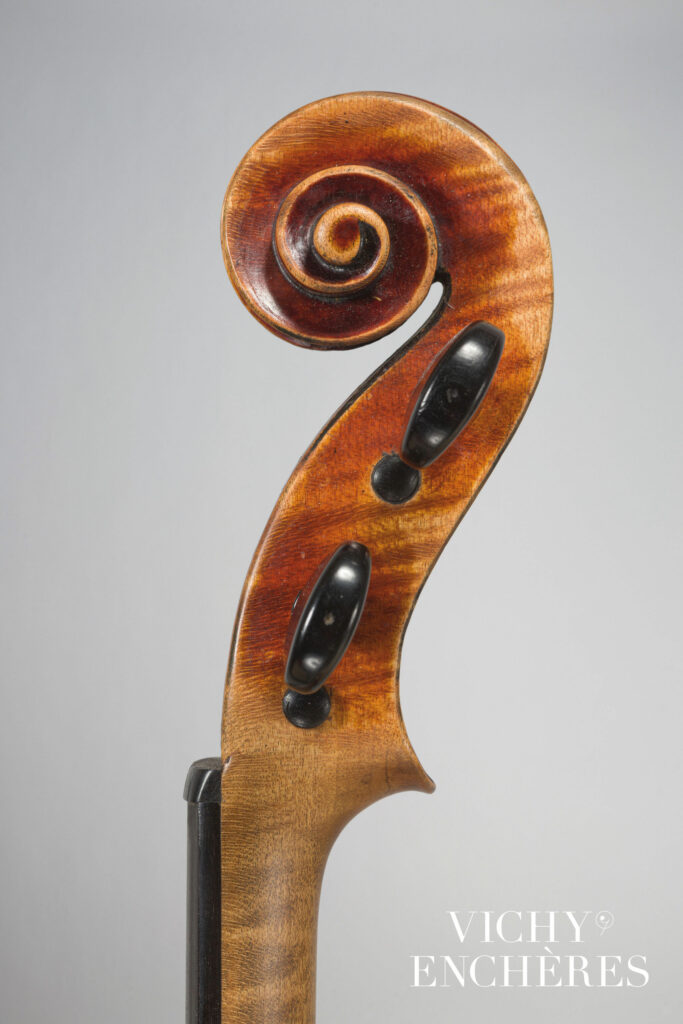
Hippolyte Chrétien Silvestre, mieux connu sous le nom de « Silvestre Neveu » – en référence à son lien de parenté avec son oncle – est né le 1er avril 1845 à Sommerviller. A l’instar des luthiers de la famille l’ayant précédé, il effectue son apprentissage à Mirecourt avant de rejoindre l’atelier lyonnais. En 1865, alors qu’il n’a que vingt ans, il succède à son oncle à la tête de l’entreprise.
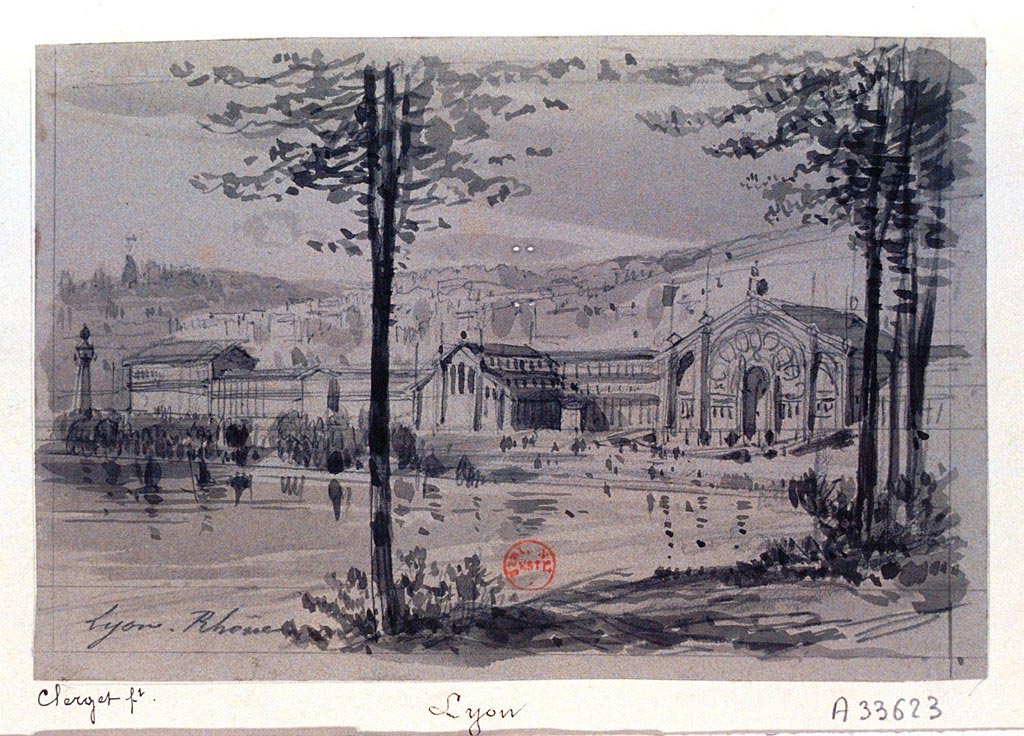
Ses instruments rencontrent un vif succès aux différentes expositions phares de son temps. Il remporte ainsi la médaille d’argent à l’Exposition de Lyon de 1872, la médaille de progrès à l’Exposition universelle de Vienne en 1873, la médaille d’argent à l’Exposition universelle de 1878, la médaille d’or à l’Exposition universelle de Paris, et enfin le Grand Prix à l’Exposition universelle de 1900. Autrement significatif de l’estime dont il jouissait, il est nommé à la Légion d’Honneur. En 1884, il quitte Lyon pour Paris, où il s’installe rue du Faubourg Poissonnière (successivement aux numéros 24, 20 et 25).
En 1891, il demande à Ernest Maucotel, alors employé dans l’atelier moscovite de Salzard, de devenir son collaborateur. Ils s’associent finalement en 1900 et fondent la Maison Silvestre et Maucotel pour laquelle il œuvre jusqu’à sa mort en 1913. Avec Maucotel, ils réalisent notamment des instruments influencés par les maîtres vénitiens.
Soulignons enfin que de nombreux « violons » attribués à Hippolyte Chrétien Silvestre sont probablement l’œuvre de Blanchard, qui travaille dans l’atelier au début de sa carrière. Selon Schmitt, ce sont les instruments estampillés “H.C. Silvestre” réalisés entre 1873 et 1876 qui ont été fabriqués par Blanchard, y compris en ce qui concerne leurs finitions et vernis[2].
[2] J.F. Schmitt, La lutherie lyonnaise, 1991
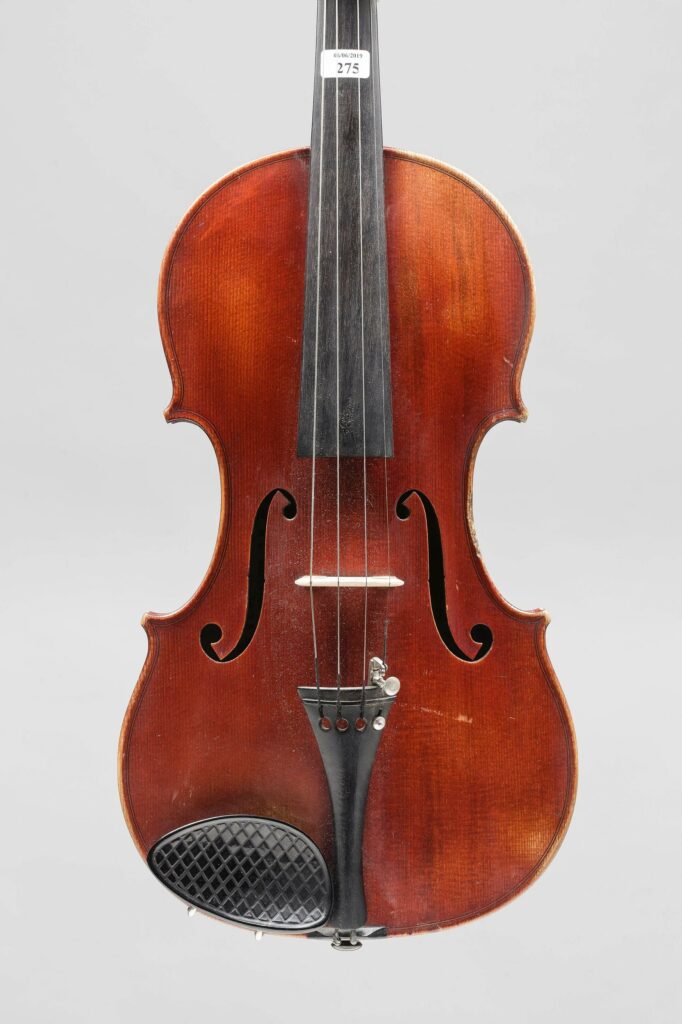
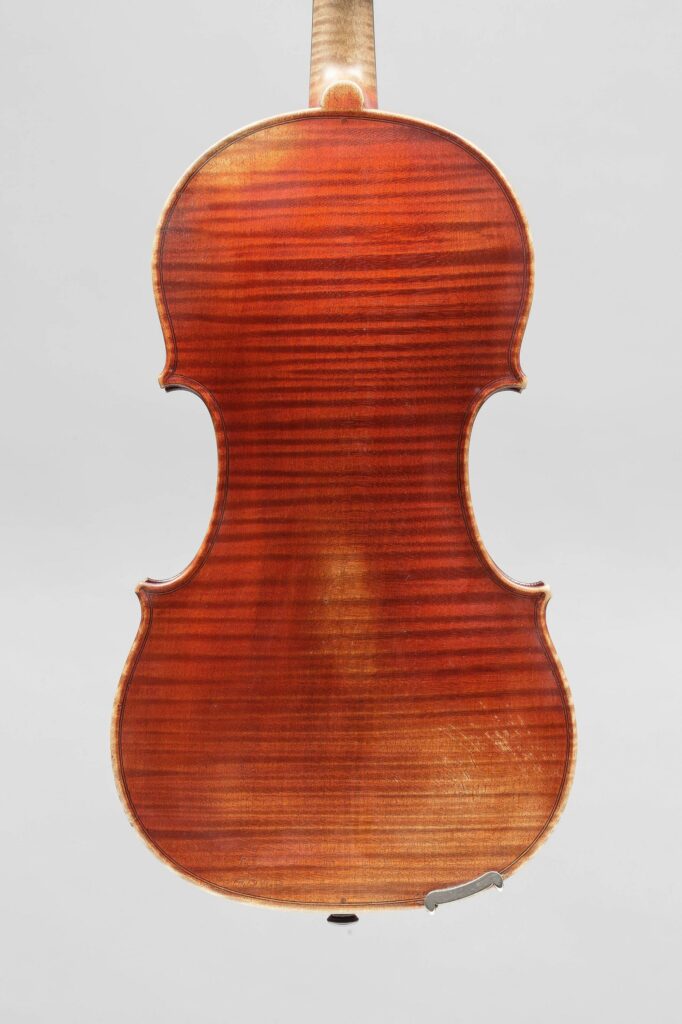
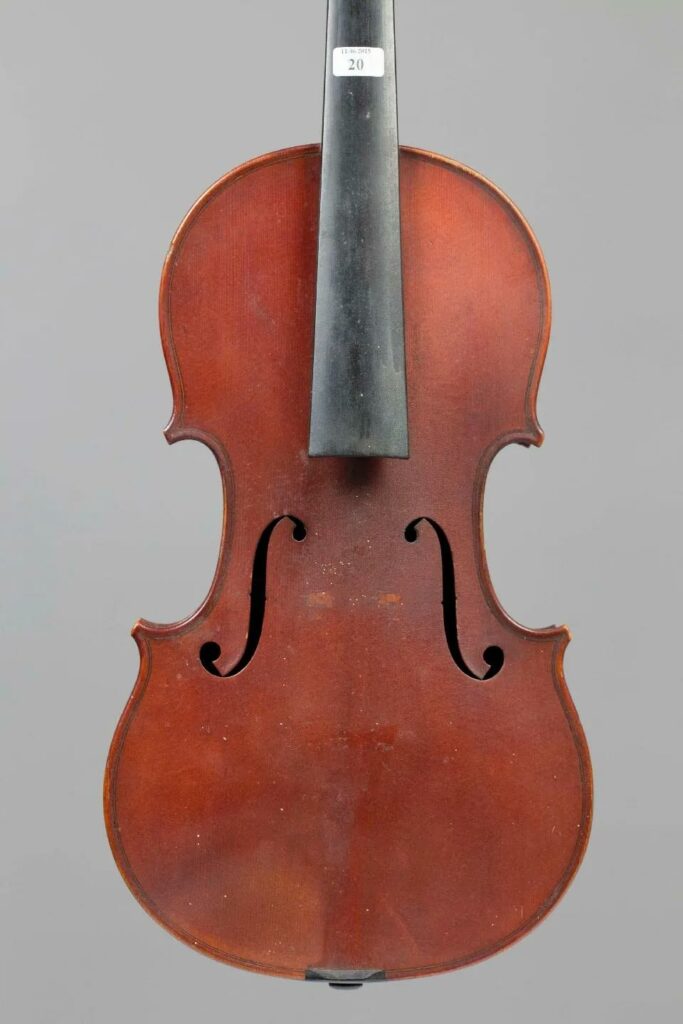
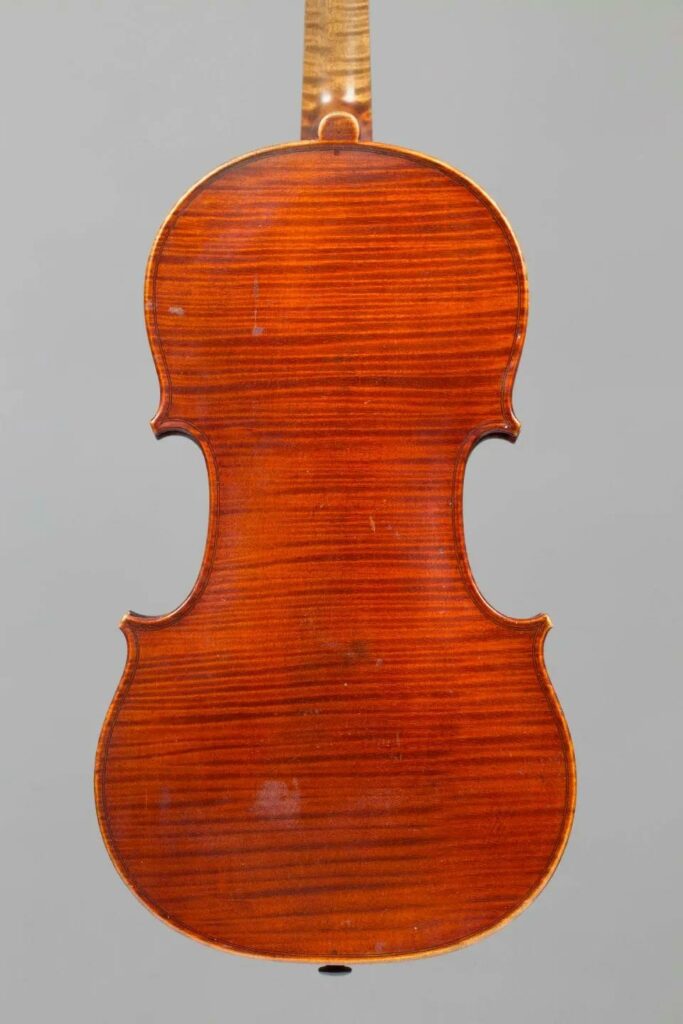
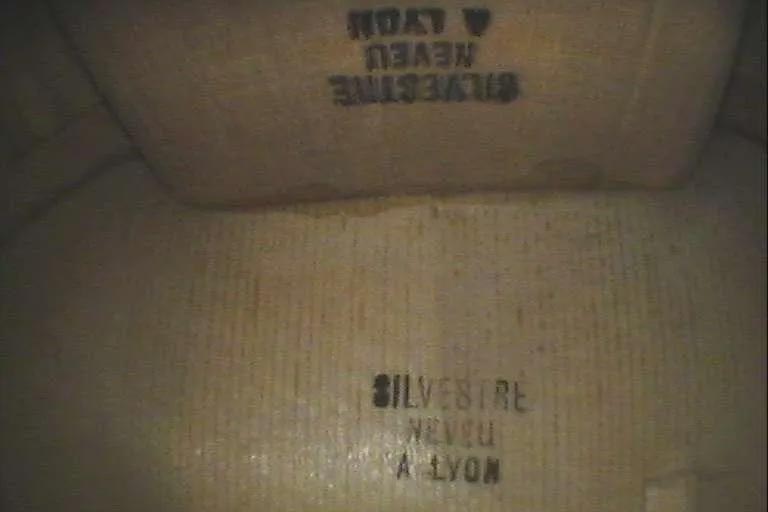
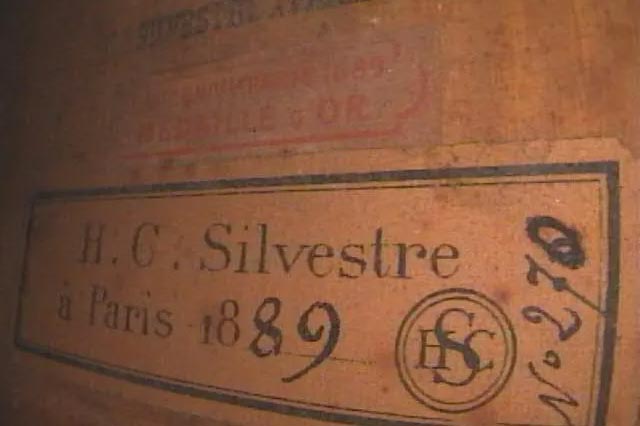
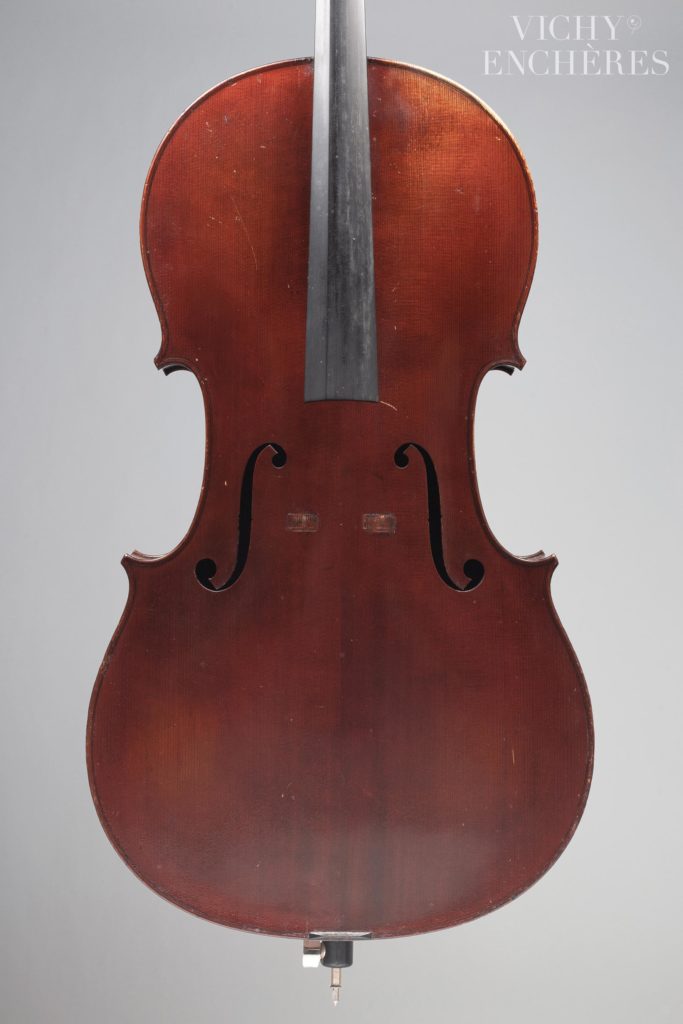
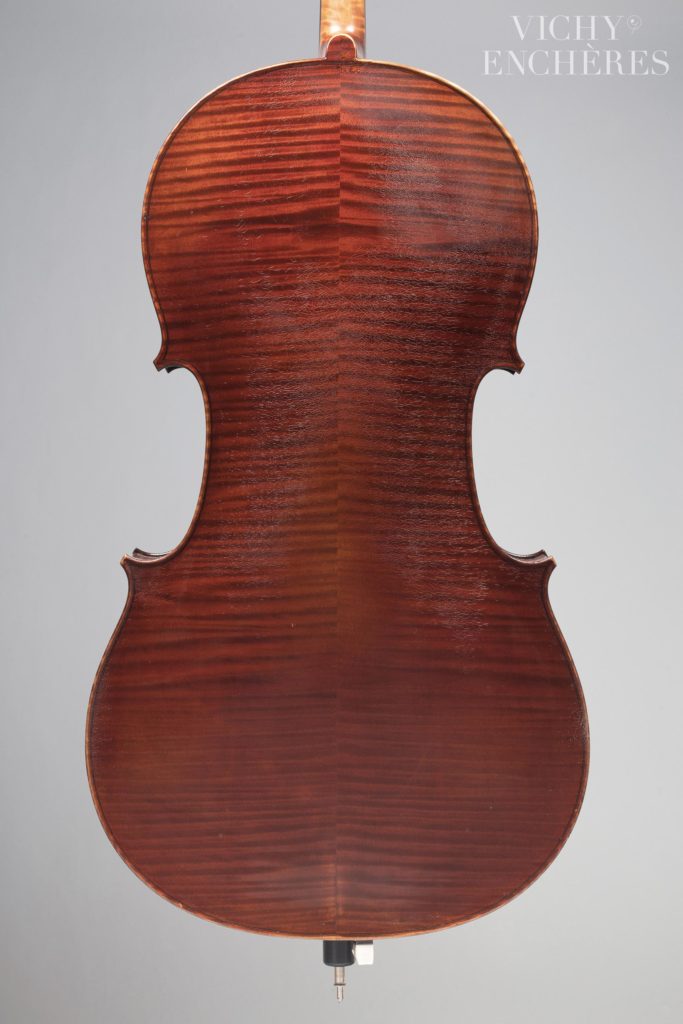
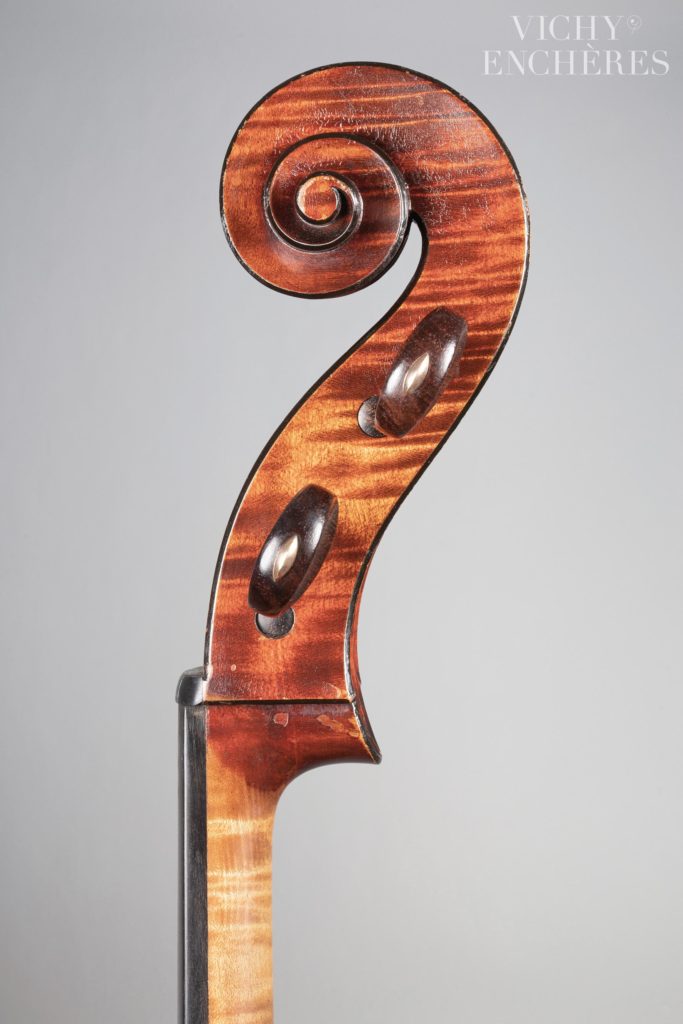
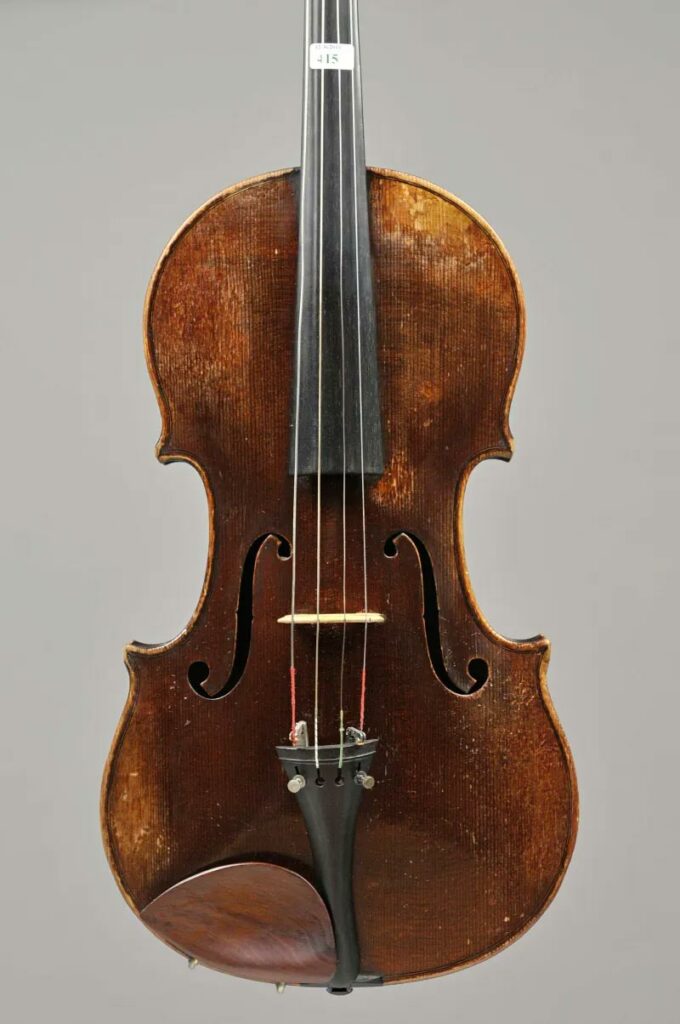
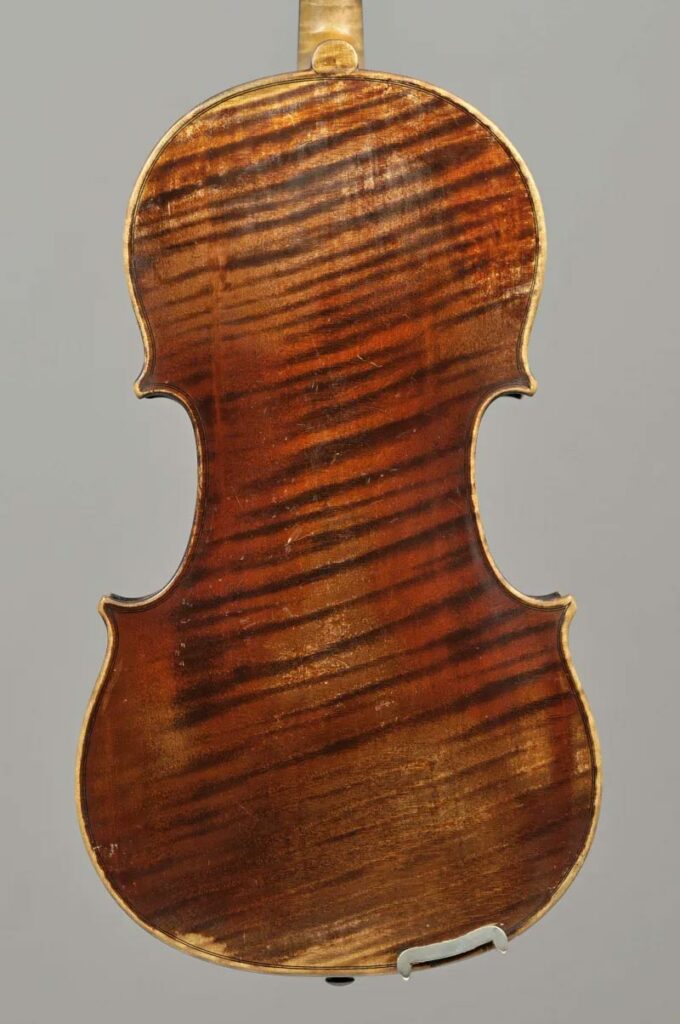
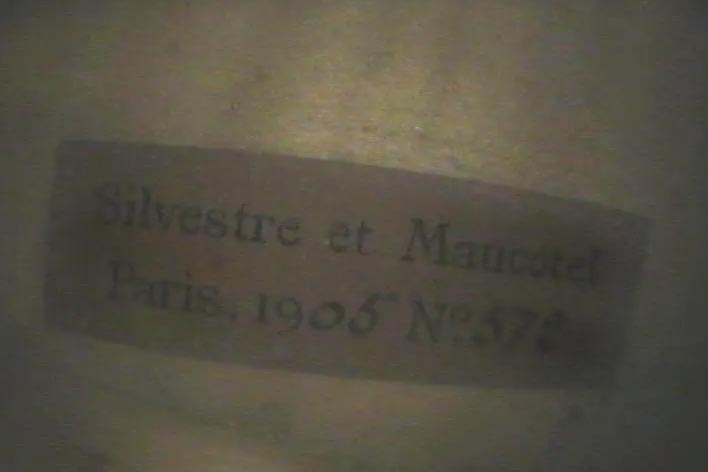
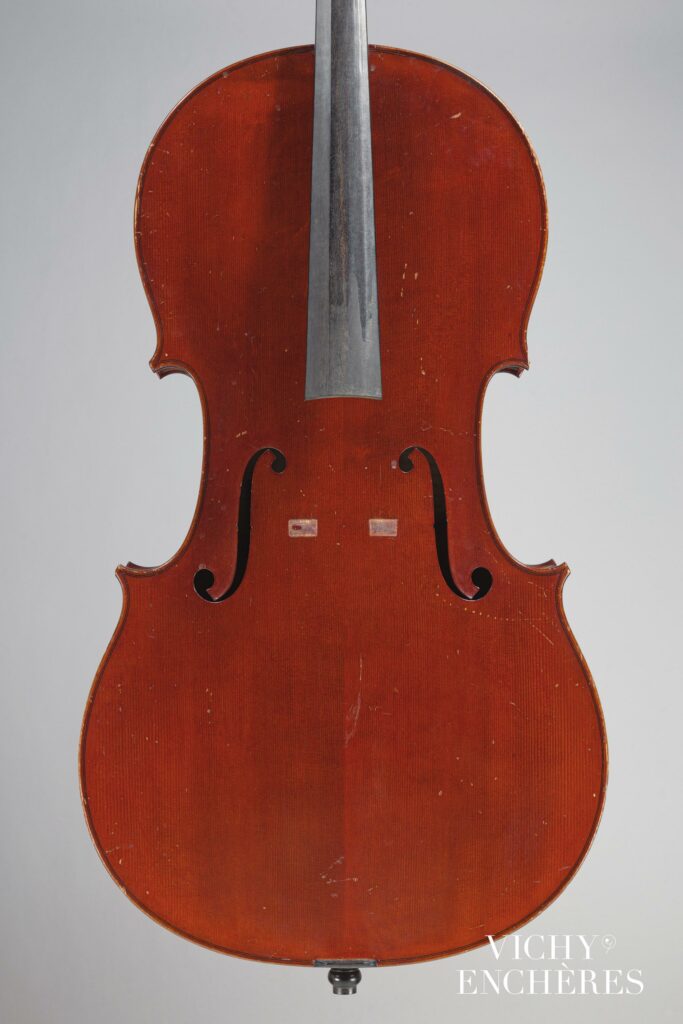
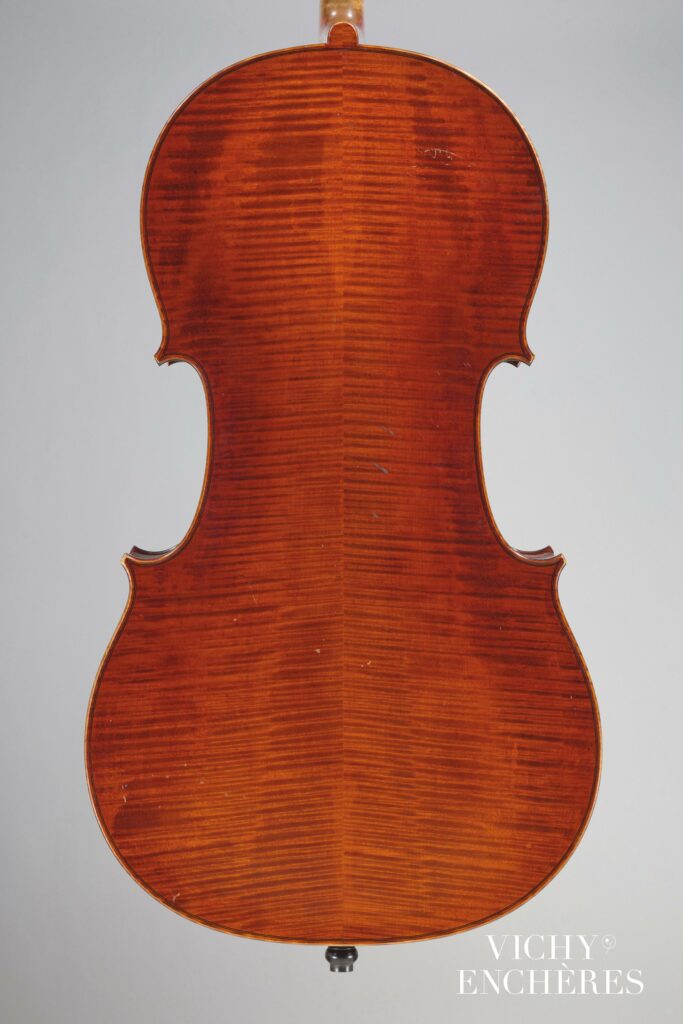
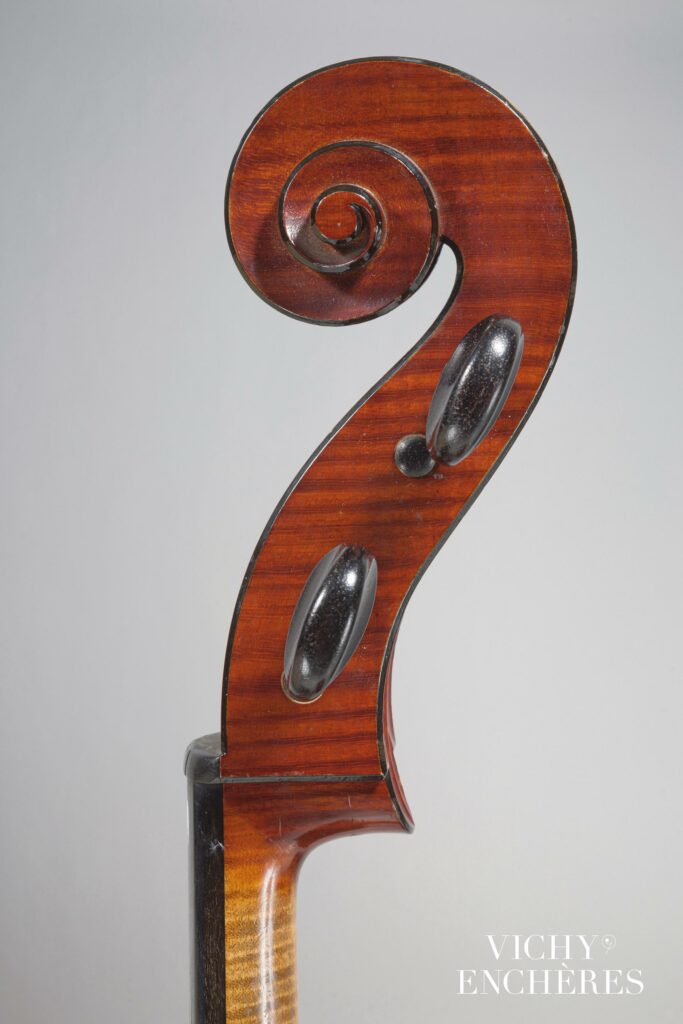
S’il est un nom associé à la lutherie lyonnaise, c’est bien celui de Blanchard. Natif de Mirecourt, Paul-François Blanchard (1851-1912) fait partie de ces luthiers itinérants qui se sont formés dans les plus grands ateliers avant de s’établir à leur compte. Entre Mirecourt et Paris, il se forme ainsi auprès de Jean-Auguste Darte, de Jean-Baptiste Vuillaume et des Silvestre (cf ci-dessus). Après sept années de travail dans cette dernière maison, c’est âgé de seulement vingt-cinq ans qu’il s’installe à son compte à Lyon, en 1876.
Le 30 novembre 2023, le tout premier violon réalisé par Blanchard alors qu’il vient seulement d’ouvrir son atelier sera mis en vente à Vichy Enchères ! Il s’agit d’une pièce historique et d’une découverte conséquente dans l’histoire de la lutherie lyonnaise. Daté de 1876, cet exceptionnel violon a été construit par Blanchard à son arrivée à Lyon, comme l’indique son étiquette “Fait par Paul BLANCHARD / P.B. à Lyon en 1876 N°1”. Conçu en modèle Guarneri del Gesu, il porte également les marques au fer du luthier à l’intérieur, ainsi qu’une signature manuscrite précisant l’année, la localisation et son numéro 1. Sur un total d’environ 1200 instruments réalisés, il est inouï que ce premier instrument fabriqué par Blanchard ressorte aujourd’hui. Plus qu’un instrument, il nous offre un document historique et est jalon fondamental de la carrière de Blanchard.
Comme le souligne J.F. Schmitt, on peut distinguer deux grandes périodes dans sa production. La première couvrant le début de sa carrière jusqu’en 1885, durant laquelle ses créations portent davantage l’influence stylistique des Silvestre. A cette époque, on constate notamment que les filets de ses instruments sont particulièrement fins et qu’il regarde du côté des maîtres italiens, interprétant les modèles de Stradivari, Amati ou Guarneri – comme c’est le cas de ce tout premier violon.
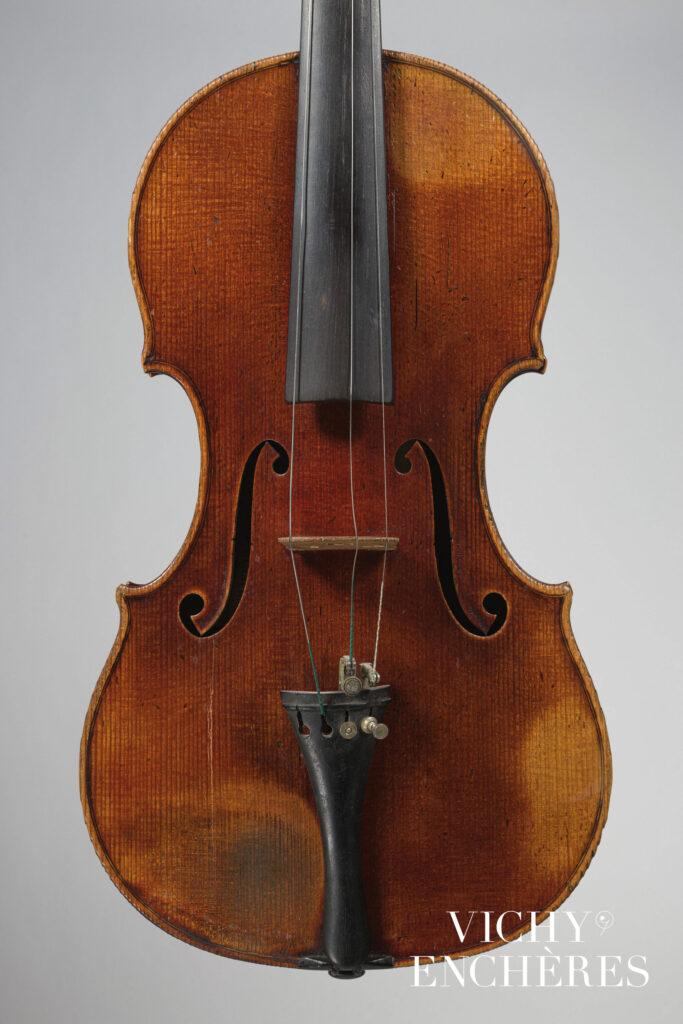
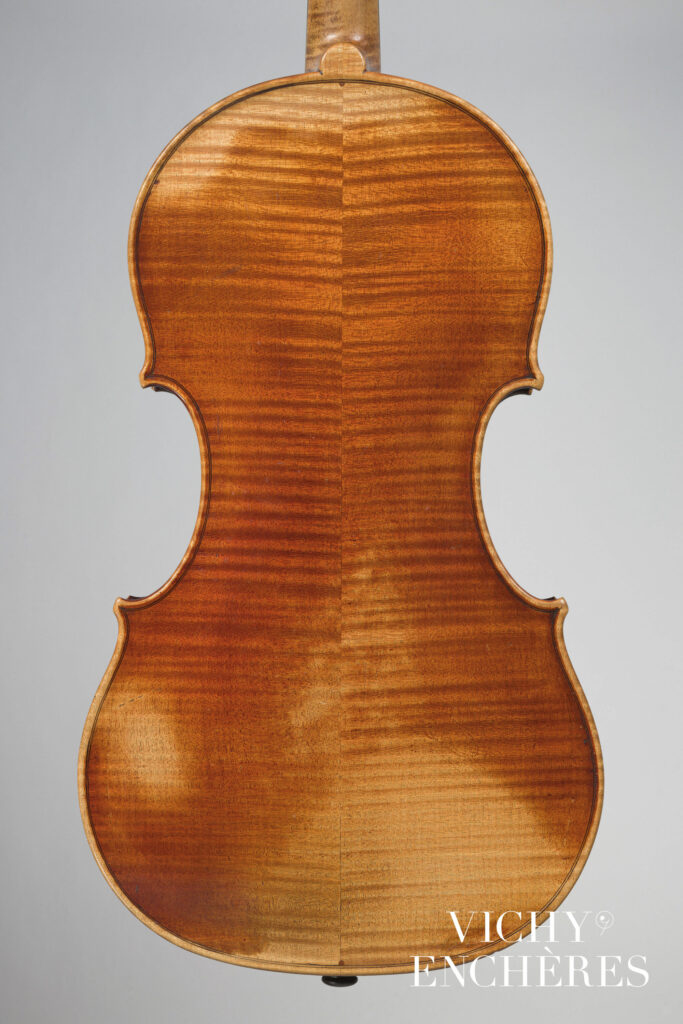
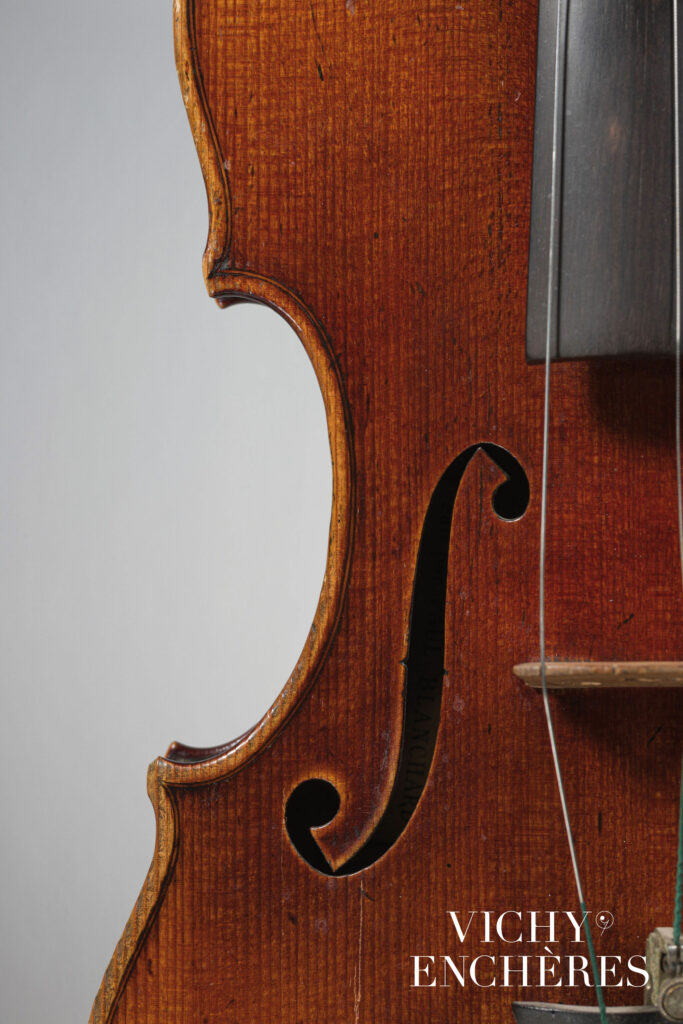
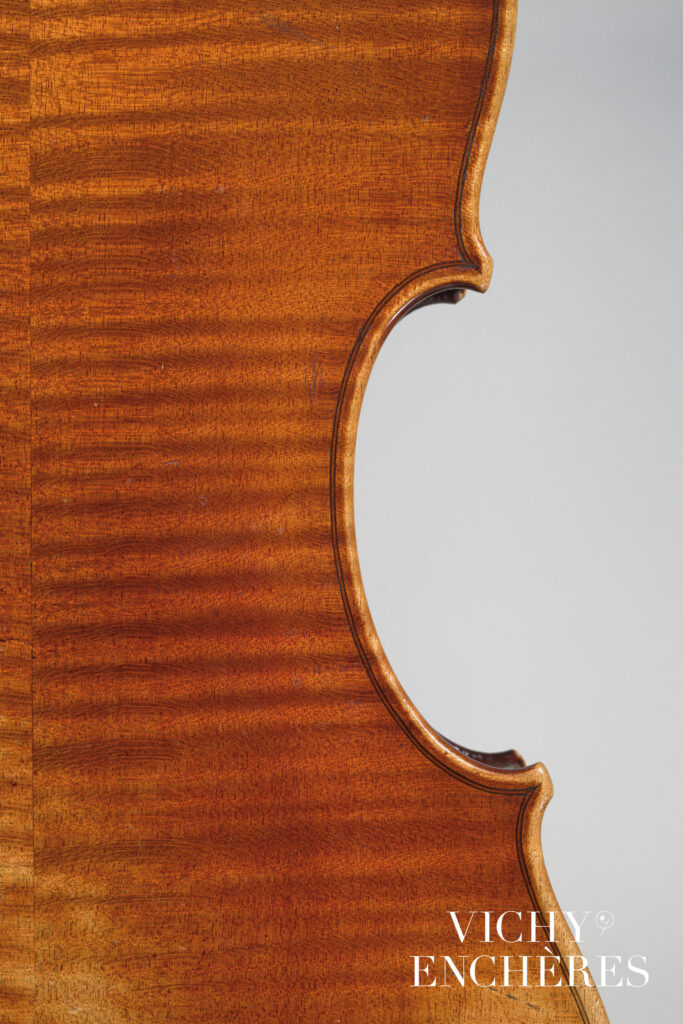
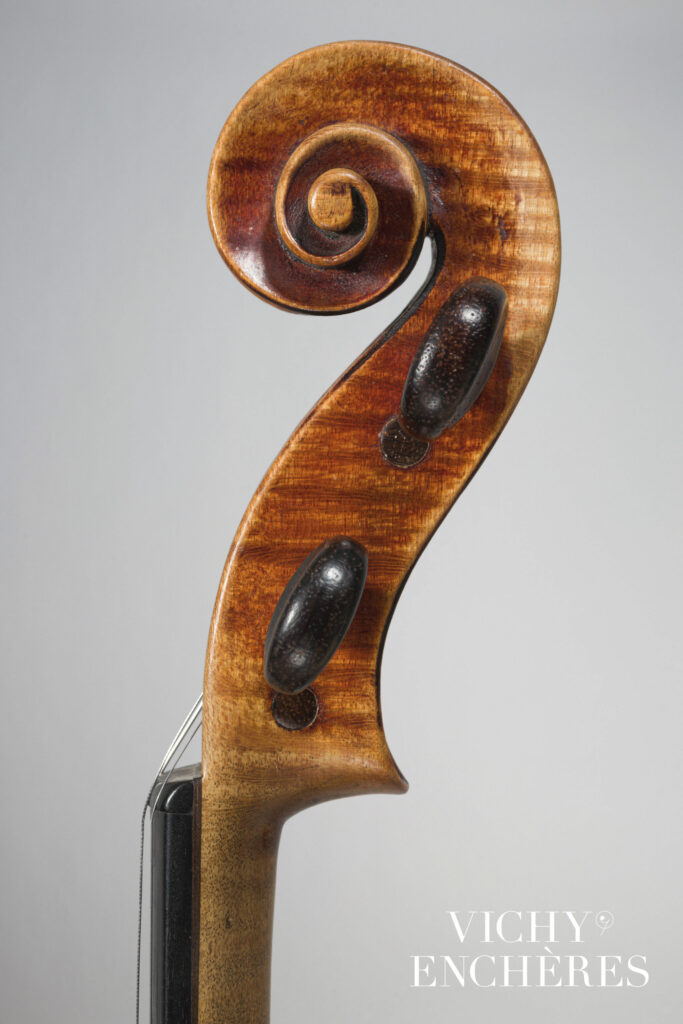
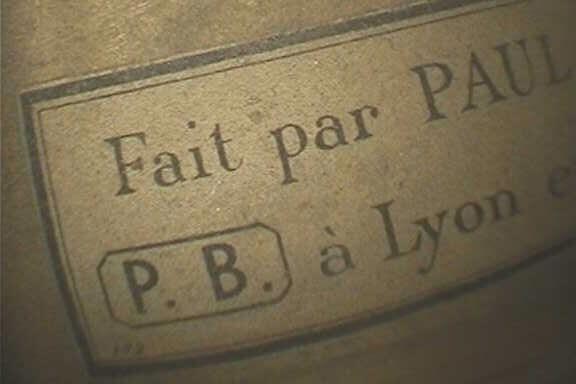
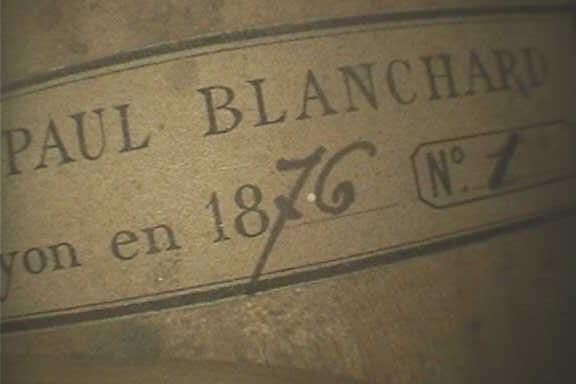
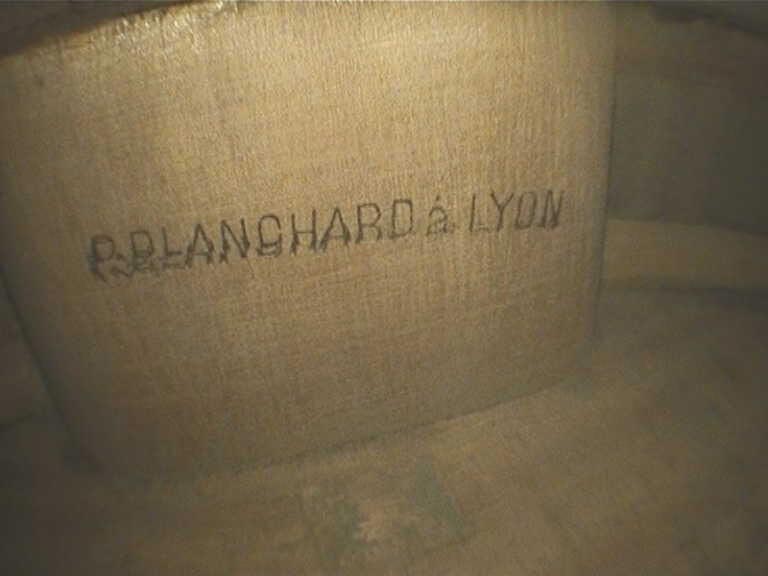
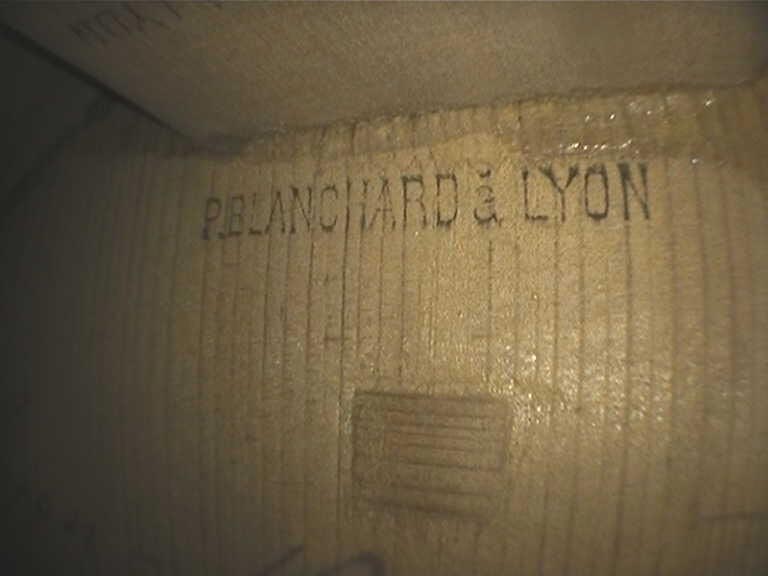
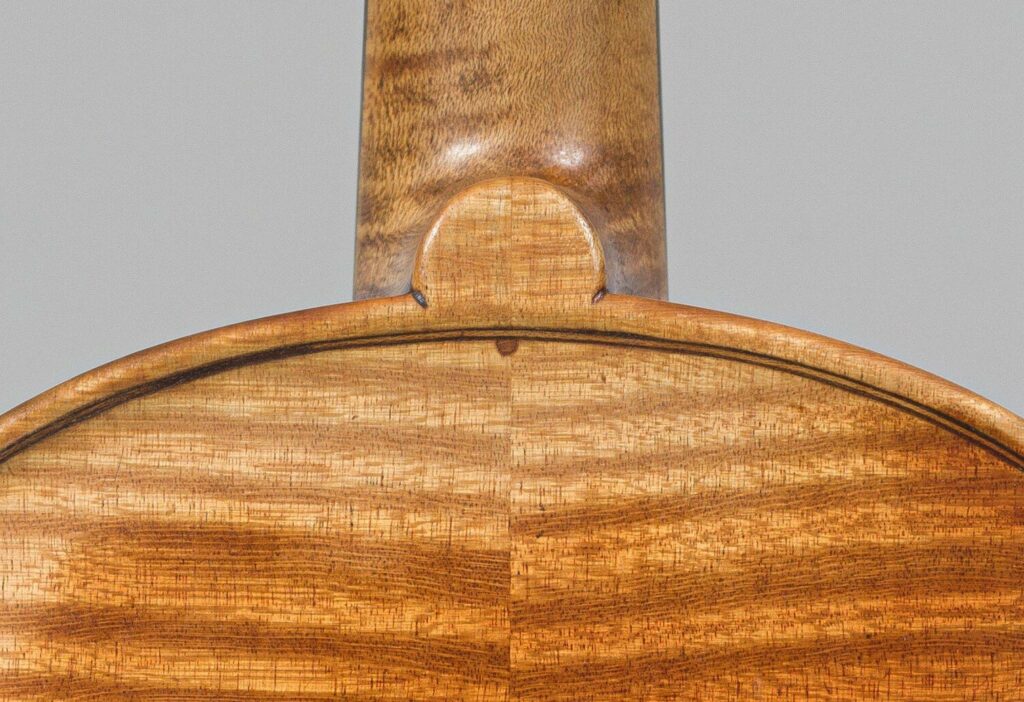
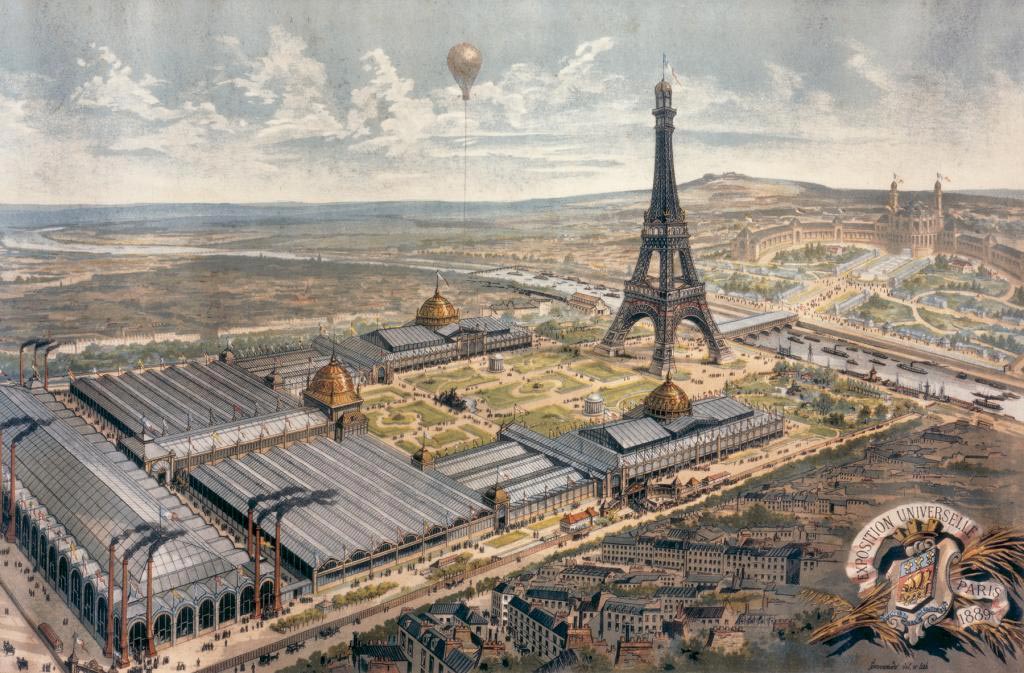
A partir de 1885 se dessine une nouvelle phase dans la production de Blanchard. Le style de ses instruments évolue, comme le démontre le deuxième violon de la vente du 30 novembre 2023, réalisé en 1892. De manière générale, on observe que les bords de ses instruments se creusent moins profondément et que les filets, que l’on trouvait jusque-là plutôt fins, tendent à s’élargir. Blanchard fait également évoluer son vernis pour obtenir des rouges parfois vifs et brillants suggérant l’émail. Numéroté 265, ce deuxième violon porte également l’étiquette de Blanchard, sa marque au fer et deux signatures manuscrites à l’intérieur.
C’est à cette époque qu’il expose pour la première, en 1889, à l’Exposition universelle de Paris au cours de laquelle son travail est récompensé par la médaille d’argent. Le compte-rendu “Lyon à l’Exposition universelle” en fait l’éloge suivante :
“Son atelier est devenu le rendez-vous de tous les dilettantes lyonnais, parmi lesquels il compte de nombreux amis ; artistes et amateurs s’y rencontrent, dissertant sur l’art musical. M. Blanchard a exposé à Paris un double quatuor d’instruments à archet, comprenant : quatre violons, deux altos, deux violoncelles d’une excellente sonorité ; les artistes Lyonnais ont tellement apprécié la valeur de ces instruments, qu’ils en ont fait l’acquisition avant même leur expédition à Paris.”
Adrien Storck et Henri Martin, Lyon à l’exposition universelle de 1889, Volume 1
Blanchard a également joué un rôle important dans la vie musicale de Lyon. Il a été le luthier attitré du Conservatoire de la ville et a assumé le rôle de président de l’Association des luthiers et marchands de Lyon. A sa mort en 1912, Emile Boulangeot le remplace dans ses diverses fonctions.
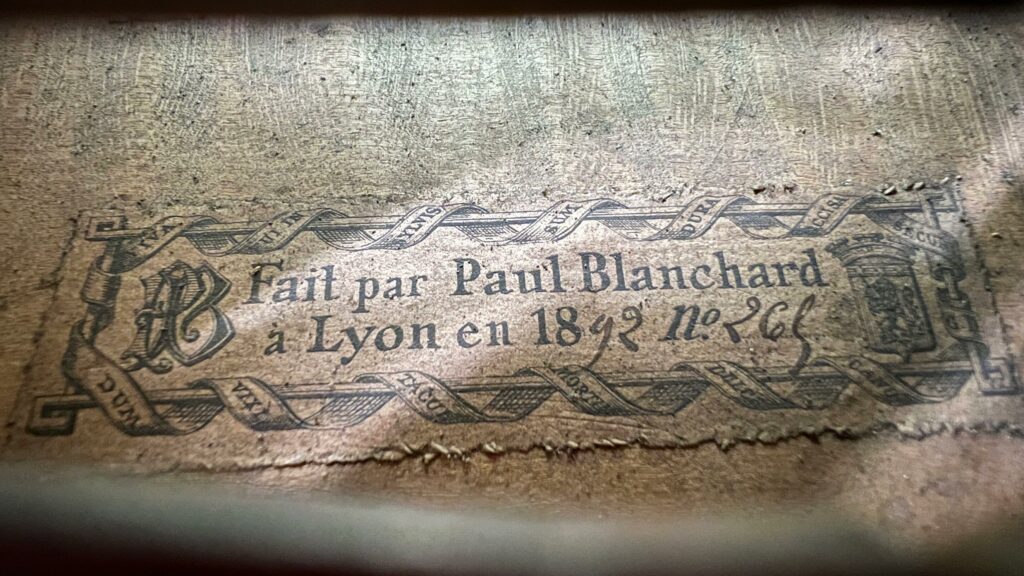
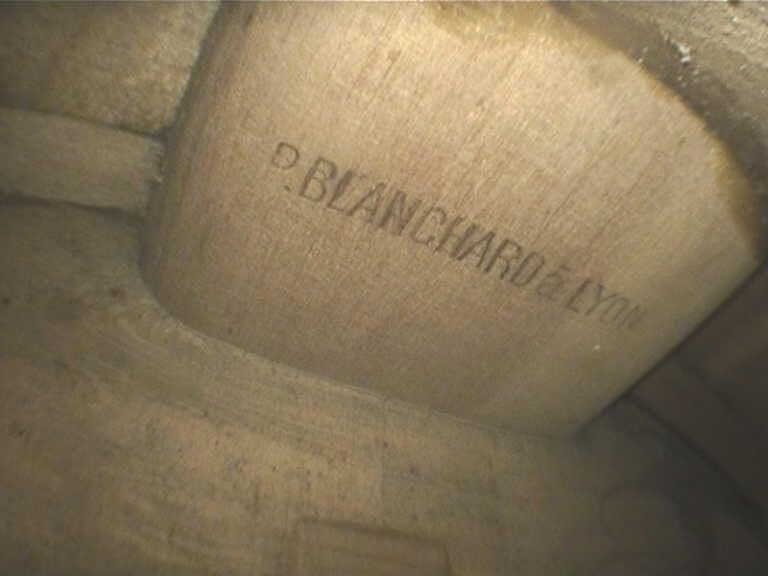
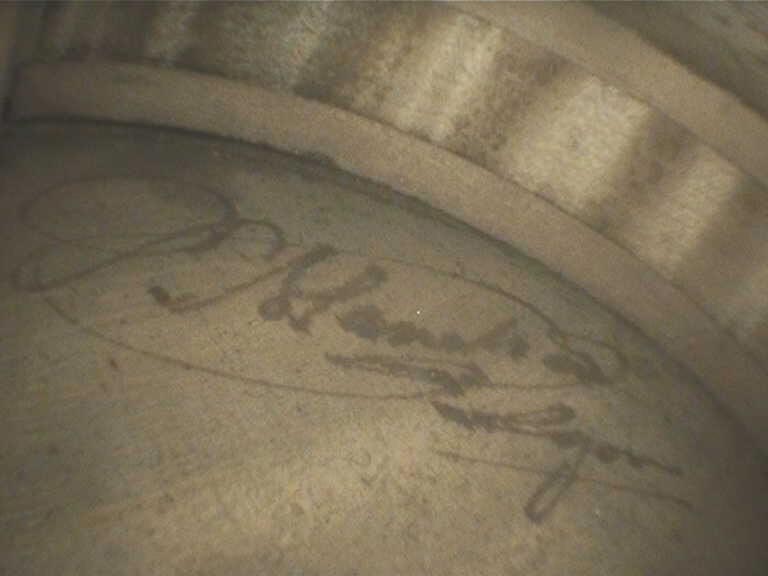
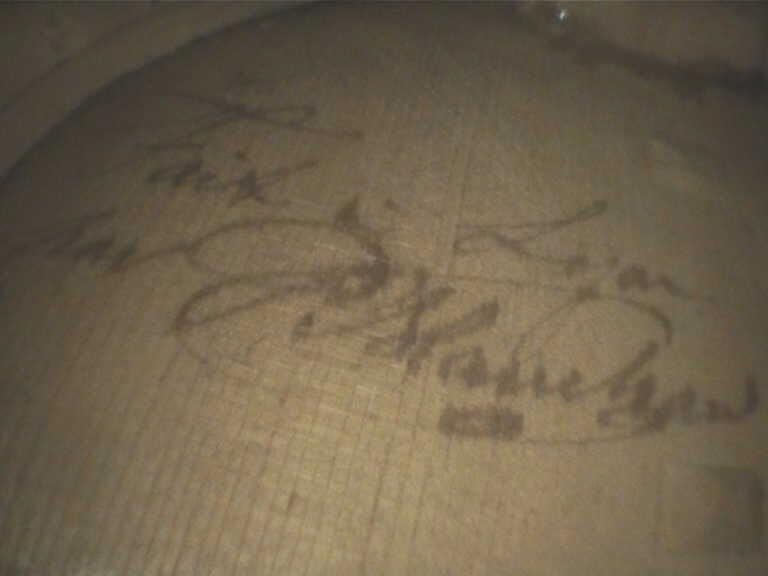
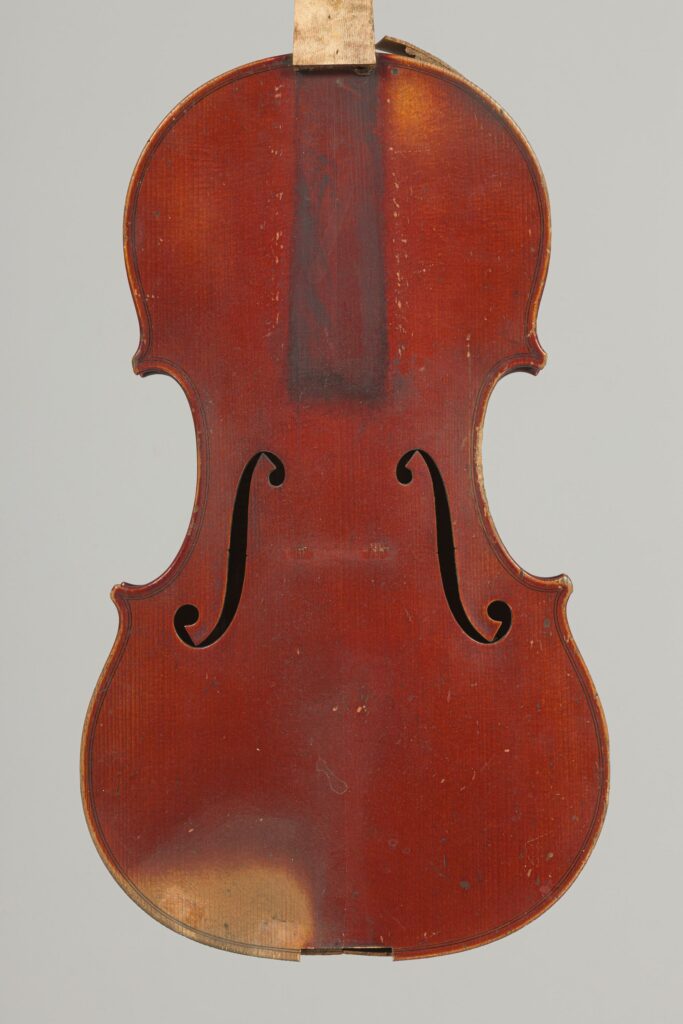
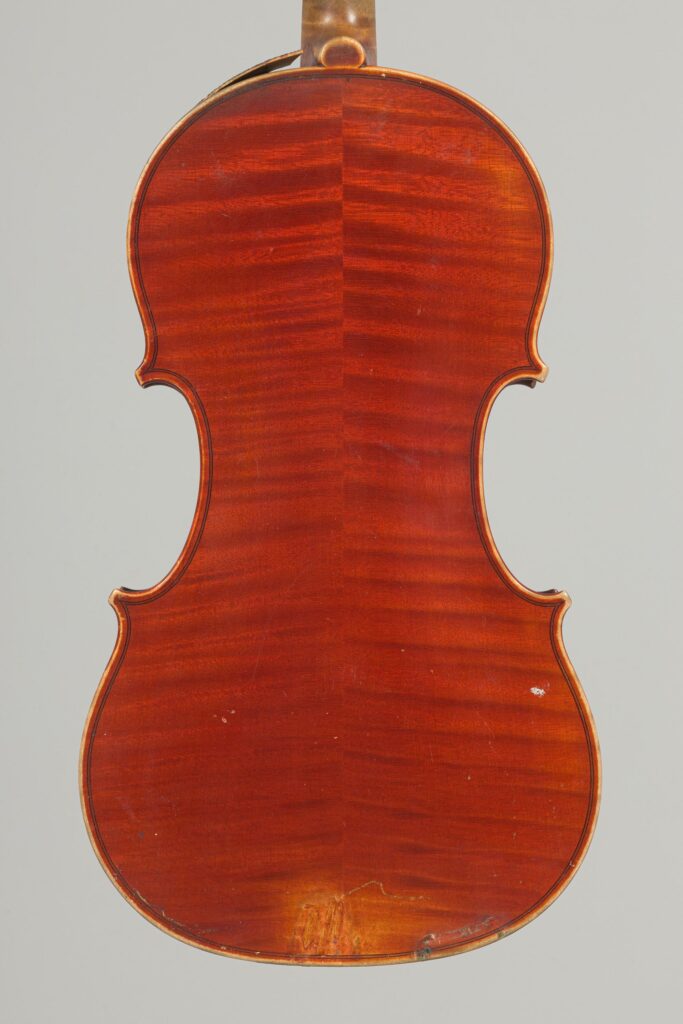
Né à Mirecourt en 1877, Emile Boulangeot suit le parcours d’apprentissage traditionnel, se formant d’abord dans sa ville natale, auprès d’Emile Laurent, avant de poursuivre sa formation à Paris. Là-bas, il intègre l’atelier de Gustave Bernardel dès 1893 et reste dans cette même Maison lorsqu’elle devient Caressa et Français au départ de Bernardel.
Son séjour à Paris prend fin en 1909, date à laquelle il décide de rejoindre Paul Blanchard à Lyon. Il poursuit notamment la commercialisation d’une gamme d’instruments créée par Blanchard appelée “LUGDUNUM”. Boulangeot collabore également avec Morizot Père ou la Maison Bazin, comme en attestent certains archets passés à Vichy Enchères.
En 1913, peu de temps après la mort de Blanchard survenue en 1912, Émile Boulangeot a l’opportunité de reprendre la direction de l’atelier et de devenir le luthier officiel du Conservatoire et de la Société des Grands Concerts de Lyon – succédant là encore à Paul Blanchard. Cela marque un véritable tournant dans sa carrière l’amenant à fournir les plus grands musiciens de Lyon.
En 1928, Boulangeot cesse son activité. Sa production est alors estimée à environ 175 violons, 7 altos et 28 violoncelles[3]. Ses instruments se distinguent par leur élégance et un vernis à l’huile de couleur rouge-orange.
Le 30 novembre 2023, à Vichy Enchères, un violon de fin de carrière de Boulangeot sera mis en vente. Réalisé en 1925, au paroxysme de son art, il est numéroté 122 et porte l’étiquette ainsi que la marque au fer du luthier. Ce modèle est un bon condensé de son savoir-faire et de l’expérience acquise au cours des années. A son départ en retraite, Georges Coné reprend l’atelier.
[3] J.F. Schmitt, La lutherie lyonnaise, 1991
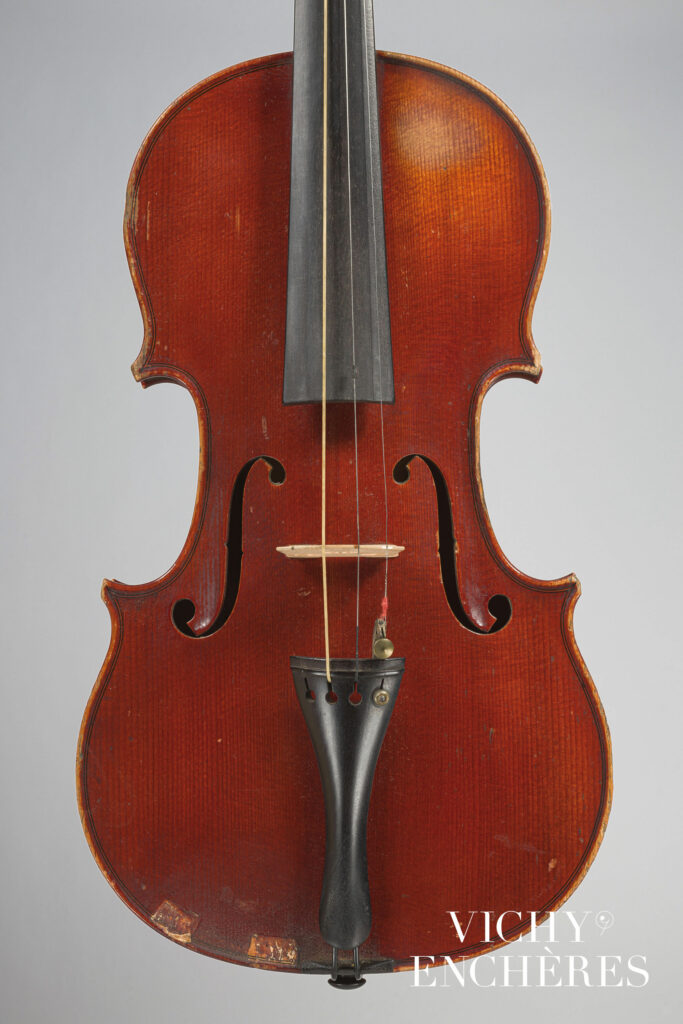
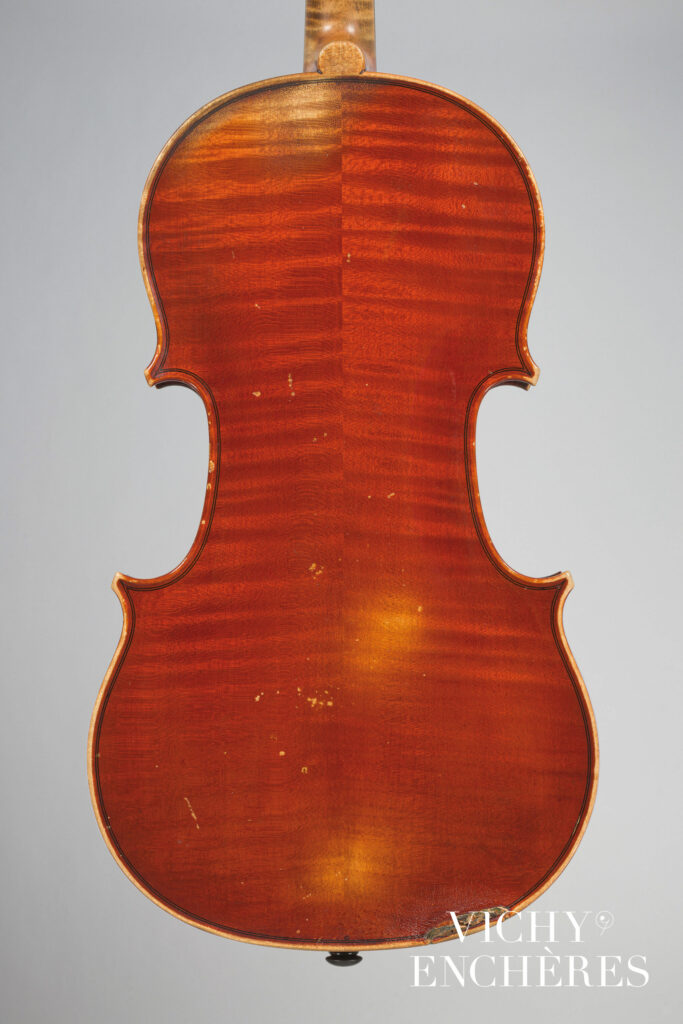
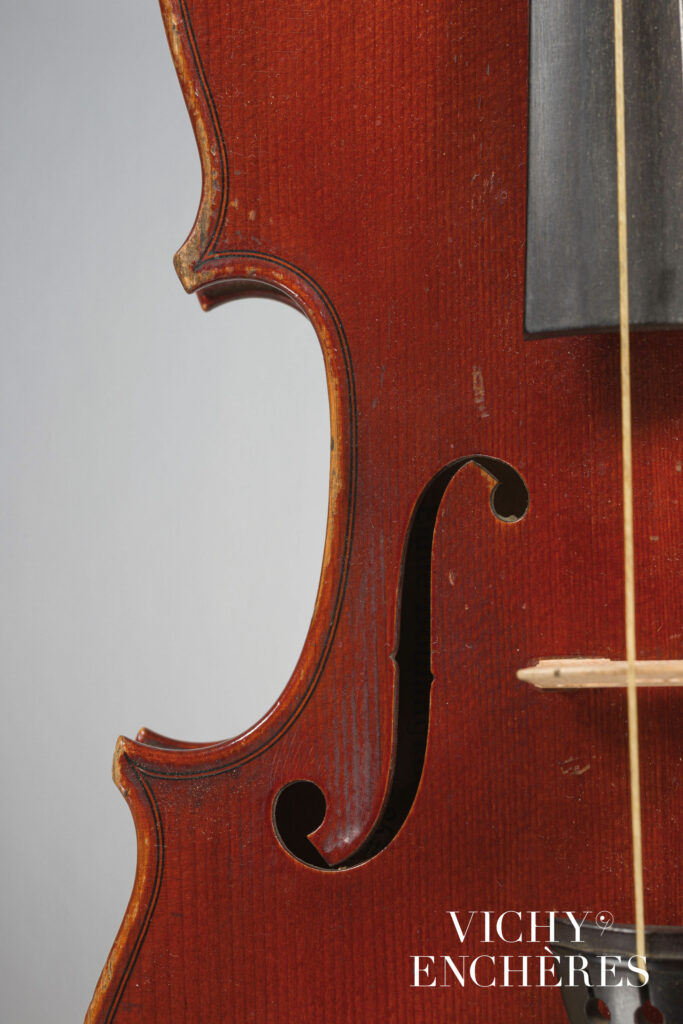
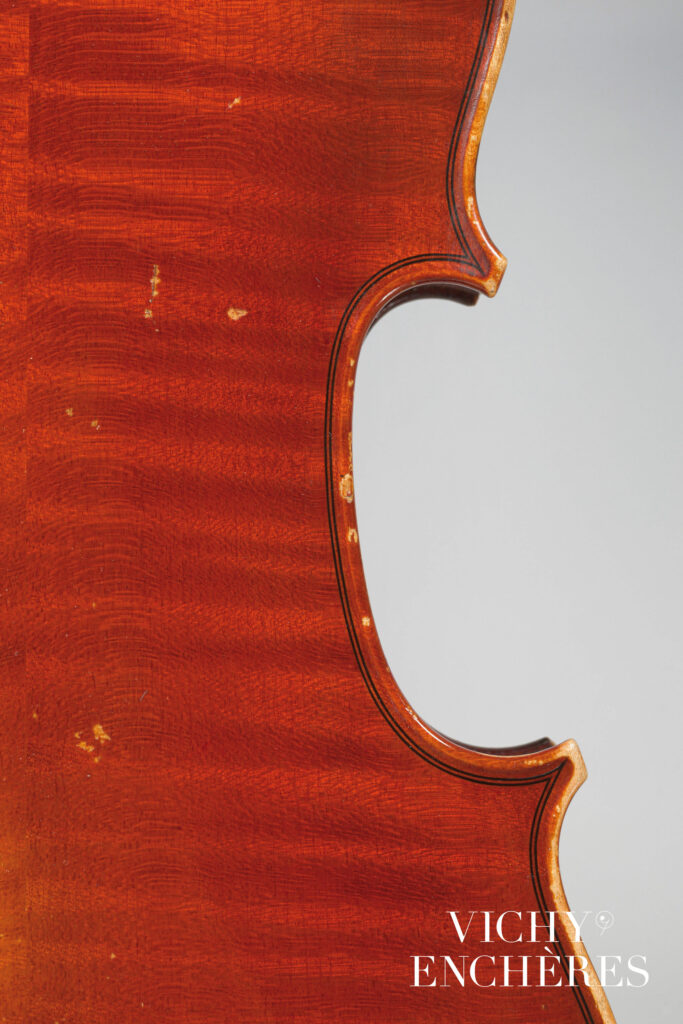
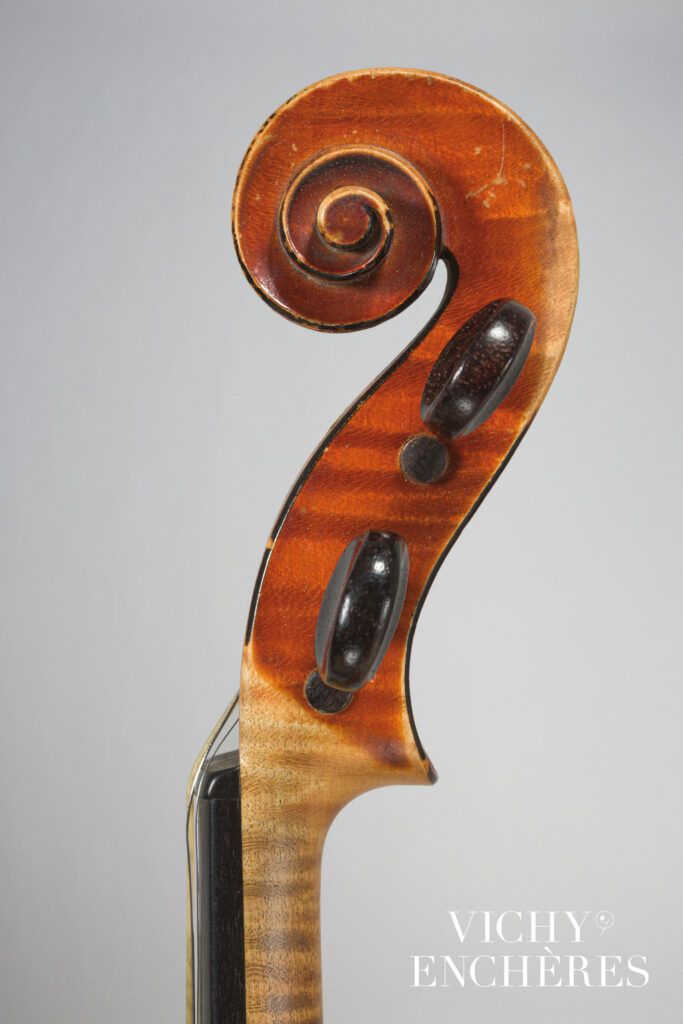
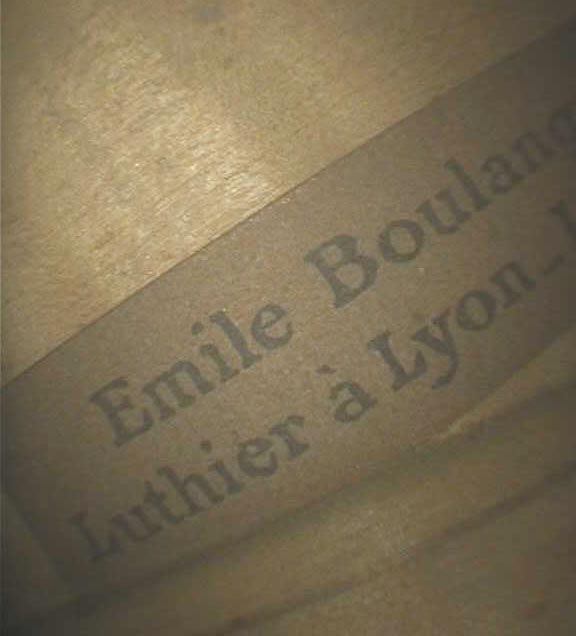
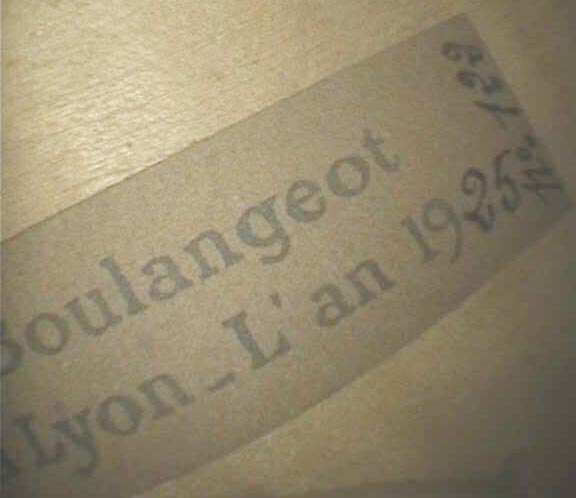
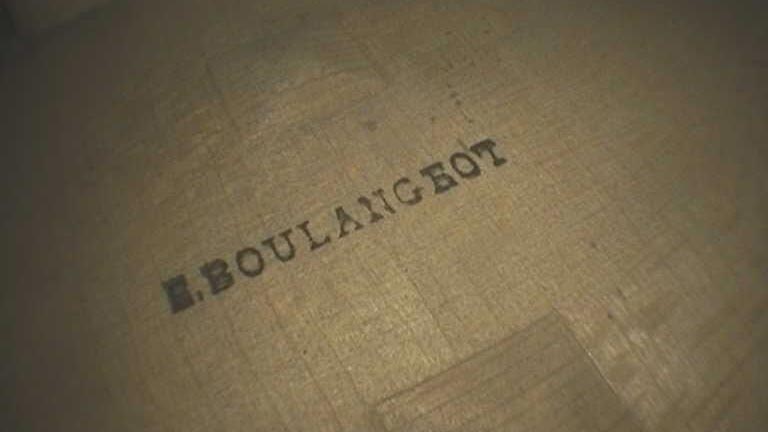
Georges Coné (1877-1950) naît à Mirecourt en 1877 et commence son apprentissage chez H. Durand. À partir de 1896, il rejoint l’atelier de Paul Blanchard à Lyon. Il collabore avec lui jusqu’en 1912, puis travaille dans divers ateliers à l’étranger. En 1928, il revient à Lyon pour remplacer Emile Boulangeot en tant que luthier du Conservatoire et de l’Association Philharmonique de Lyon et s’établit au 77 puis 79 rue de la République. Coné s’inspire du modèle de Stradivari pour créer ses instruments, caractérisés par un vernis à l’huile de couleur rouge-orangé à rouge-brun, appréciés pour la puissance de leur sonorité. Son fils Robert Coné travaille très tôt à ses côtés. En effet, la plus ancienne mention d’un travail commun est attestée par une étiquette datée de 1930, alors que Robert n’a que dix ans ! Robert Coné succède à son père à sa mort en 1950.
Les instruments de Georges Coné portent des étiquettes mentionnant la date et le numéro de fabrication et on y trouve parfois la mention « Georges Coné et fils. » Coné produit également des séries d’instruments portant les étiquettes « Copie de Nicolas Lupot » ou « LUGDUNUM » – poursuivant le travail de Blanchard et Boulangeot.
Il précise également parfois sur ses étiquettes que l’instrument a été “fini sous ma direction” ou “fait dans l’atelier de Georges CONÉ”. En outre, son atelier commercialise des archets portant sa marque au fer mais fabriqués par divers archetiers dont Victor Fétique, François Lotte et Emile Auguste Ouchard.
Le travail de Georges Coné est récompensé à de nombreuses reprises. Il reçoit notamment des médailles d’argent et d’or aux Expositions universelles et internationales de Paris (1889 et 1900) et les Grand Prix des Expositions internationales de Lyon (1894 et 1914). A la suite de Boulangeot, il devient luthier du Conservatoire de musique et de la Société des Grands Concerts.
Le beau violon de la vente du 30 novembre 2023 de Vichy Enchères, réalisé en 1938 par Georges Coné, donne à voir l’étendue de son savoir-faire, conjuguant les différentes influences de Blanchard et de Boulangeot en une facture personnelle. Numéroté 73, il porte l’étiquette et la marque au fer du luthier et présente un vernis typique de l’école lyonnaise.
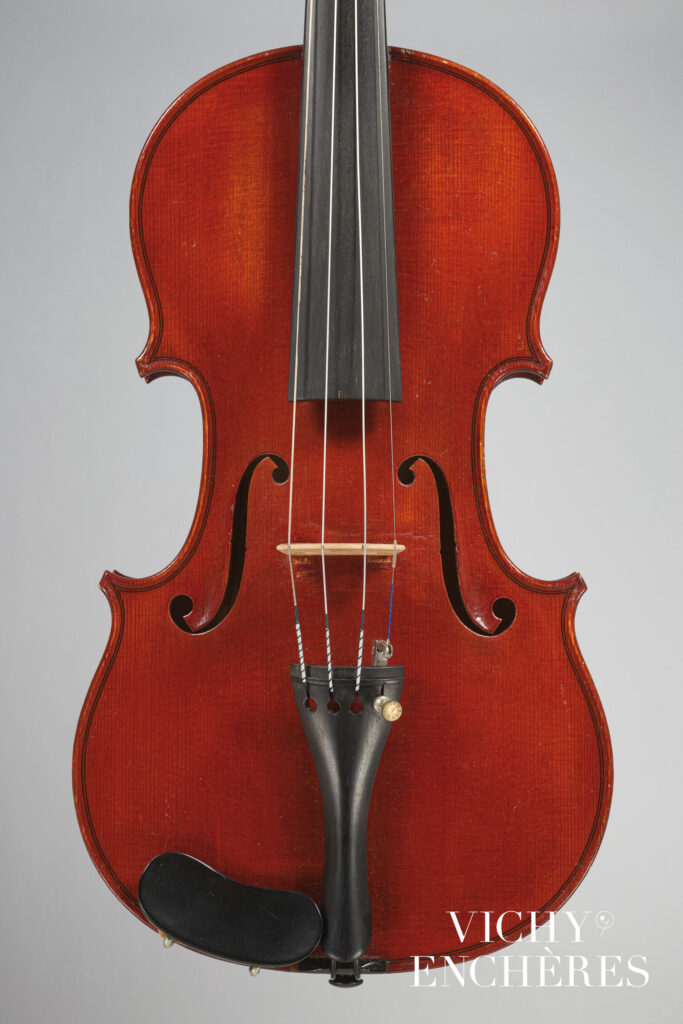
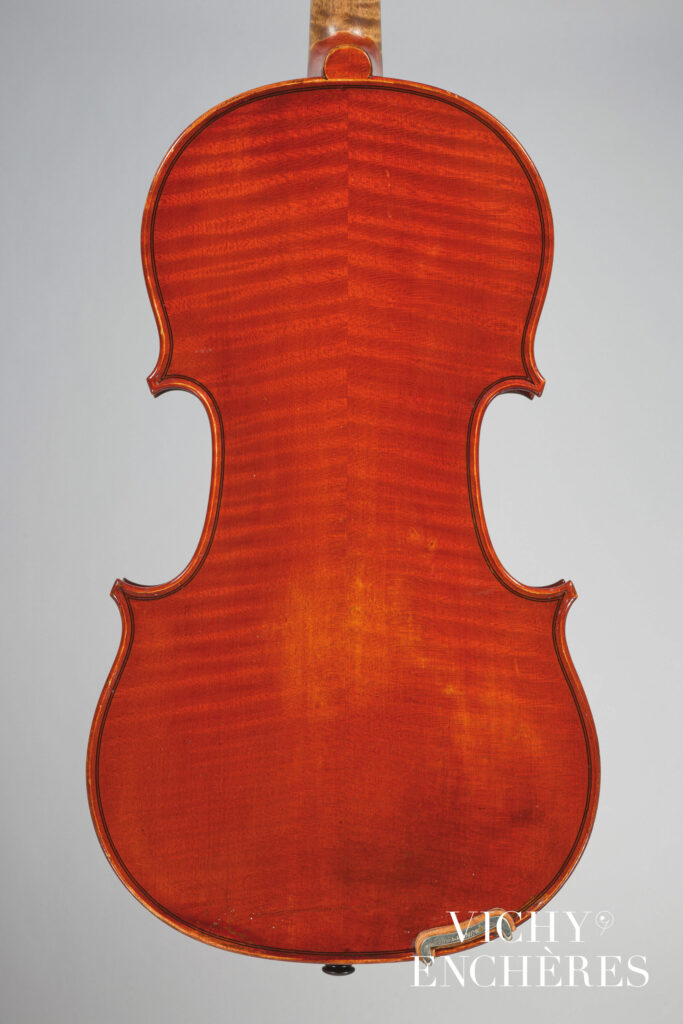
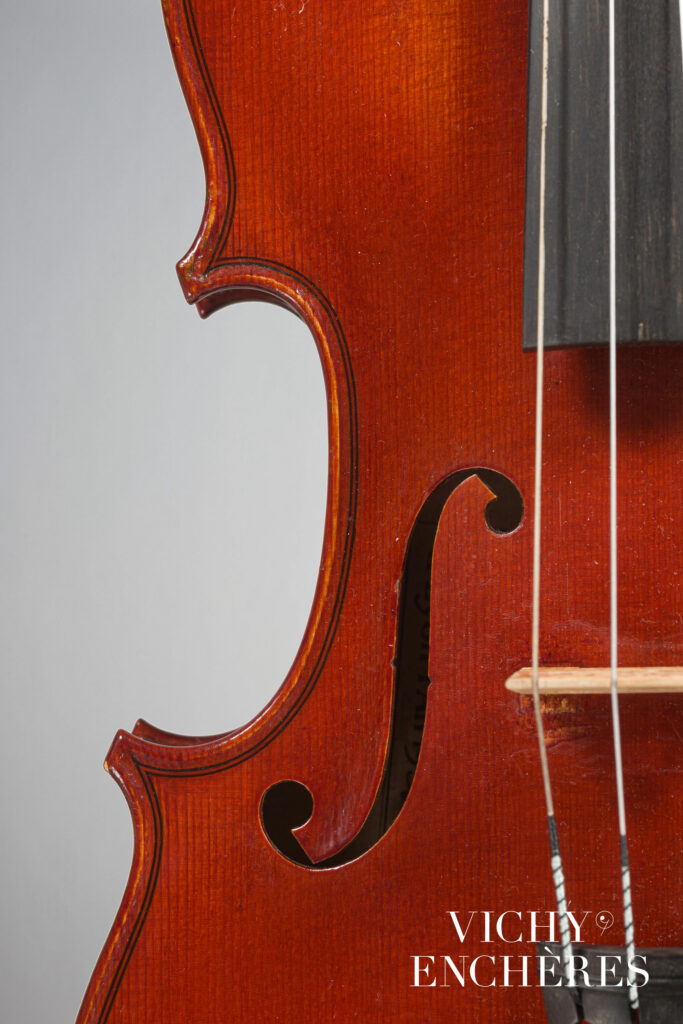
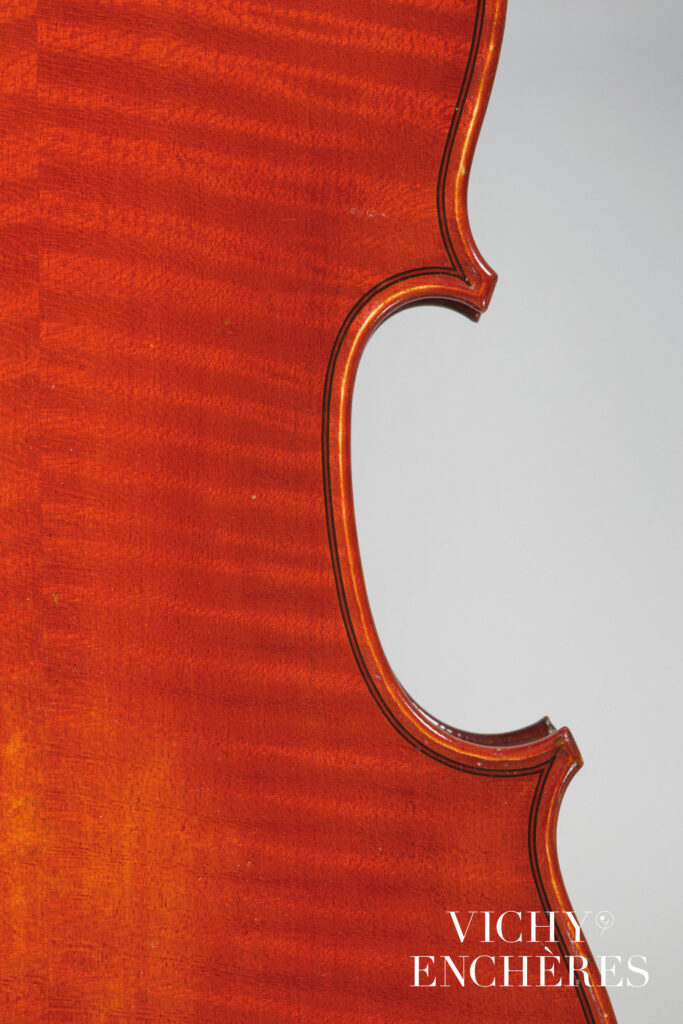
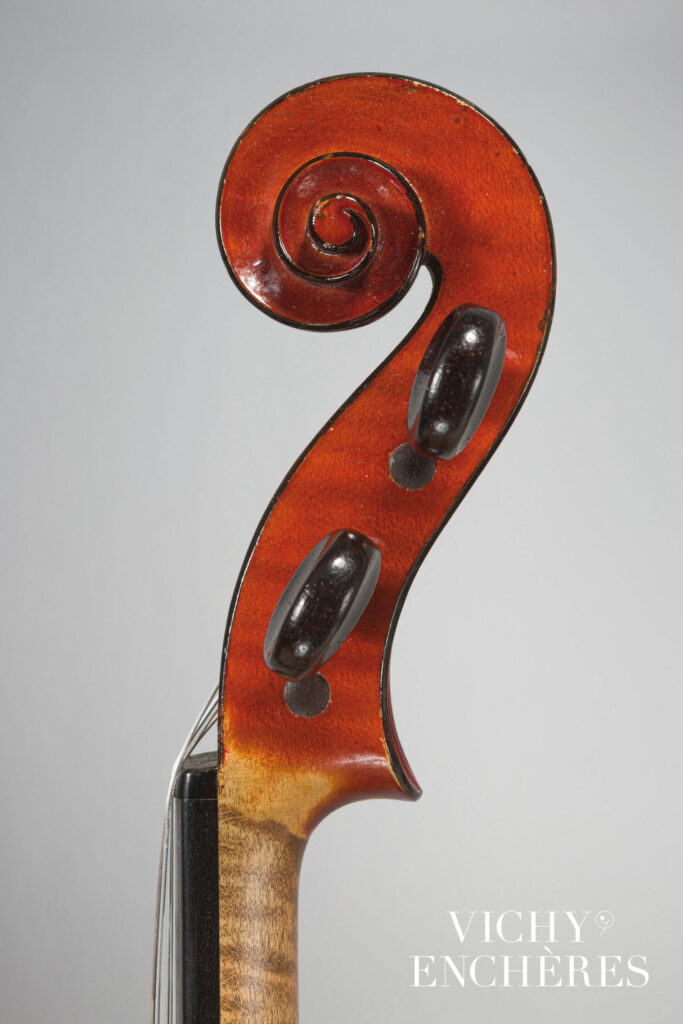
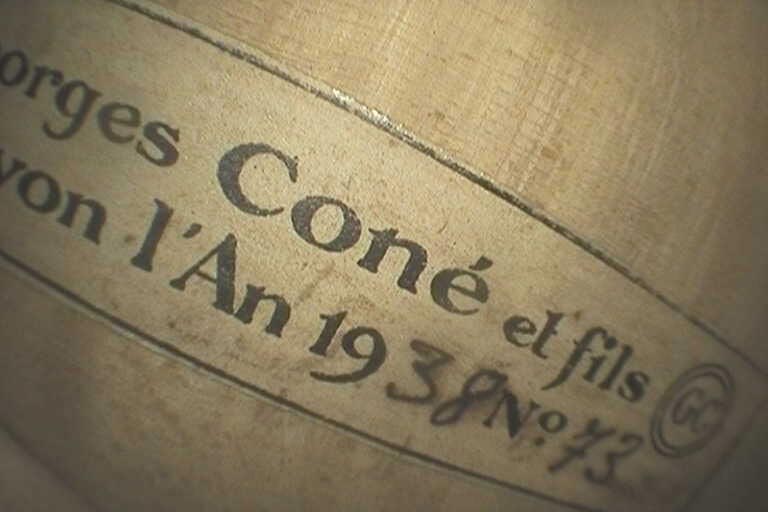
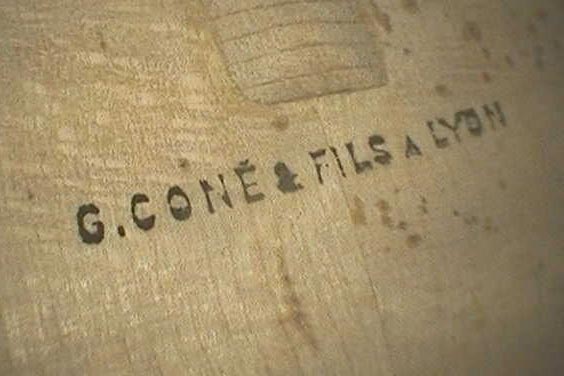
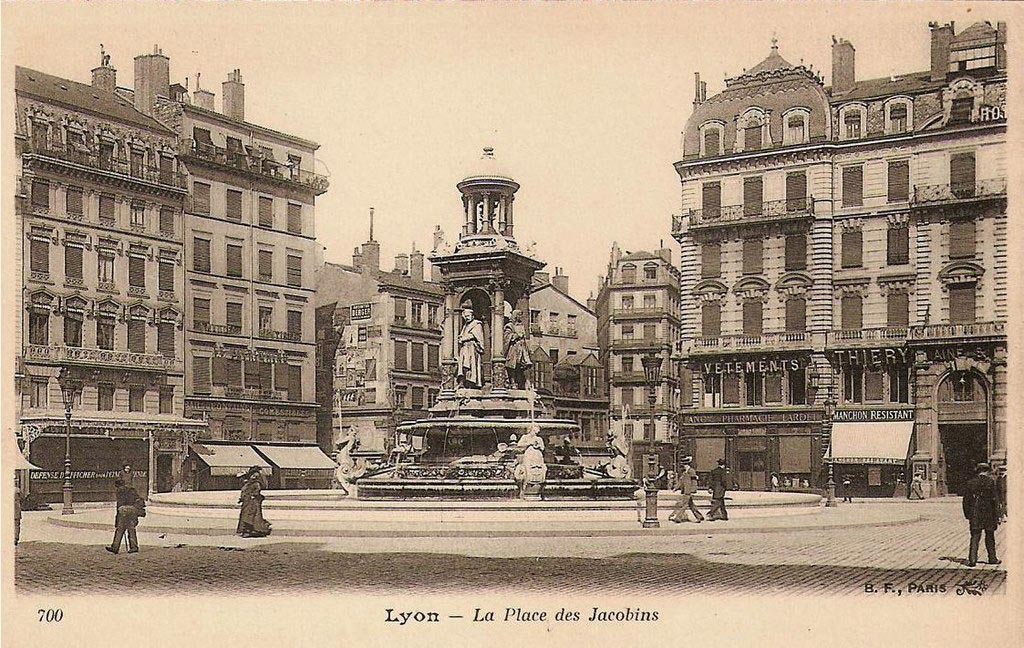
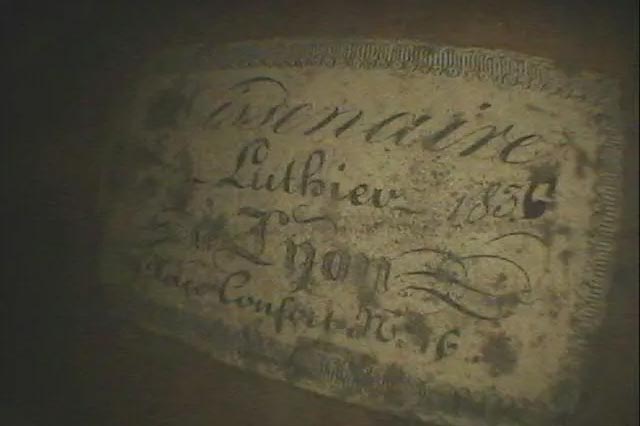
La famille Vissenaire a laissé une empreinte durable dans la lutherie et son nom est directement associé au savoir-faire lyonnais. S’installant parmi les premiers à Lyon durant le premier tiers du XIXème siècle, Louis-Nicolas Vissenaire, surnommé « Vissenaire Père », est à l’origine d’un atelier foisonnant qui donna une impulsion nouvelle à la lutherie lyonnaise du XIXème siècle. Né à Mirecourt, il décide très tôt de s’installer à Lyon, Place Confort – actuelle Place des Jacobins. De grandes proportions, ses instruments du quatuor étaient souvent conçus d’après des modèles parisiens. Malheureusement, peu d’instruments de Vissenaire Père sont parvenus jusqu’à nous. Ils restent rares sur le marché et dans les collections. Le violon en vente à Vichy Enchères le 30 novembre 2023, réalisé en 1830, nous donne ainsi une belle occasion de connaître davantage ce luthier.
Son fils aîné, couramment appelé Vissenaire II (première moitié du XIXème – c.1880) le rejoint dans l’atelier après avoir effectué son apprentissage à Paris, sous la direction de Bernardel Père. Il reprend l’atelier vers 1870 et travaille avec son frère Nicolas, dit Vissenaire III, auparavant Second Violon du théâtre de Lyon. Les instruments réalisés par Vissenaire Père et ses fils se distinguent par certaines similitudes de facture, notamment en ce qui concerne le positionnement des filets et des ouïes très proche des bords. Cependant, les travaux des fils sont également influencés par Bernardel, Gand ou encore Lupot. Leurs instruments sont aussi plus courts que ceux de leur père et sont recouverts d’un vernis doux rouge-orangé. Les deux frères sont nommés luthiers du Conservatoire de Lyon et réalisent des modèles étiquetés “Vissenaire frères”.
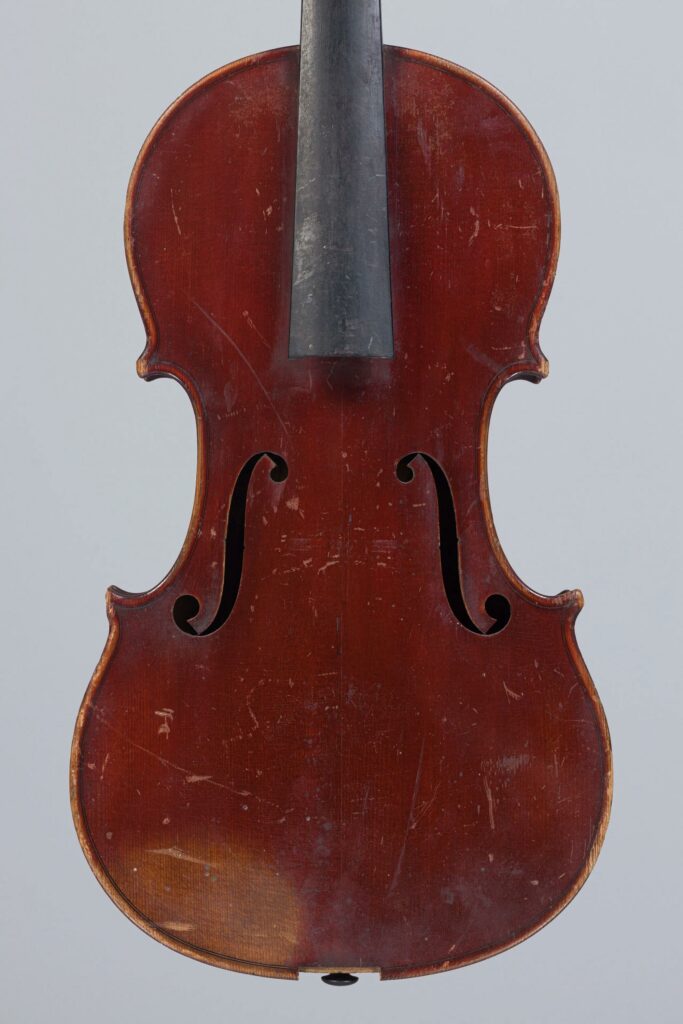
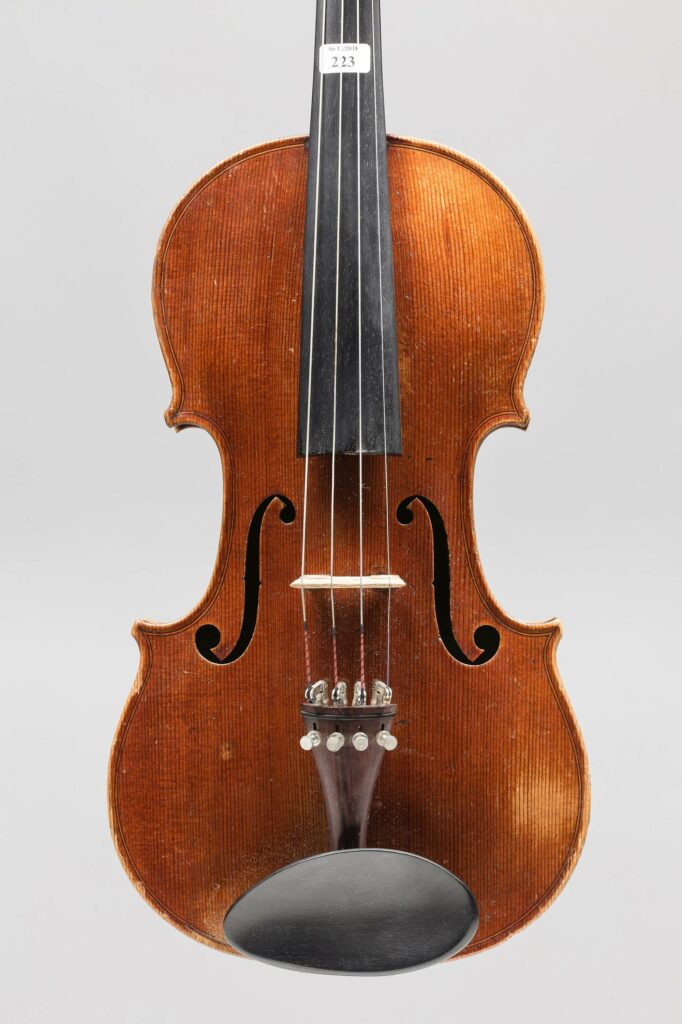
Les Vissenaire se sont aussi démarqués par l’originalité de leurs guitares, dont l’avant-garde de la facture se caractérise par des “cornes” sur le haut du corps. A une époque où la guitare connaît une transition entre sa forme baroque et moderne, ouvrant le champ des possibles, les Vissenaire en proposent une version déroutante reflétant leurs aspirations visionnaires et leur goût de l’innovation (c’est également ce qui conduit Michelot, à la même époque, à inventer la guitare en bateau).
La famille Vissenaire a contribué de manière significative au renouveau de la lutherie à Lyon au XIXème siècle, laissant en héritage des instruments de grande qualité et des guitares atypiques !
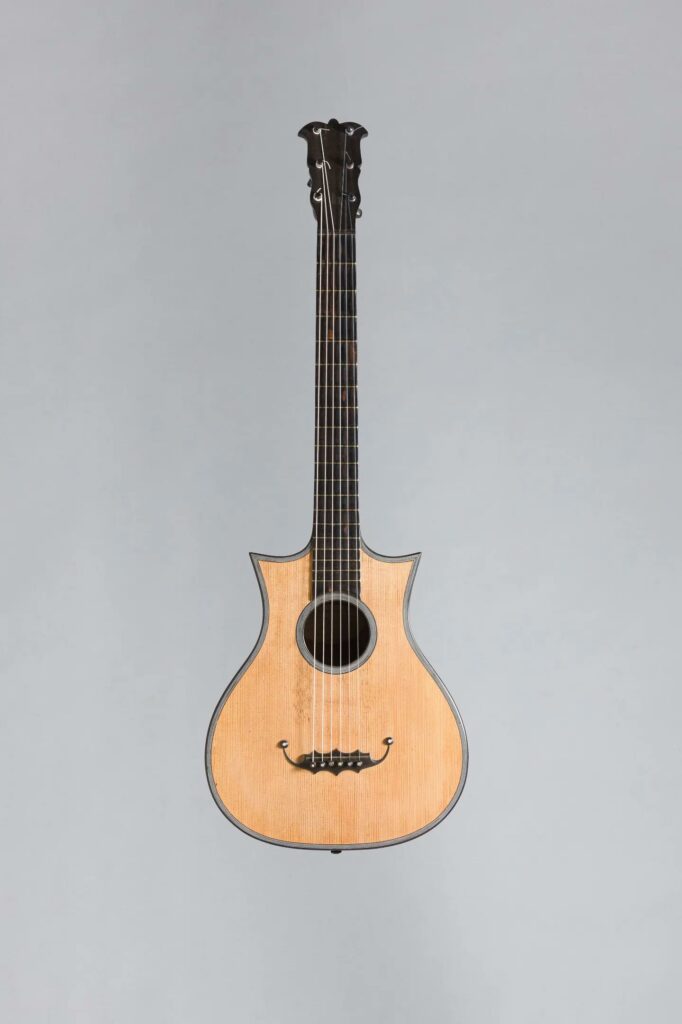
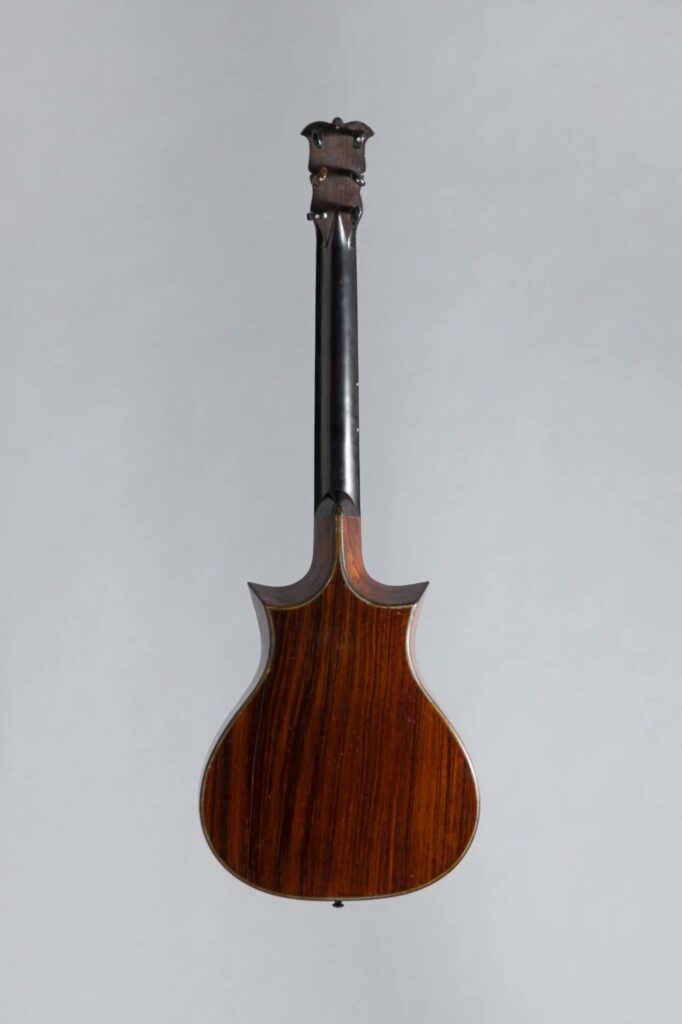
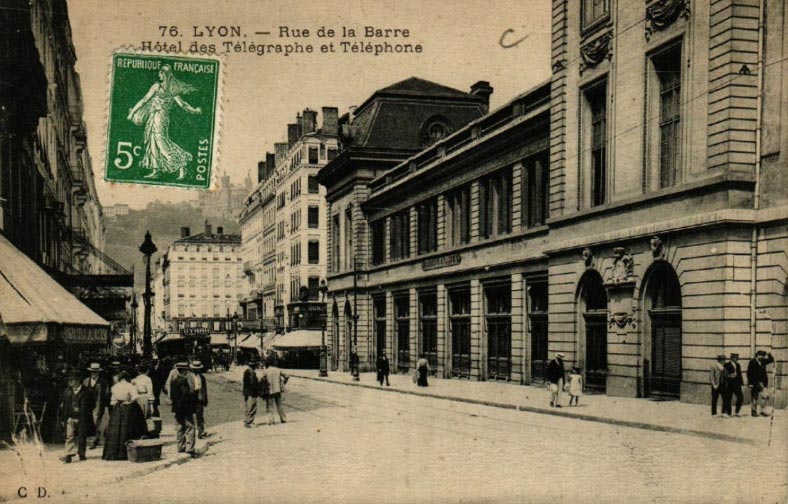
Elophe Poirson est l’une des figures les plus étonnantes de ce panorama. Né à Landaville le 6 septembre 1840 et décédé à Lyon en 1918, il a marqué de son empreinte la lutherie lyonnaise alors qu’il fut longtemps considéré comme un amateur, en raison de l’activité de télégraphe qu’il exerçait en parallèle. Il travaille en effet comme employé au bureau des télégraphes avant d’être nommé chef du bureau central au Télégraphe de Sainte-Foy-lès-Lyon. Il se serait mis à la lutherie après avoir accidentellement brisé un violon[4] qu’il aurait réparé sans outils spéciaux. Suite à cela, il aurait pris goût à la lutherie et aurait réalisé environ 300 instruments de 1876 à 1918[5]. Son nom figure dans l’Annuaire des artistes et de l’enseignement dramatique et musical en 1895, puis de 1905 à 1909, et est associé à plusieurs brevets d’invention pour des outils facilitant le travail des luthiers, à l’image de mentonnières ou d’étaux à main[6].
Son travail est reconnu en 1889, à l’occasion de l’Exposition universelle de Paris, au cours de laquelle il remporte la médaille de bronze pour un quatuor d’instruments à cordes.
Il reçoit également le soutien du violoniste Martin-Pierre Marsick qu’il rencontre lors d’un passage à Lyon au cours duquel ce dernier est “émerveillé”[7] par ses instruments et adresse une lettre aux membres du jury de l’Exposition universelle :
“Nous sommes en présence d’un véritable artiste, d’un convaincu ayant la foi des grands naïfs sans laquelle tout art est creux, faux et inutile. « C’est pourquoi, messieurs, j’ai pris sous ma responsabilité artistique de faire connaître les efforts dignes d’encouragement d’ Elophe Poirson, et vous présenter le premier résultat de ses travaux. En ajoutant que, gagné moi-même par son enthousiasme, je ne pouvais, artiste sincère, sous peine de trahir notre grand art, refuser mon appui et mes encouragements à un homme que la simple vue d’un violon remue au fond de l’âme, Elophe Poirson, messieurs, j’en suis convaincu, fera honneur à son pays. M.-P. MARSICK”[8].
Notons enfin qu’une part de l’activité d’Elophe Poirson consistait à vernir des instruments dont un grand nombre provenait de Turin.
Certains modèles portant un numéro “bis” ont été vernis une deuxième fois, plus tardivement, par ce luthier perfectionniste. La majorité de ses instruments sont de belle facture et présentent un vernis rouge foncé sur fond jaune.
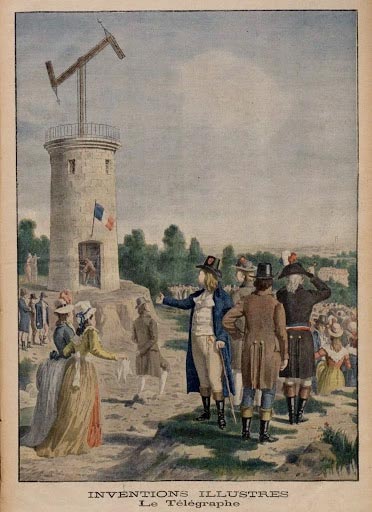
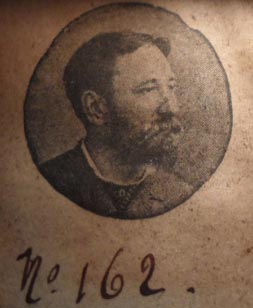
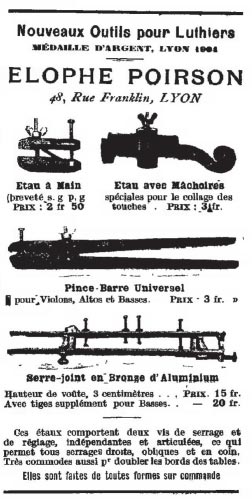
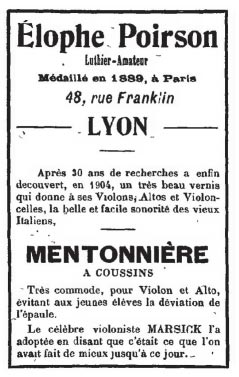
[4] Le Salut public, 15 août 1889
[5] René Vannes, Dictionnaire universel des luthiers, 1959
[6] Chann Cornilleau, Elophe Poirson, École nationale de lutherie, Mirecourt, Diplôme des Métiers d’Art, 2021
[7] Le Salut public, 15 août 1889
[8] Le Salut public, 15 août 1889
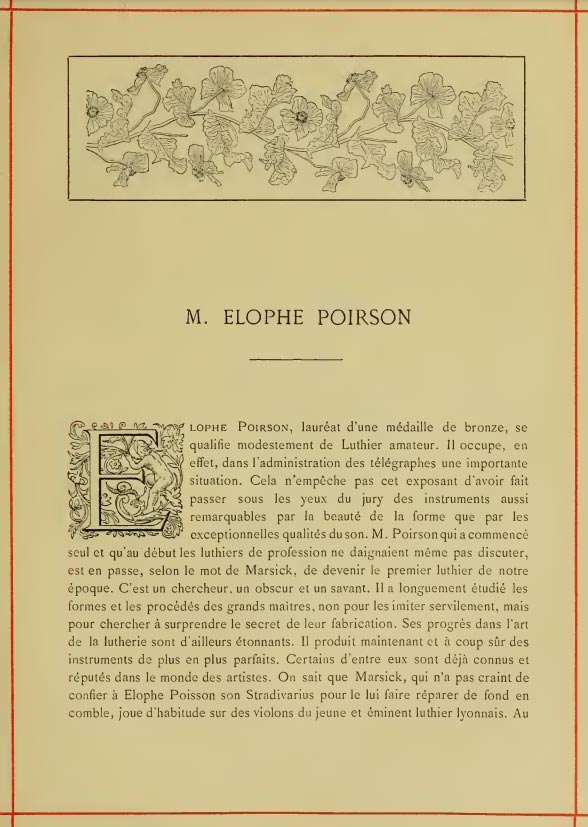
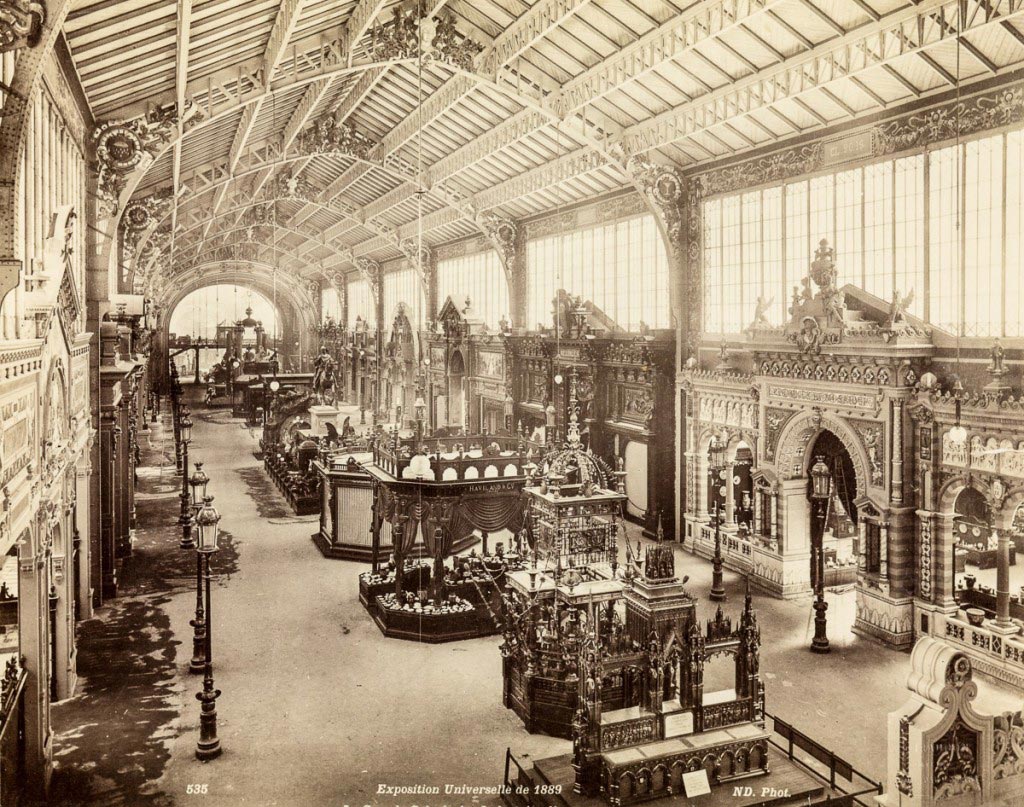
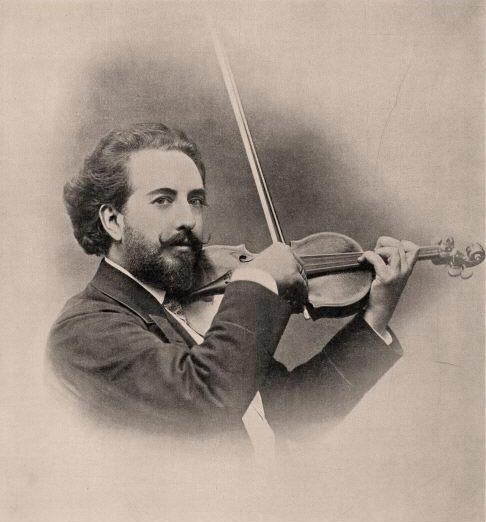
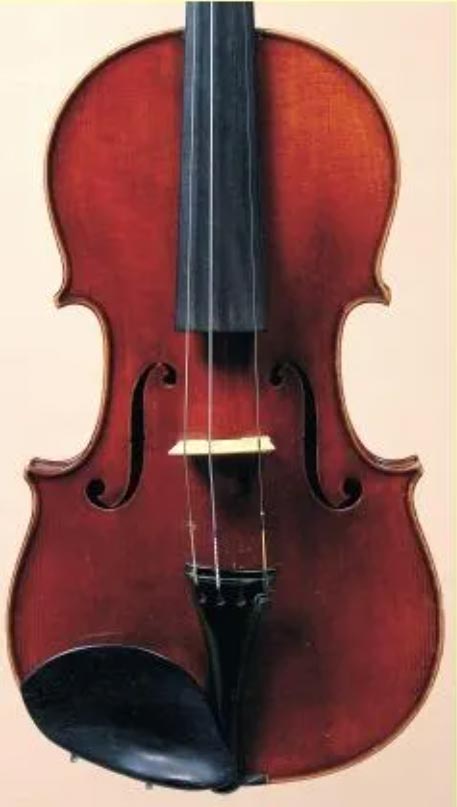
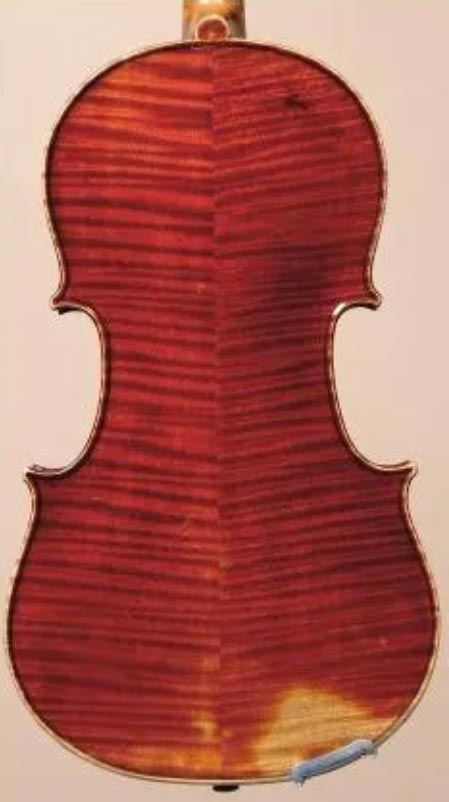
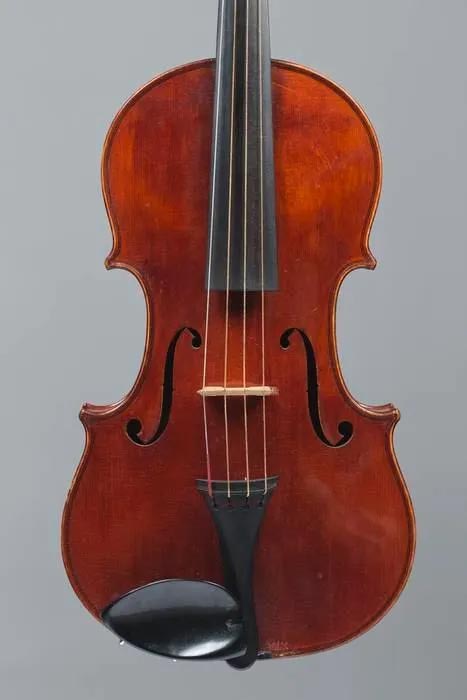
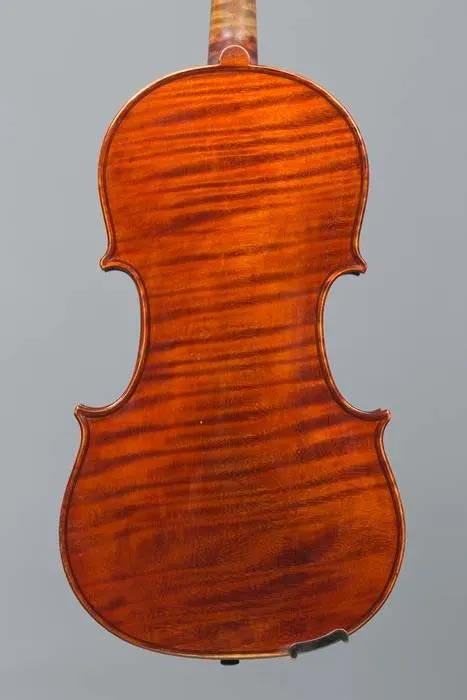
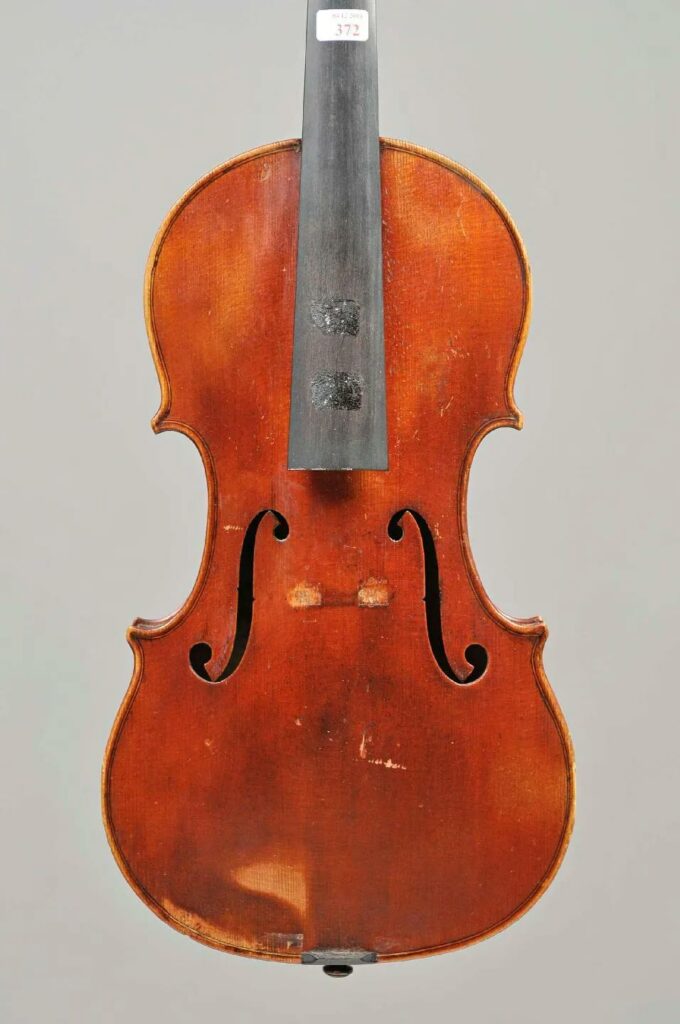
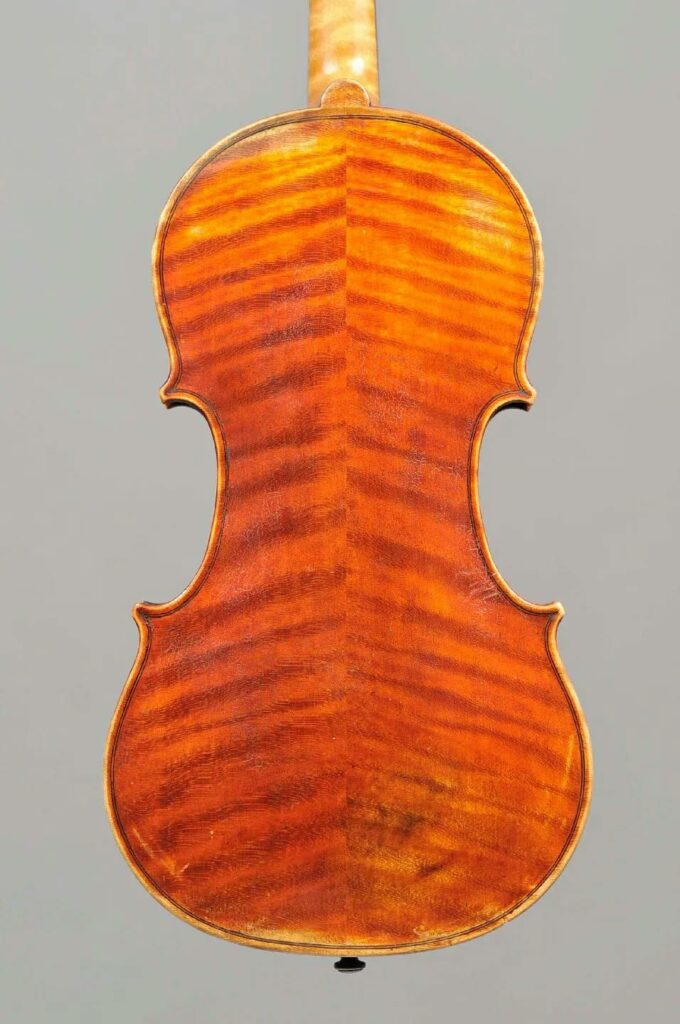
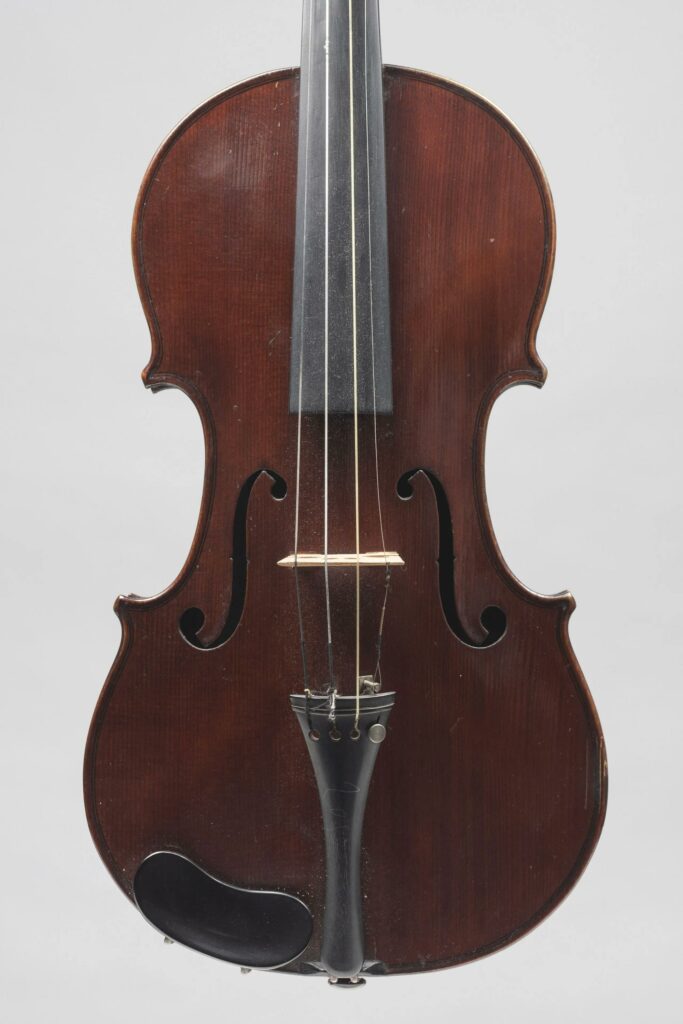
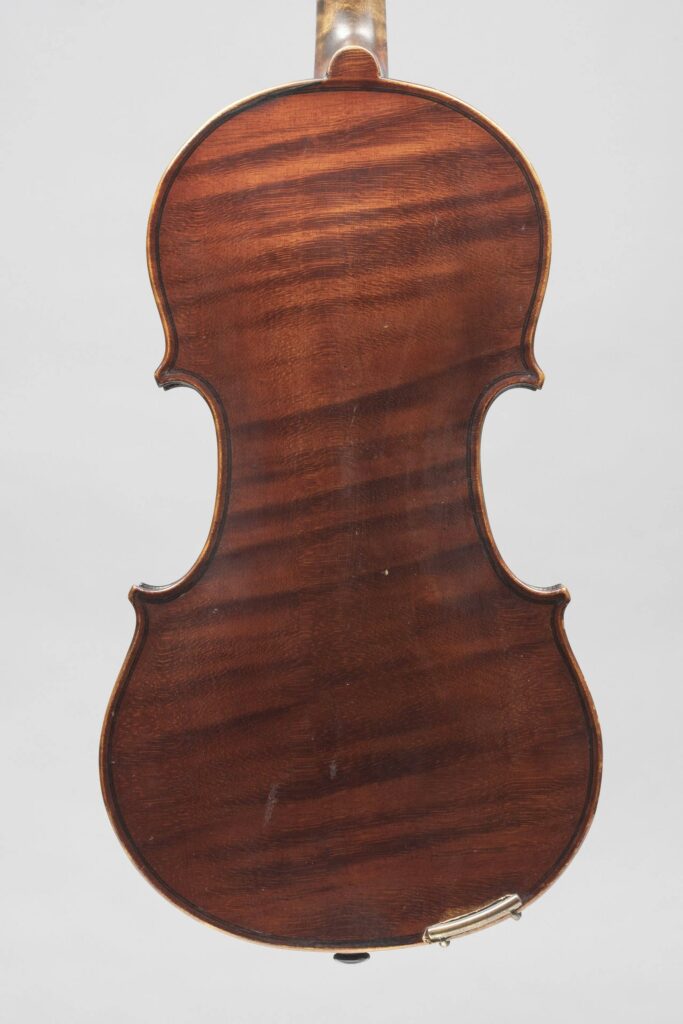
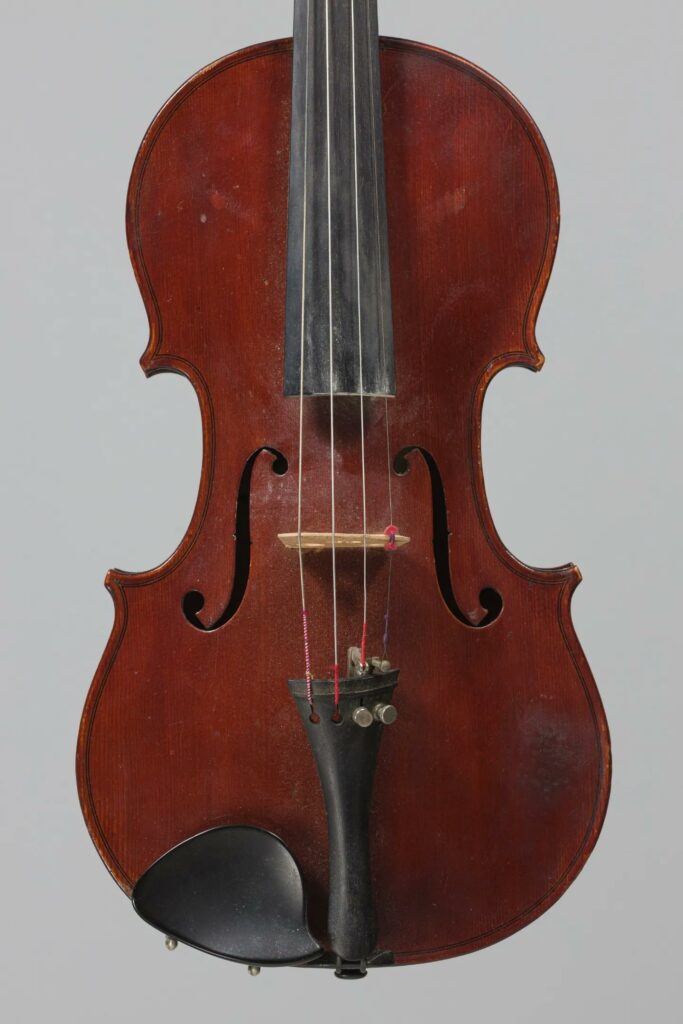
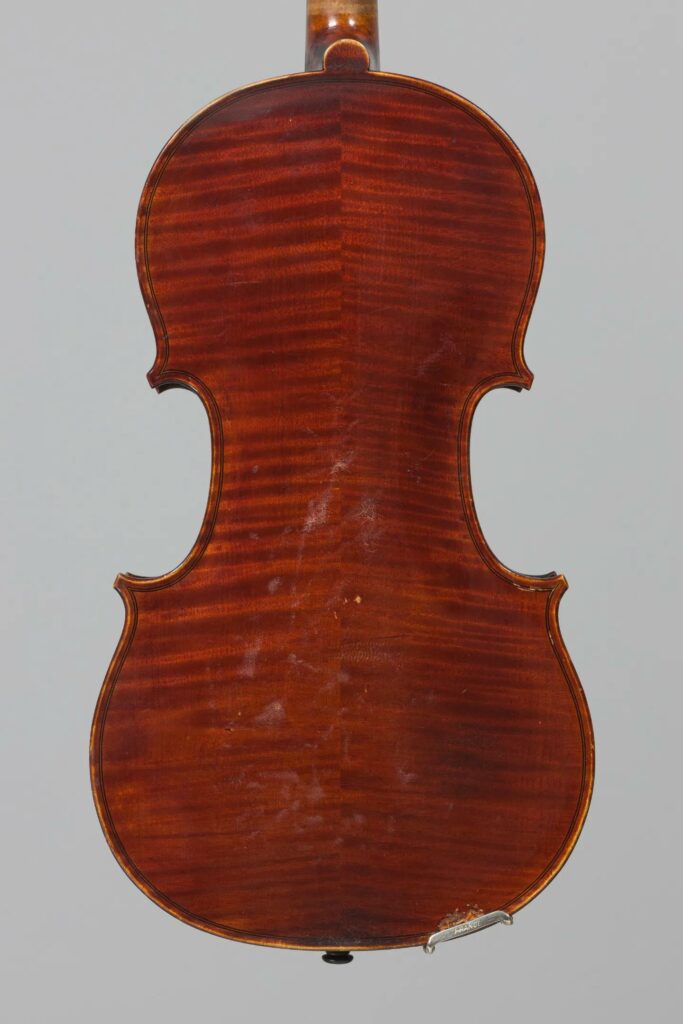
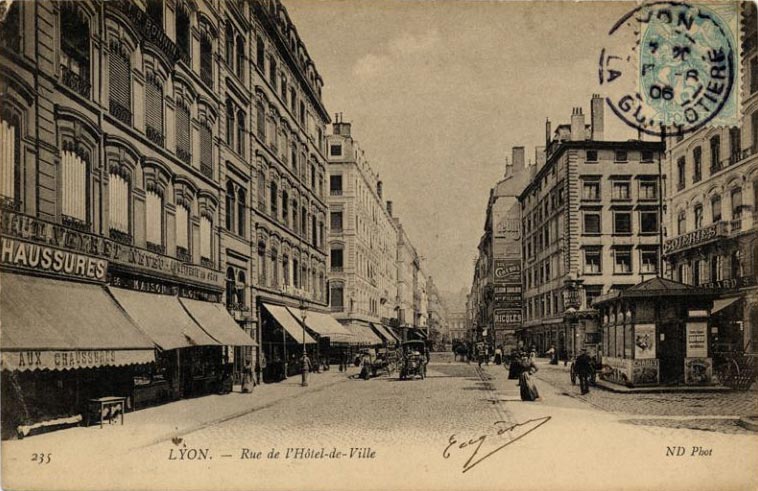
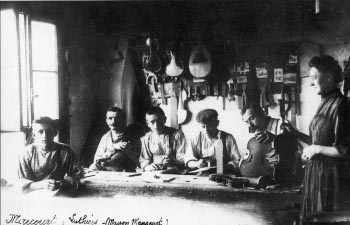
Paul-Victor Lorange (1873-1920) est né à Mirecourt le 9 septembre 1873. Il commence son apprentissage chez Blanchard de 1890 à 1896, avant de quitter Lyon pour rejoindre l’atelier de Gautié puis de Mangenot. Il retourne à Lyon en 1898 et s’établit à son compte en 1900. Son atelier est successivement implanté rue Childebert, 67 rue de l’Hôtel de Ville et enfin 36 rue Ferrandière. En 1919, un an avant son décès, il le lègue à André Conot. On lui connaît seulement un peu plus de 70 violons.
« Sa production de belle qualité, environ 70 violons, reste limitée. Cela s’explique par la grande part que tient la restauration dans son activité ».
J.F. Schmitt, La lutherie lyonnaise, 1991
Contrairement à de nombreux luthiers de son époque, il n’a pas été fortement influencé par l’école parisienne ni par ses maîtres successifs. Il a, au contraire, cultivé une facture personnelle.
Le fils de Paul-Victor Lorange – Paul Lorange – est aussi luthier et travaille un temps dans l’atelier de Charles-Louis Bazin, où il s’initie à l’archèterie sans toutefois choisir de devenir archetier. Témoignant de cela, deux archets de la Maison Bazin signé Lorange seront vendus le 30 novembre 2023 à Vichy Enchères.
En 1927, Paul Lorange fils devient associé de Paul Diter à Marseille (ce dernier fut aussi l’élève de Bazin). Selon René Vannes, 40 violons porteraient l’étiquette « Diter et Lorange ». En 1933, Paul Lorange prend définitivement les rênes de l’atelier marseillais. Deux instruments de Paul Lorange à Marseille seront mis en vente le 30 novembre 2023, un archet de signé “P. Lorange à Marseille” et un beau violon de 1947 portant le numéro 41.
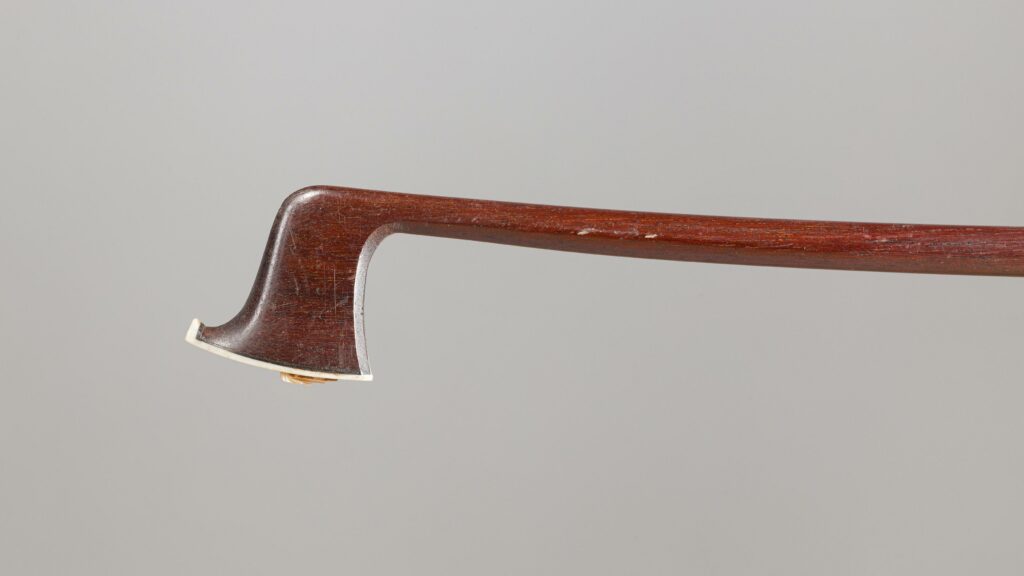
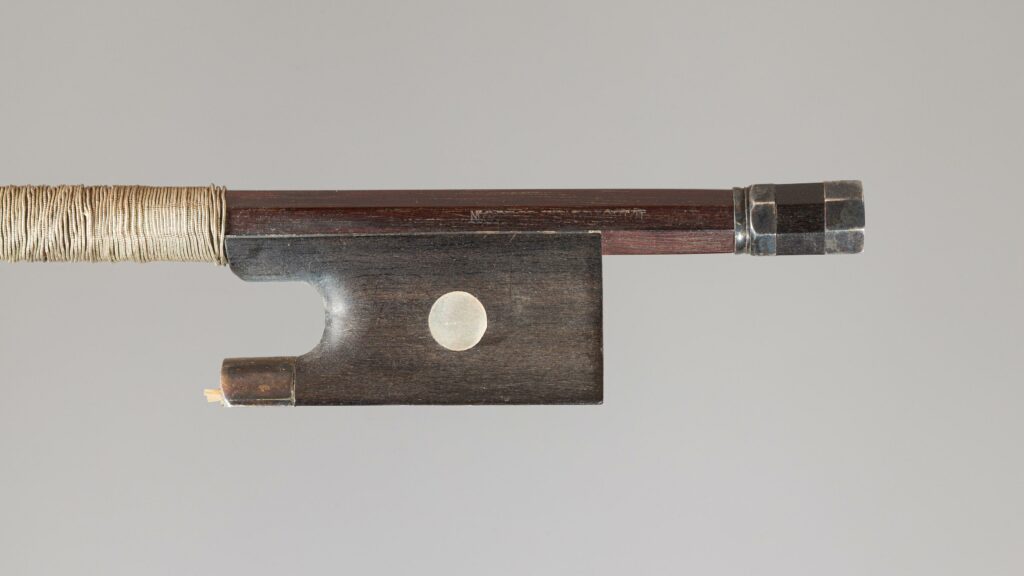
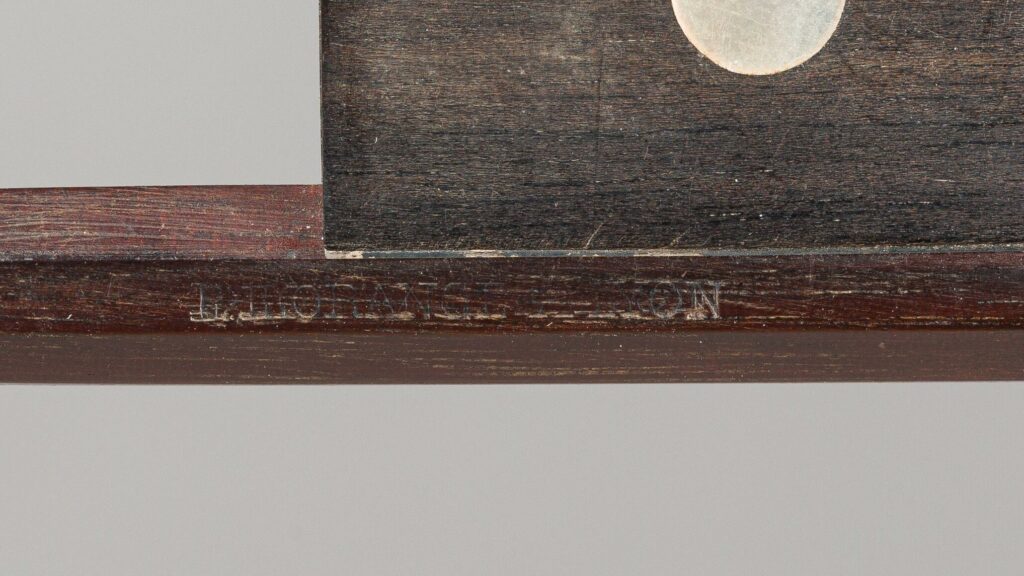
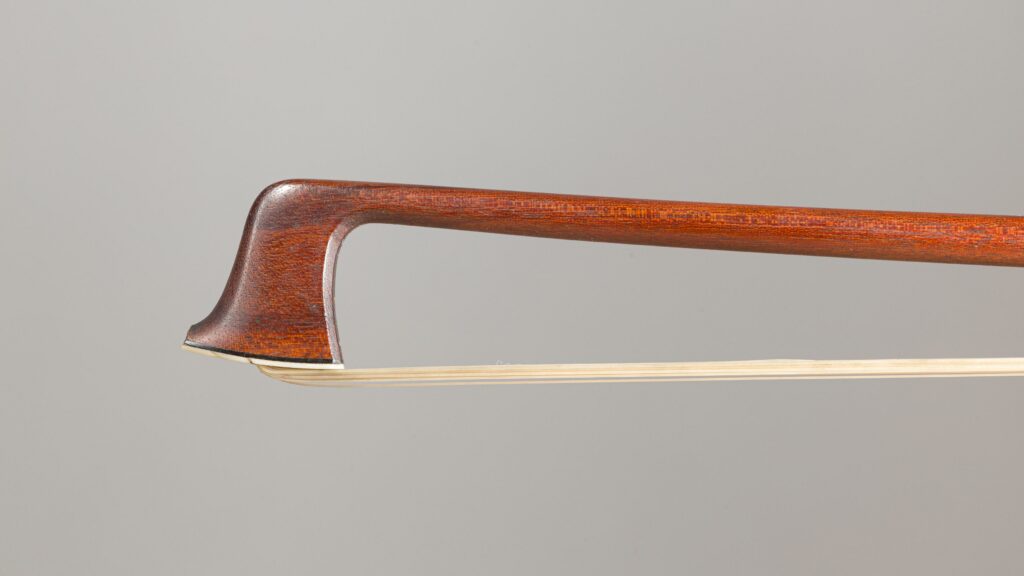
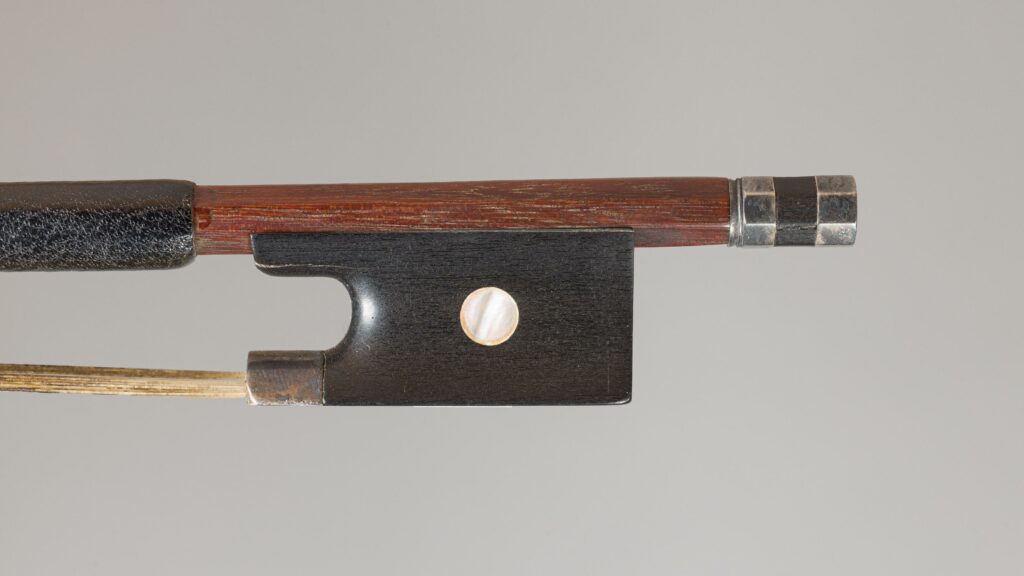
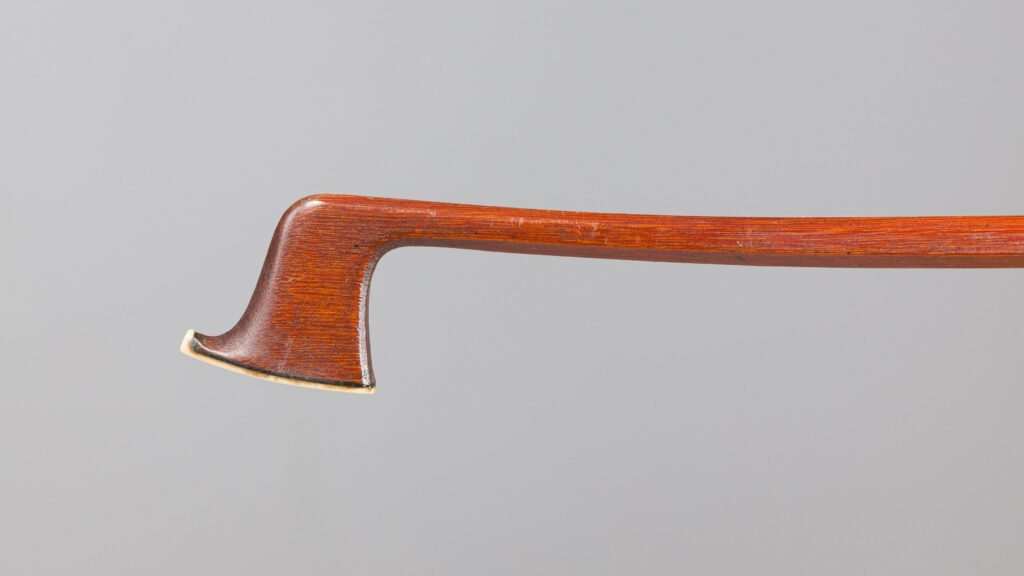
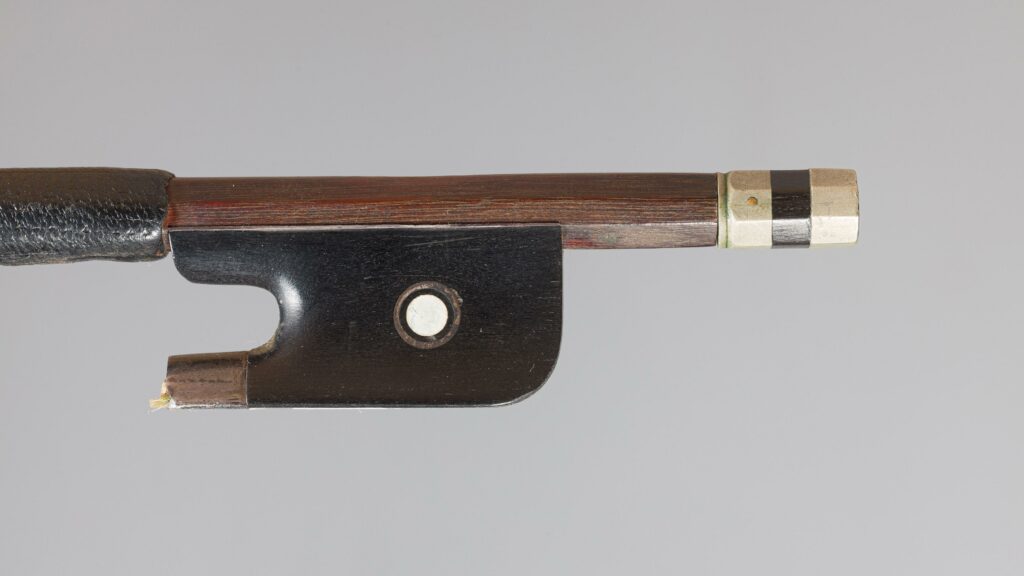
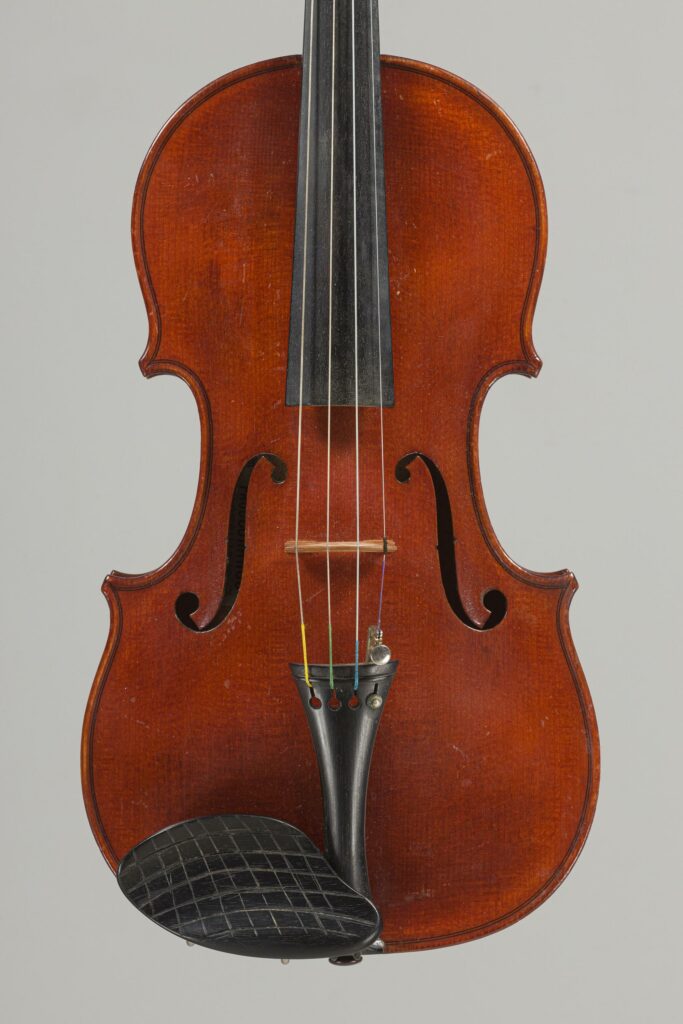
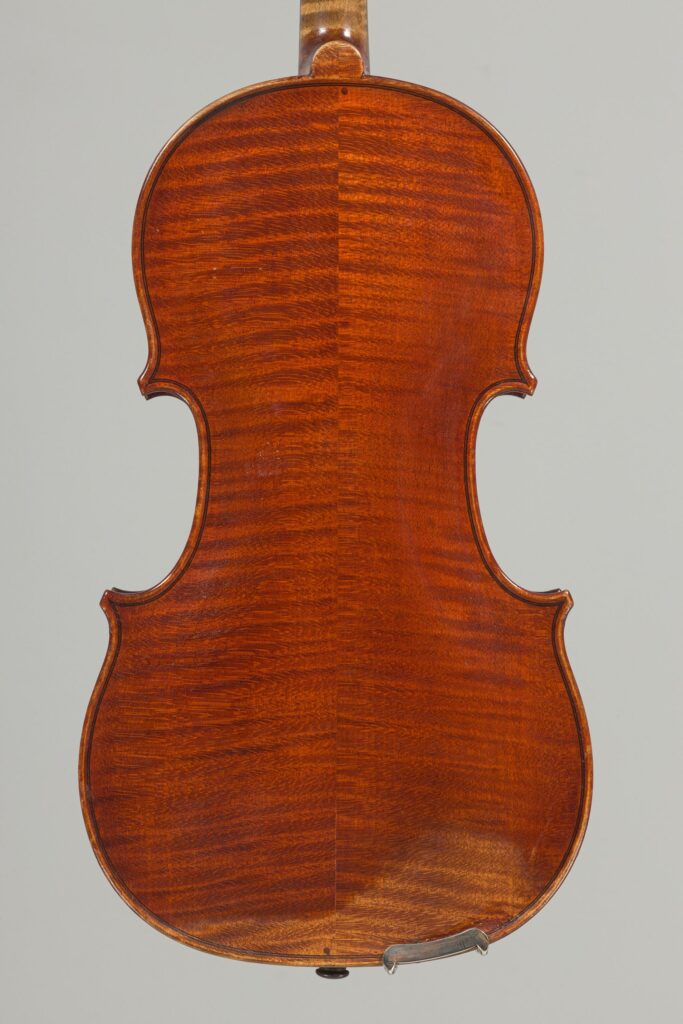
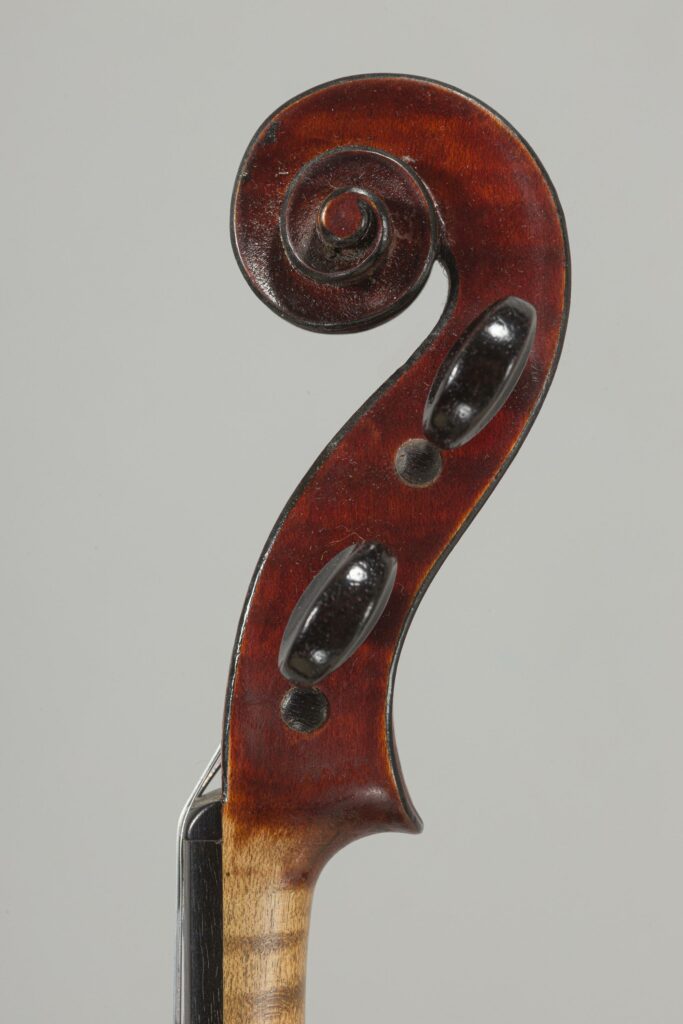
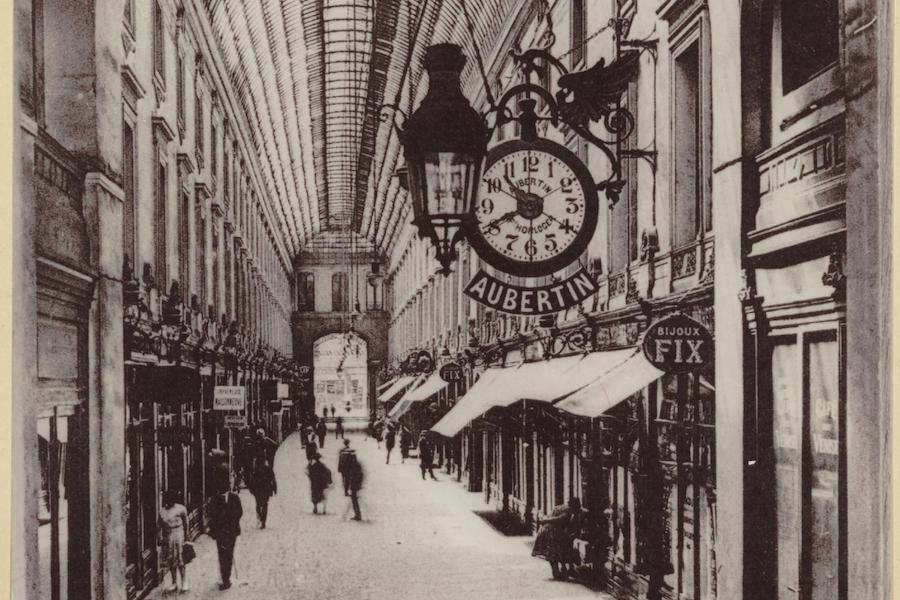
Charles Resuche est né à Mirecourt le 11 décembre 1858. Il réalise un apprentissage auprès de Didion, avant de rejoindre l’atelier de Gand & Bernardel. En 1896, il s’associe à son ami Justin Diter (frère de Paul Diter cité ci-dessus) avec lequel il ouvre un atelier Passage de l’Argue à Lyon, avant de déménager rue de l’Hôtel de Ville. Cette association sera de court terme puisque, dès 1897, ils mettent un terme à leur travail commun. Resuche quitte Lyon et part alors s’installer à Bordeaux.
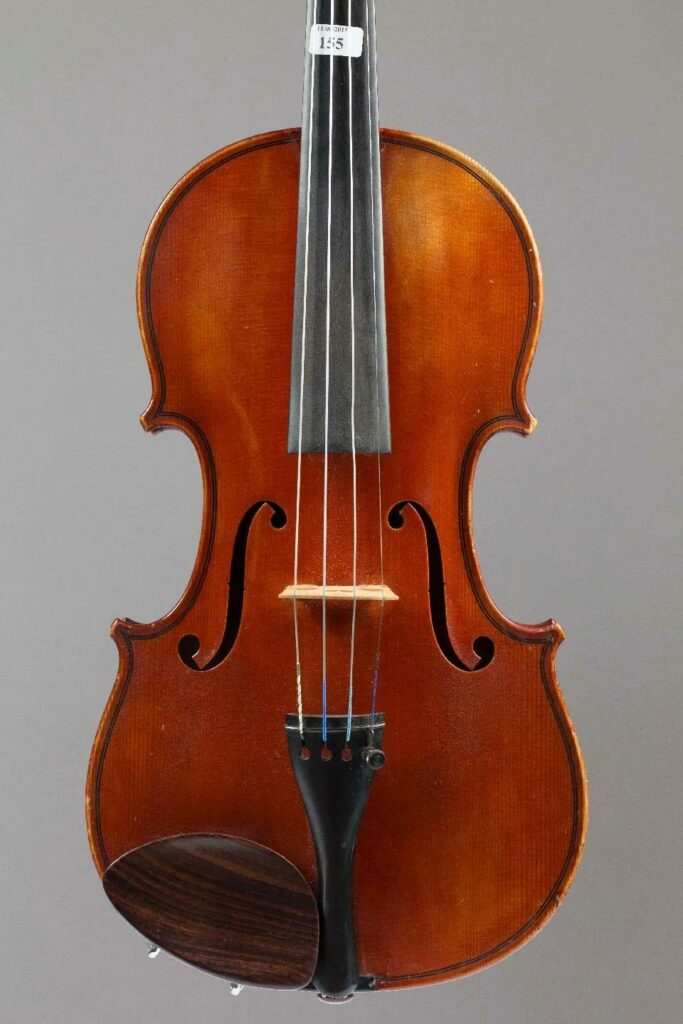
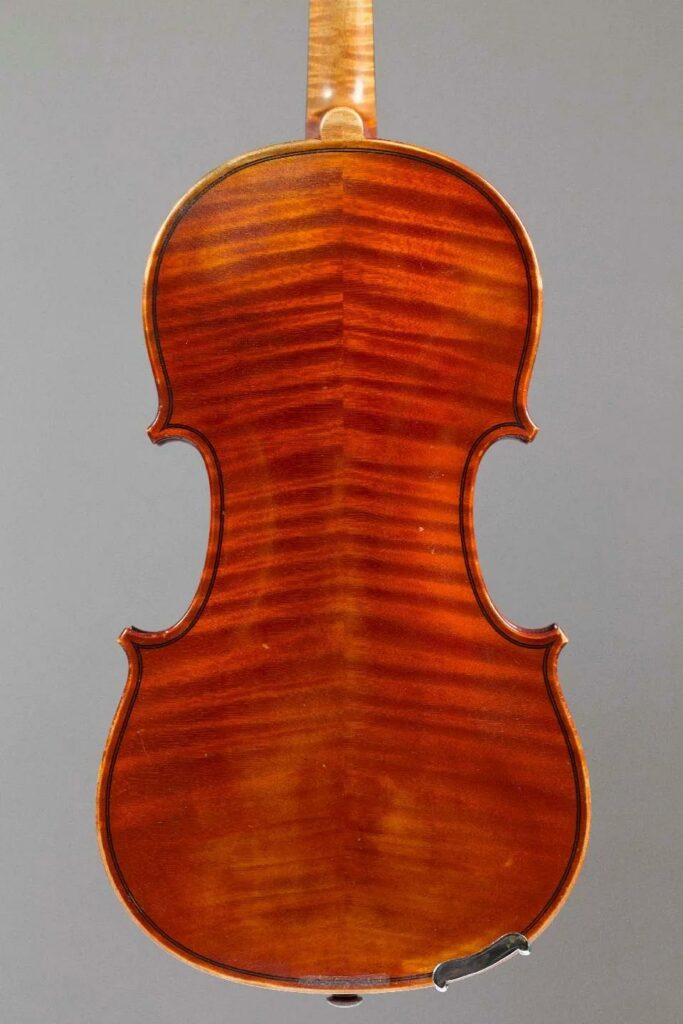
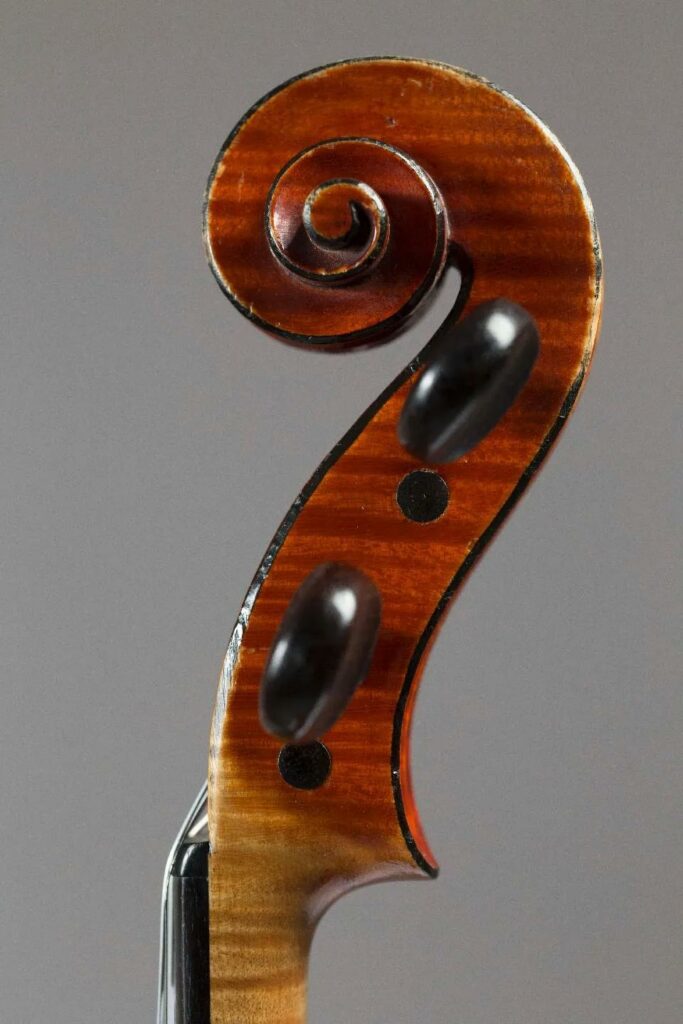
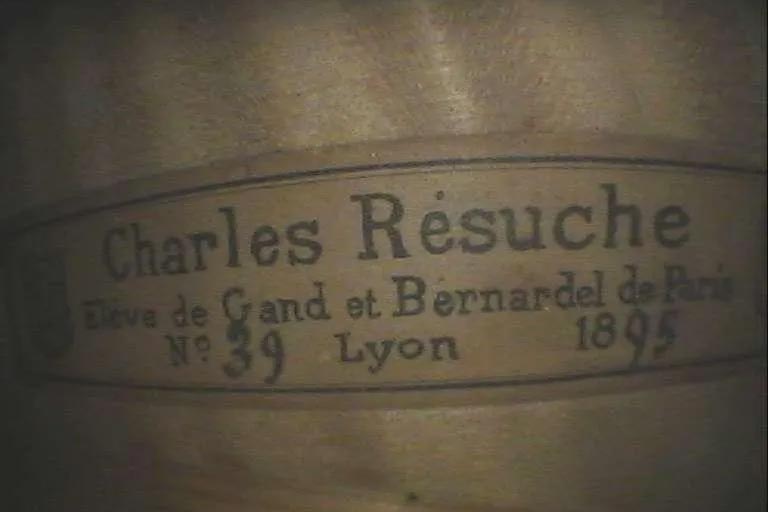
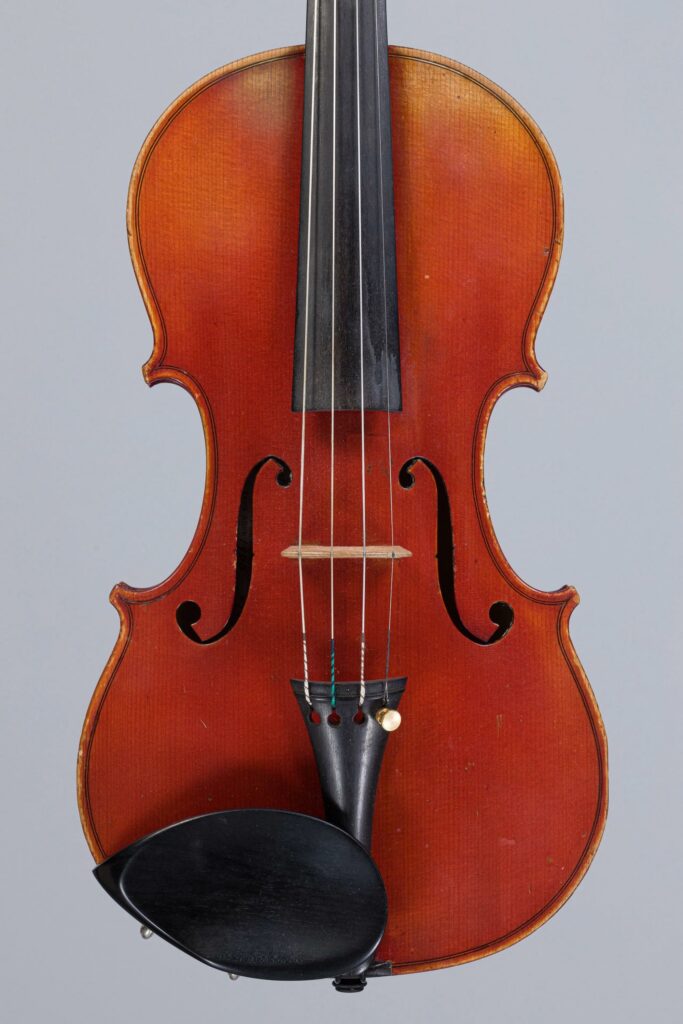
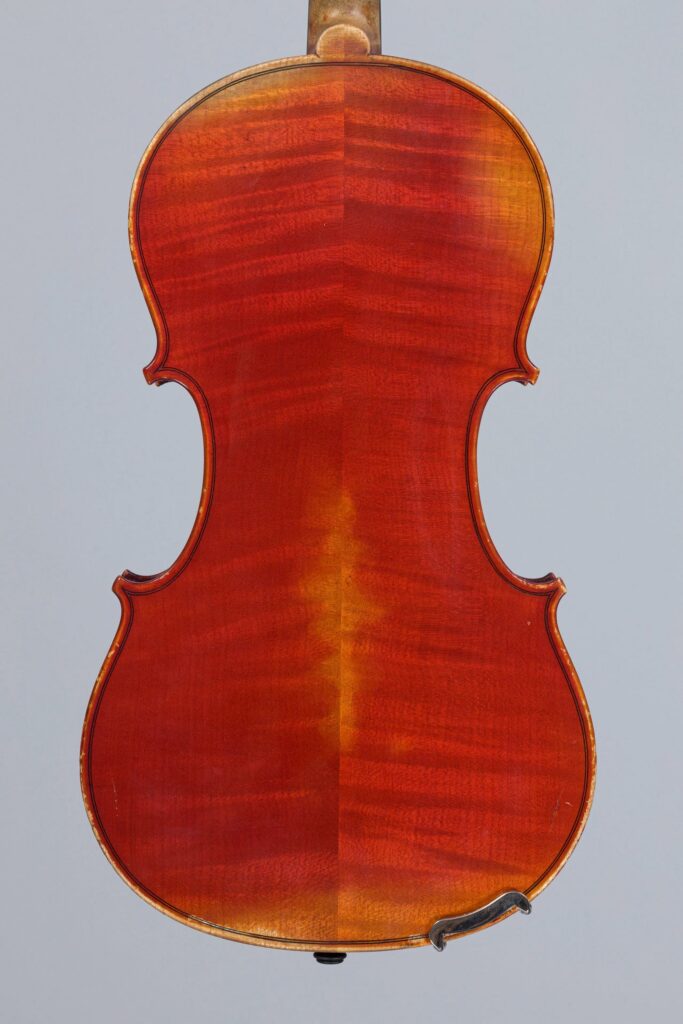
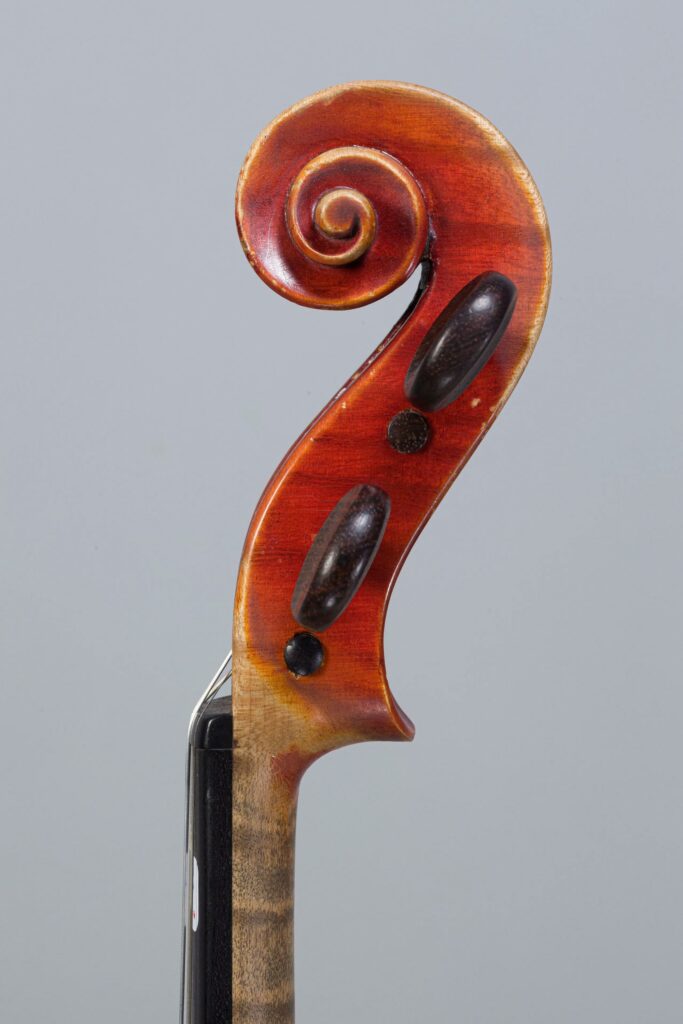
Nous vous donnons rendez-vous à Vichy Enchères pour les expositions de ces instruments le dimanche 26 novembre après-midi, les lundi 27 et mardi 28 toute la journée, ainsi que les matinées du mercredi 29 et jeudi 30 novembre. Ne manquez pas leur mise aux enchères le jeudi 30 novembre, à partir de 14h ! A très vite !
The names of Silvestre, Blanchard, Boulangeot, Vissenaire, Poirson, etc. are all evocative of violin making in Lyon of the 19th and 20th centuries. These makers will be well represented at Vichy Enchères on 30 November 2023. It provides us with an opportunity to take another look at this, little studied, school of violin making.

The history of violin making in Lyon dates back to the 16th century, well before the time of its famous 19th century violin makers. Lyon, at that time, was a prosperous city with close commercial relations with Italy, and was importing luxury goods popular with the aristocracy. The city was also an important cultural centre, and a cradle of new ideas, frequented by Christian humanists, including Erasmus and Rabelais. It is in this context that Gaspar Tieffenbrucker, also known as Gaspard Duiffoprugcar, settled in Lyon. At the time, the rebec was an instrument in vogue, and Tieffenbrucker decided to add to it a fourth string in order to increase its range. As a result, he is often considered as the inventor of the violin. At the same time, several violin makers settled in Lyon, mainly from Tyrolean families, making the city an important centre for violin making in the 16th century. In the 17th century, political power was centralized in Paris, leading to Lyon losing its privileges. The middle classes, who had prospered thanks to their monopolies, were now entering economic decline. The few violin makers who survived did not leave a major mark on the history of violin making, as they were hindered by the lack of professional musicians established in Lyon at the time. Indeed, the cultural policies of Louis XIV and Louis XV did not encourage musical exchanges and, at the end of the 17th century, France only had 46 violin makers, compared to around 400 in Italy and the other regions of the German Empire.



At the end of the reign of Louis XV, cultural policy once again encouraged artistic exchanges, mainly with the Holy Roman Empire and Italy. In the 18th century, several renowned luthiers were active in Lyon, including Meriotte and Pommier. A gradual revival of violin making took place at the end of the century, accelerated by the arrival in France, in 1782, of the famous Italian violinist Giovanni Battista Viotti. He was accompanied by his Stradivarius, which he showcased and became the new standard of perfection, to which Parisian violin making and, by extension, Lyon violin making, aspired. At the beginning of the 19th century, Lyon became an important military centre (see the following article), which led to the development of military music and wind instrument making. Meanwhile, the economic boom experienced by Lyon benefited the activity of stringed instrument makers. Many of them left to learn their trade in large Parisian workshops, before returning to Lyon to set up shop.
These 19th century makers from Lyon, who were trained according by Parisian makers, themselves influenced by Italian masters, nonetheless developed an individual style. To meet the growing demand for instruments, they sometimes collaborated with Mirecourt makers. Although the term “Lyon school” is commonly used, it does not refer to a school of making per se, but rather to a group of violin makers who flourished in Lyon in the 19th century and who, despite each having their very individual style, shared certain ways of doing things, whether from a technical or visual point of view. Jean-Frédéric Schmitt, the author of one of the rare works on violin making in Lyon, points out in particular that instruments from Lyon from this period frequently have false pegs, angular “cul-de-poules” (back of the head), “U”-shaped slides, and varnishes that are often very red[1].
[1] J.F. Schmitt, La lutherie lyonnaise, 1991



The Silvestres were among the first violin makers to settle in Lyon in the 19th century and, as such, were instrumental to the revival of violin making there. Pierre Silvestre was born on 9 August 1801 in Sommerviller to a father who, unusually, was a monk before becoming a teacher after the French Revolution. In 1818, then aged 17, Pierre Silvestre began his apprenticeship with Laurent Blaise in Mirecourt, where he acquired the basic violin making skills. His desire to perfect his craft led him to Paris, where he joined Nicolas Lupot’s workshop. When the latter died in 1824, he joined the workshop of Charles-François Gand (“Gand Père”). He returned to Lyon in 1829, where he set up his workshop Place des Terreaux. Certain instruments from that period are very different from those he produced later on, and it is not impossible that they were actually made by Mirecourt makers, from whom Pierre Silvestre would have enlisted the help in order to meet the demand.
In 1831, he joined forces with his brother Hippolyte and worked with him until 1848. The workshop was then renamed Silvestre Frères. They made many copies of Italian instruments together, and it is quite easy to spot Hippolyte’s hand, as he was still influenced by Vuillaume, his previous master.
Hippolyte left the workshop in 1848. This signalled the start of a new period in Pierre Silvestre’s production, often considered as his golden period, and which extended from 1848 to 1859.
During that period, he created high quality instruments, that stand out by their very beautiful and delicate varnish.

He also sometimes added small women’s heads to his instruments, decorating the necks and pegs with figurative inlays.
In 1844, he took part in the National Exhibition in Paris, where he won the bronze medal, and in 1855, his instruments were awarded an honourable mention at the Universal Exhibition in Paris, therefore confirming his reputation as a first-rate maker.
Upon his death in 1859, the business was taken over for a few months by Pichon, before he sold it to Hippolyte. Pierre Silvestre left his mark on the world of Lyon violin making and was among the first to contribute to its revival in the 19th century thanks to his high-quality instruments sought after for their sound.









Born on 14 December 1808 in Saint-Nicolas-de-Port, Hippolyte Silvestre followed the path of his brother Pierre by taking up an apprenticeship with Laurent Blaise in Mirecourt. At the end of the 1820s, just like Pierre Silvestre had done before him, he went to Paris to perfect his skills in the workshop of a great master: Jean-Baptiste Vuillaume. Finally, he joined his brother in Lyon in 1831 and worked with him until 1848. During this first period, the influence of Vuillaume is perceptible in his style, but he was also strongly influenced by the style of his brother Pierre. However, the varnish on his instruments was often thinner than Pierre’s.
Between 1848 and 1859, Hippolyte Silvestre set up on his own and produced high-quality instruments, like the remarkable violin in the sale on 30 November 2023, made around 1850-1855.
When Pierre Silvestre died in 1859, he took over his brother’s workshop and continued producing instruments stylistically similar to those of his brother.
In 1865, he finally handed over the workshop to his nephew, Hippolyte Chrétien Silvestre, ensuring the workshop remained in the family’s hands. Hippolyte Silvestre died on 3 December 1879 in Sommerviller, leaving behind a lasting legacy in the world of violin making.




Hippolyte Chrétien Silvestre, better known as “Silvestre Neveu” – in reference to his family connection with his uncle – was born on 1 April 1845 in Sommerviller. Like the makers of the family who preceded him, he completed his apprenticeship in Mirecourt, before joining the Lyon workshop. In 1865, when he was only 20, he succeeded his uncle at the head of the company.

His instruments met with great success at the various important exhibitions of his time. Indeed, he won the silver medal at the Lyon Exhibition of 1872, the progress medal at the Universal Exhibition in Vienna in 1873, the silver medal at the Universal Exhibition of 1878, the gold medal at the Universal Exhibition in Paris, and finally the Grand Prix at the Universal Exhibition of 1900. Another sign of the esteem in which he was held was that he received the Legion of Honour medal. In 1884, he left Lyon for Paris, where he settled on rue du Faubourg Poissonnière (successively at numbers 24, 20 and 25).
In 1891, he asked Ernest Maucotel, who was then employed in Salzard’s workshop in Moscow, to come work with him. They eventually joined forces in 1900 and founded Maison Silvestre et Maucotel, where he worked until his death in 1913. With Maucotel, they notably produced instruments influenced by Venetian masters. Finally, it is worth noting that many violins attributed to Hippolyte Chrétien Silvestre are probably the work of Blanchard, who worked in the workshop at the start of his career. According to Schmitt, these are the instruments stamped “H.C. Silvestre” made between 1873 and 1876, which were made by Blanchard, including their finishing and varnishing[2].
[2] J.F. Schmitt, La lutherie lyonnaise, 1991















If there is one name associated with Lyon violin making, it is definitely that of Blanchard. Born in Mirecourt, Paul-François Blanchard (1851-1912) is one of those itinerant makers who trained in the largest workshops before setting up on their own. Between Mirecourt and Paris, he trained with Jean-Auguste Darte, Jean-Baptiste Vuillaume and Silvestre (see above). After seven years with the latter, at the age of only 25, he set up on his own in Lyon in 1876.
On 30 November 2023, the very first violin made by Blanchard, made when he had only just opened his workshop, will be auctioned at Vichy Enchères! This is a historic instrument and an important discovery in the history of Lyon violin making. Dated 1876, this exceptional violin was made by Blanchard upon his arrival in Lyon, as confirmed by its label “Fait par Paul BLANCHARD / P.B. a Lyon en 1876 No 1”. It was made on the Guarneri del Gesu model, is branded inside, and bears an inscription with his signature, the year, the location and the number. Considering he made around 1,200 instruments, it is amazing that his very first instrument would resurface today. More than an instrument, it is a historical testimony and represents a key milestone in Blanchard’s career.
As J.F. Schmitt points out, we can distinguish two major periods in his production. The first covers the beginning of his career until 1885, during which his output is influenced by the style of Silvestre. At that time, his instruments’ purflings were particularly thin and he was emulating the Italian masters, re-interpreting the models of Stradivari, Amati and Guarneri – as is the case with this very first violin.











The year 1885 marked a new phase in Blanchard’s production. The style of his instruments evolved, as demonstrated by the second violin in the sale on 30 November 2023, made in 1892. Generally speaking, the edges of his instruments were hollowed out less deeply and the purflings, that were previously rather thin, tended to become wider. Blanchard also modified his varnish to obtain red tints that were sometimes lively and shiny, reminiscent of enamel. This second violin, numbered 265, also bears Blanchard’s label, iron brand and two handwritten signatures inside.
It was at that time that he first took part in exhibitions, in 1889, at the Universal Exhibition in Paris, where his work was awarded a silver medal. The report “Lyon at the Universal Exhibition” reads as follows:
“His workshop has become the meeting place for all Lyon dilettantes, amongst whom he has many friends; artists and amateurs meet there, discussing musical art. Mr. Blanchard exhibited in Paris a double quartet of bowed instruments, including: four violins, two violas, two cellos of excellent sound; the artists from Lyon appreciated the quality of these instruments so much that they acquired them before they had even left for Paris.”
Adrien Storck et Henri Martin, Lyon à l’exposition universelle de 1889, Volume 1
Blanchard also played an important role in the musical life of Lyon. He was the official violin maker of the city’s conservatory and took on the role of president of the Association of violin makers and dealers of Lyon. When he died in 1912, Emile Boulangeot succeeded him in his various posts.






Born in Mirecourt in 1877, Emile Boulangeot followed the traditional apprenticeship route, first training in his hometown, with Emile Laurent, before continuing his training in Paris. There, in 1893, he joined Gustave Bernardel’s workshop, which became Caressa et Français after Bernardel left.
His time in Paris ended in 1909, when he decided to join Paul Blanchard in Lyon. In particular, he was in charge the distribution of a range of instruments created by Blanchard, called “LUGDUNUM”. Boulangeot also worked with Morizot Père and Maison Bazin, as attested by bows sold by Vichy Enchères.
In 1913, shortly after Blanchard’s death (1912), Émile Boulangeot took over management of the workshop and became the official violin maker of the Conservatoire and the Société des Grands Concerts de Lyon – succeeding Paul Blanchard in these positions. This marked a real turning point in his career, leading him to work with the greatest musicians in Lyon.
In 1928, Boulangeot ceased his activity. His production was then estimated at around 175 violins, 7 violas and 28 cellos[3]. His instruments are notable for their elegance and a red-orange oil varnish.
On 30 November 2023, at Vichy Enchères, a late violin by Boulangeot will be sold. It was made in 1925, when he was at the height of his powers, and it is numbered 122 and bears the maker’s label and brand. This example provides a good overview of his craftsmanship and the knowledge he acquired over the years. When he retired, Georges Coné took over his workshop.
[3] J.F. Schmitt, La lutherie lyonnaise, 1991








Georges Coné (1877-1950) was born in Mirecourt in 1877 and began his apprenticeship with H. Durand. In 1896, he joined Paul Blanchard’s workshop in Lyon. He worked with him until 1912, and then in various workshops abroad. In 1928, he returned to Lyon to replace Emile Boulangeot as violin maker of the Conservatoire and the Société des Grands Concerts de Lyon and set up shop at 77, and later 79, rue de la République. Coné was inspired by the Stradivari model when creating his instruments, which feature a red-orange to red-brown oil varnish, and are sought after for their powerful sound. His son, Robert Coné, worked alongside him very early on. Indeed, the earliest mention of their joint work is on a label dated 1930, when Robert was only ten years old! Robert Coné succeeded his father upon his death in 1950.
Georges Coné’s instruments bear labels mentioning the production date and number, and sometimes include the name “Georges Coné et fils”. Coné also produced a series of instruments bearing the labels “Copie de Nicolas Lupot” or “LUGDUNUM”, which were a continuation of the work of Blanchard and Boulangeot.
He also sometimes indicated on his labels that the instrument was “finished under my direction” or “made in the workshop of Georges CONÉ”. In addition, his workshop sold bows bearing his stamp but manufactured by other bowmakers, including Victor Fétique, François Lotte and Emile Auguste Ouchard.
Georges Coné’s work was rewarded on numerous occasions. In particular, he received silver and gold medals at the Universal and International Exhibitions in Paris (1889 and 1900) and the Grand Prix at the International Exhibition in Lyon (1894 and 1914). Following in the footsteps of Boulangeot, he became violin maker of the Conservatoire and the Société des Grands Concerts.
The beautiful violin in the Vichy Enchères sale on 30 November 2023, made in 1938 by Georges Coné, shows the extent of his knowledge, which builds on the influences of Blanchard and Boulangeot to arrive at a personal style. It is numbered 73, bears the maker’s label and brand, and features a varnish typical of the Lyon school.









The Vissenaire family left a lasting mark on violin making and its name is directly associated with the craftsmanship of Lyon. Louis-Nicolas Vissenaire, aka “Vissenaire Père”, was amongst the first to settle in Lyon during the first third of the 19th century, and he was behind a thriving workshop which gave new impetus to 19th century Lyon violin making. He was born in Mirecourt, but decided very early to settle in Lyon, Place Confort – now Place des Jacobins. His instruments, of large proportions, were often designed after Parisian models. Unfortunately, few of Vissenaire Père’s instruments have survived; they remain rare on the market and in collections. The violin for sale at Vichy Enchères on 30 November 2023, made in 1830, gives us a great opportunity to learn more about this violin maker.
His eldest son, usually referred to as Vissenaire II (first half of the 19th century – c.1880), joined him in the workshop after completing his apprenticeship in Paris, under Bernardel Père. He took over the workshop around 1870 and worked with his brother Nicolas, known as Vissenaire III, who was until then second violin at the Lyon theatre. The instruments made by Vissenaire Père and his sons share certain similarities in their construction, in particular the positioning of the purflings and the f-holes, very close to the edges. However, the sons’ work is also influenced by Bernardel, Gand and even Lupot. Their instruments are also shorter than their father’s and are covered with a soft orange-red varnish. The two brothers were appointed violin makers of the Lyon Conservatoire and produced instruments labelled “Vissenaire Frères”.


The Vissenaires also stood out for the originality of their guitars, whose innovative construction included “horns” on the upper body. At a time when the guitar was experiencing a transition between its baroque and modern form, opening the field of possibilities, the Vissenaires proposed an unusual form reflecting their vision and innovative taste. (The same spirit drove Michelot, around the same time, to create the boat guitar.)
The Vissenaire family contributed significantly to the revival of violin making in Lyon in the 19th century, leaving behind high quality instruments and unusual guitars.



Elophe Poirson is one of the most remarkable figures in this overview. He was born in Landaville on 6 September 1840 and died in Lyon in 1918, and left his mark on Lyon violin making even though he was long considered as a mere amateur, due to his activity as a telegraphist, which he carried out in parallel. Indeed, he was employed by the telegraph office before being appointed head of the central office at the Sainte-Foy-lès-Lyon Telegraph. He is believed to have taken up violin making after accidentally breaking a violin[4] which he proceeded to repair without specialist tools. This gave him a taste for the craft, and he made around 300 instruments from 1876 to 1918[5]. His name appeared in the Directory of Artists and Dramatic and Musical Education in 1895, and from 1905 to 1909, and is associated with several patents for tools facilitating the work of violin makers, such as chin rests and hand vices[6].
His work was recognized in 1889, during the Universal Exhibition in Paris, in which he won the bronze medal for a quartet of stringed instruments.
He also received the support of the violinist Martin-Pierre Marsick, whom he met during a visit to Lyon, during which the latter was “amazed”[7] by his instruments, and which prompted him to send a letter to the members of the jury of the Universal Exhibition:
“We are in the presence of a true artist, a man of conviction with the faith of the great naive without which all art is hollow, false and useless. “This is why, gentlemen, I have taken it as my artistic responsibility to make known the efforts worthy of encouragement of Elophe Poirson, and to present to you the first result of his work. I should add that, won over by his enthusiasm, I could not, as a sincere artist, at risk of betraying our great art, refuse my support and my encouragement to a man for whom the mere sight of a violin touches his soul, Elophe Poirson, gentlemen, I am convinced, will do great honour to his country. M.-P. MARSICK”[8].
Finally, we should note that part of Elophe Poirson’s activity consisted of varnishing instruments, many of which came from Turin.
Instruments bearing a “bis” next to the number on their label were varnished a second time, later, by this perfectionist maker. The majority of his instruments are beautifully made and have a dark red varnish on a golden ground.




[4] Le Salut public, 15 août 1889
[5] René Vannes, Dictionnaire universel des luthiers, 1959
[6] Chann Cornilleau, Elophe Poirson, École nationale de lutherie, Mirecourt, Diplôme des Métiers d’Art, 2021
[7] Le Salut public, 15 août 1889
[8] Le Salut public, 15 août 1889















Paul-Victor Lorange (1873-1920) was born in Mirecourt on 9 September 1873. He did his apprenticeship with Blanchard between 1890 to 1896, before leaving Lyon to join the workshop of Gautié, and then that of Mangenot. He returned to Lyon in 1898 and established his own business there in 1900. His workshop was located on rue Childebert, then 67 rue de l’Hôtel de Ville, and finally 36 rue Ferrandière. In 1919, a year before his death, he bequeathed it to André Conot. He is known to have made only just over 70 violins.
“His production, of around 70 good quality violins, remained limited. This is explained in large part by the fact that he was very active as a restorer.”
J.F. Schmitt, La lutherie lyonnaise, 1991
Unlike many makers of his time, he was not heavily influenced by the Parisian school or by his successive masters. On the contrary, he developed a personal style.
Paul-Victor Lorange’s son – Paul Lorange – was also a violin maker and worked for a time in the workshop of Charles-Louis Bazin, where he learned about bow making without, however, choosing to become a bow maker. Attesting to this, two bows from Maison Bazin stamped Lorange will be sold on 30 November 2023 at Vichy Enchères.
In 1927, Paul Lorange (son) became an associate of Paul Diter in Marseille (the latter was also a student of Bazin). According to René Vannes, 40 violins bear the label “Diter et Lorange”. In 1933, Paul Lorange eventually took full charge of the Marseille workshop. On 30 November 2023, a bow stamped “P. Lorange a Marseille” and a beautiful violin from 1947 bearing the number 41, both by Paul Lorange in Marseille, will be auctioned.











Charles Resuche was born in Mirecourt on 11 December 1858. He completed an apprenticeship with Didion, before joining the workshop of Gand & Bernardel. In 1896, he joined forces with his friend Justin Diter (brother of Paul Diter mentioned above), with whom he opened a workshop in Passage de l’Argue in Lyon, before moving to rue de l’Hôtel de Ville. However, this association was short-lived, and was terminated in 1897. Resuche then left Lyon and moved to Bordeaux.







We look forward to seeing you at Vichy Enchères for the viewing of these instruments, on Sunday 26 November in the afternoon, Monday 27 and Tuesday 28 all day, as well as the mornings of Wednesday 29 and Thursday 30 November. Don’t miss their auction on Thursday 30 November from 2pm! See you then!